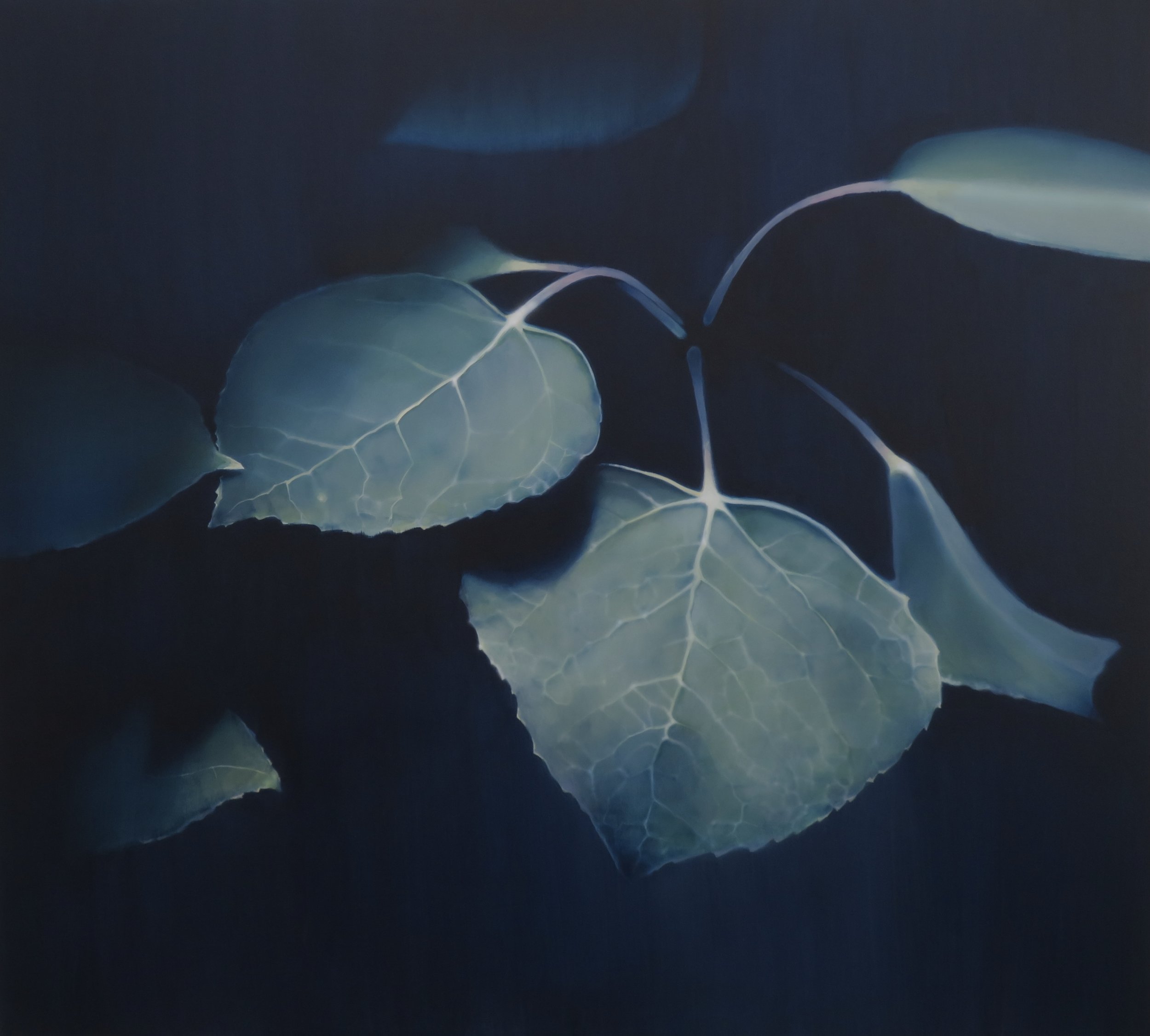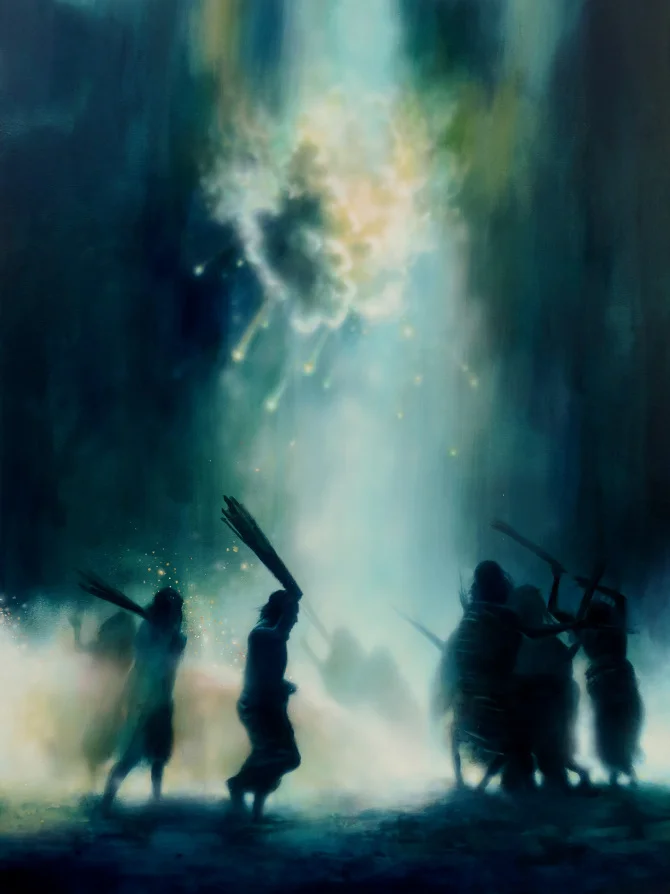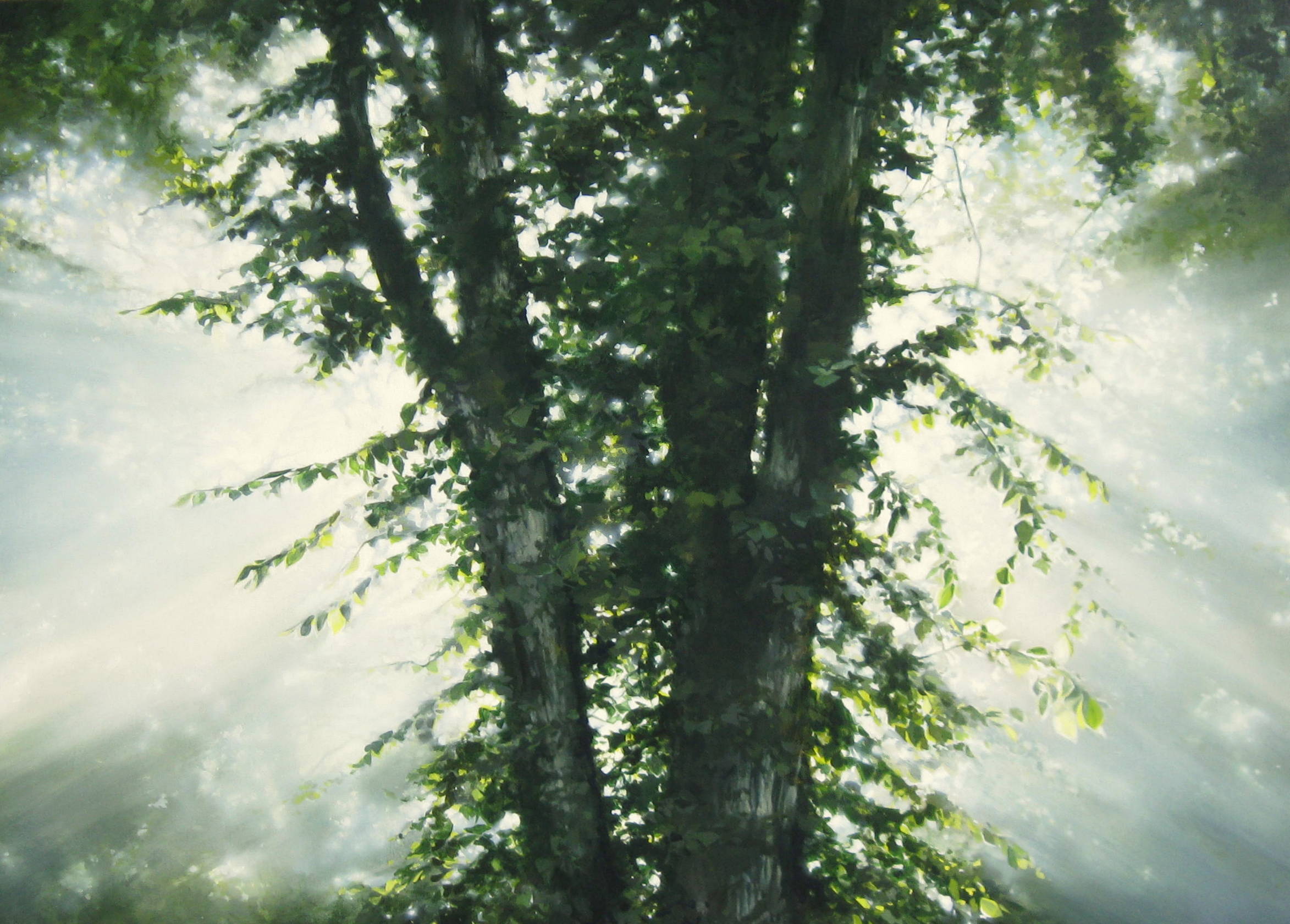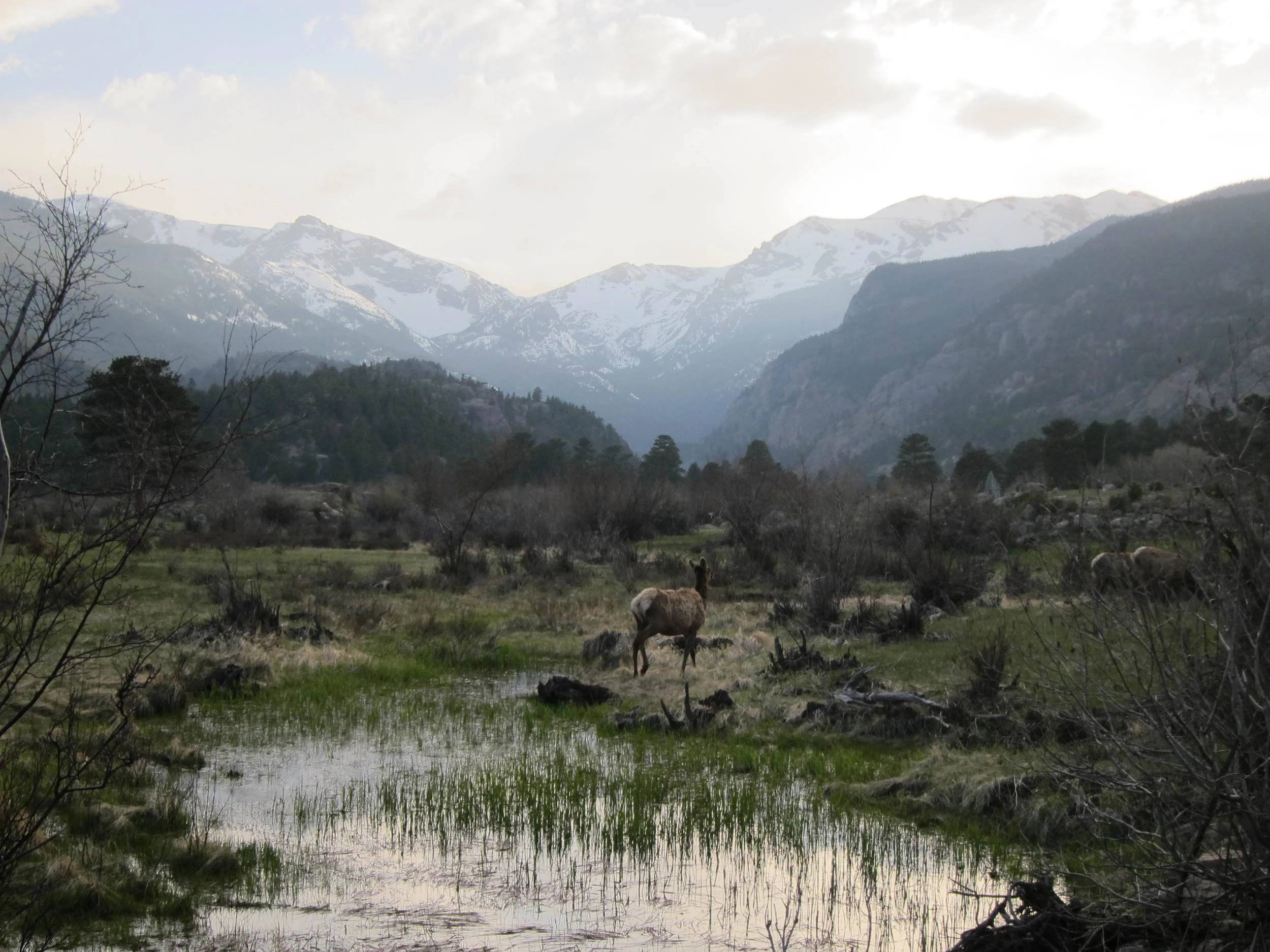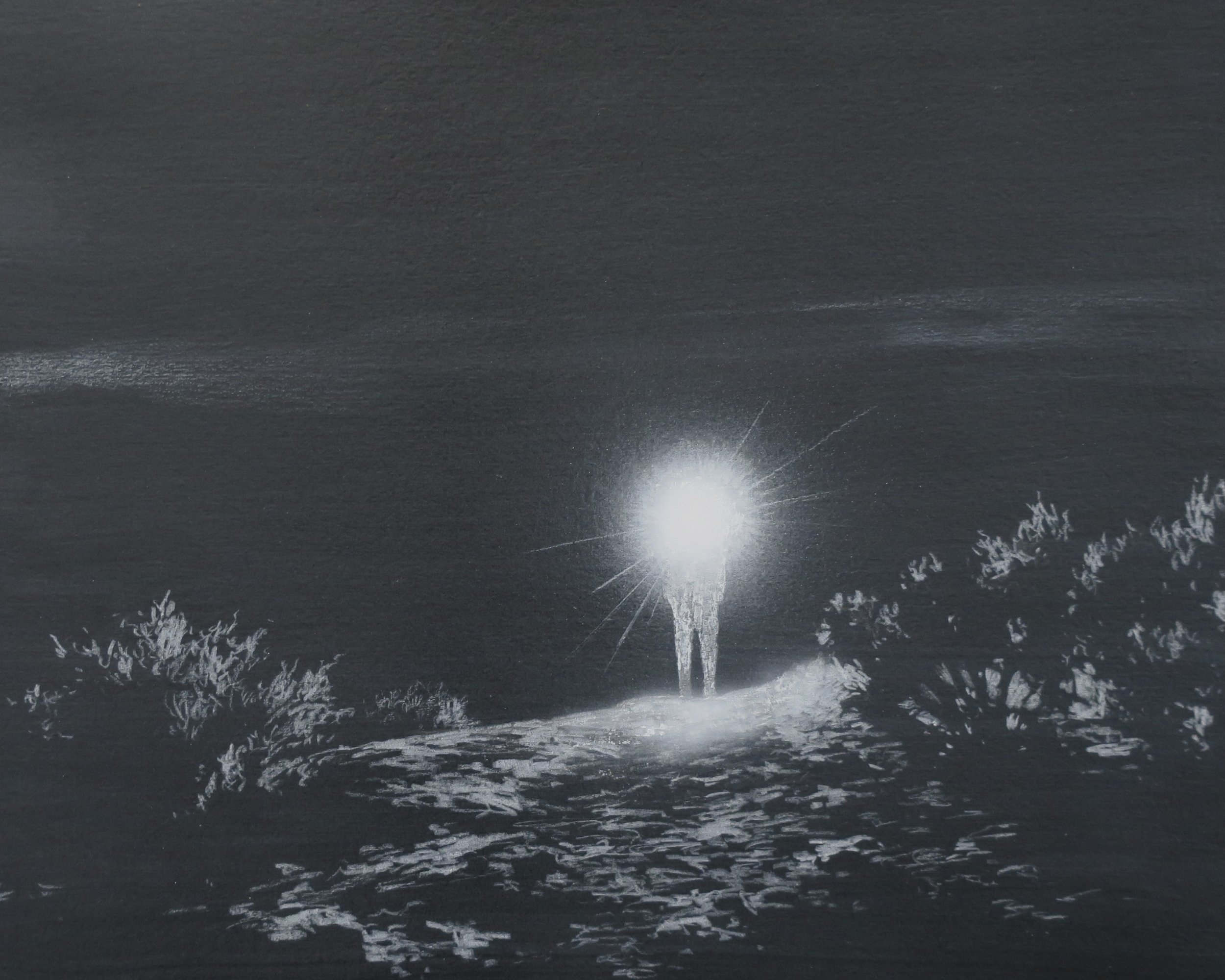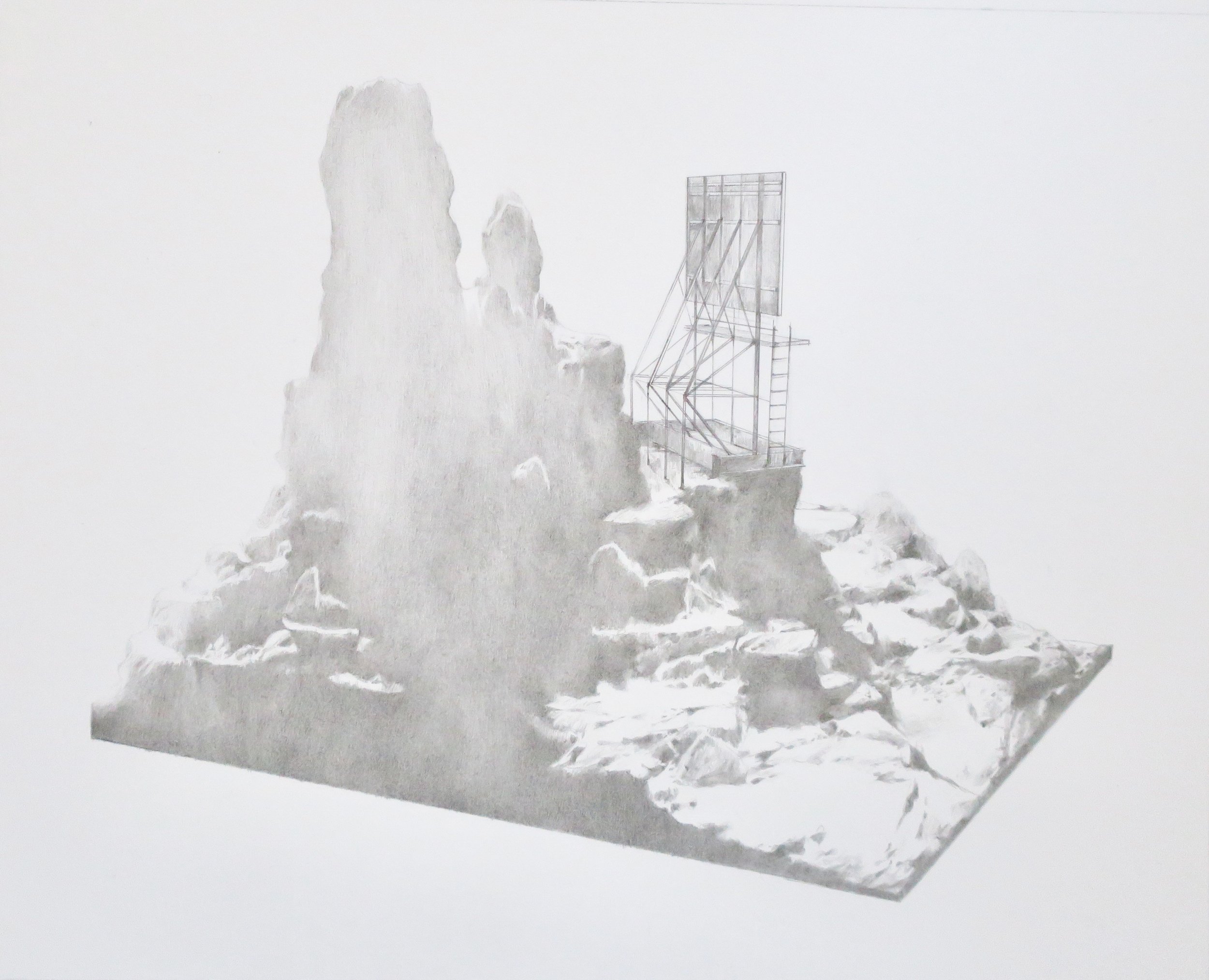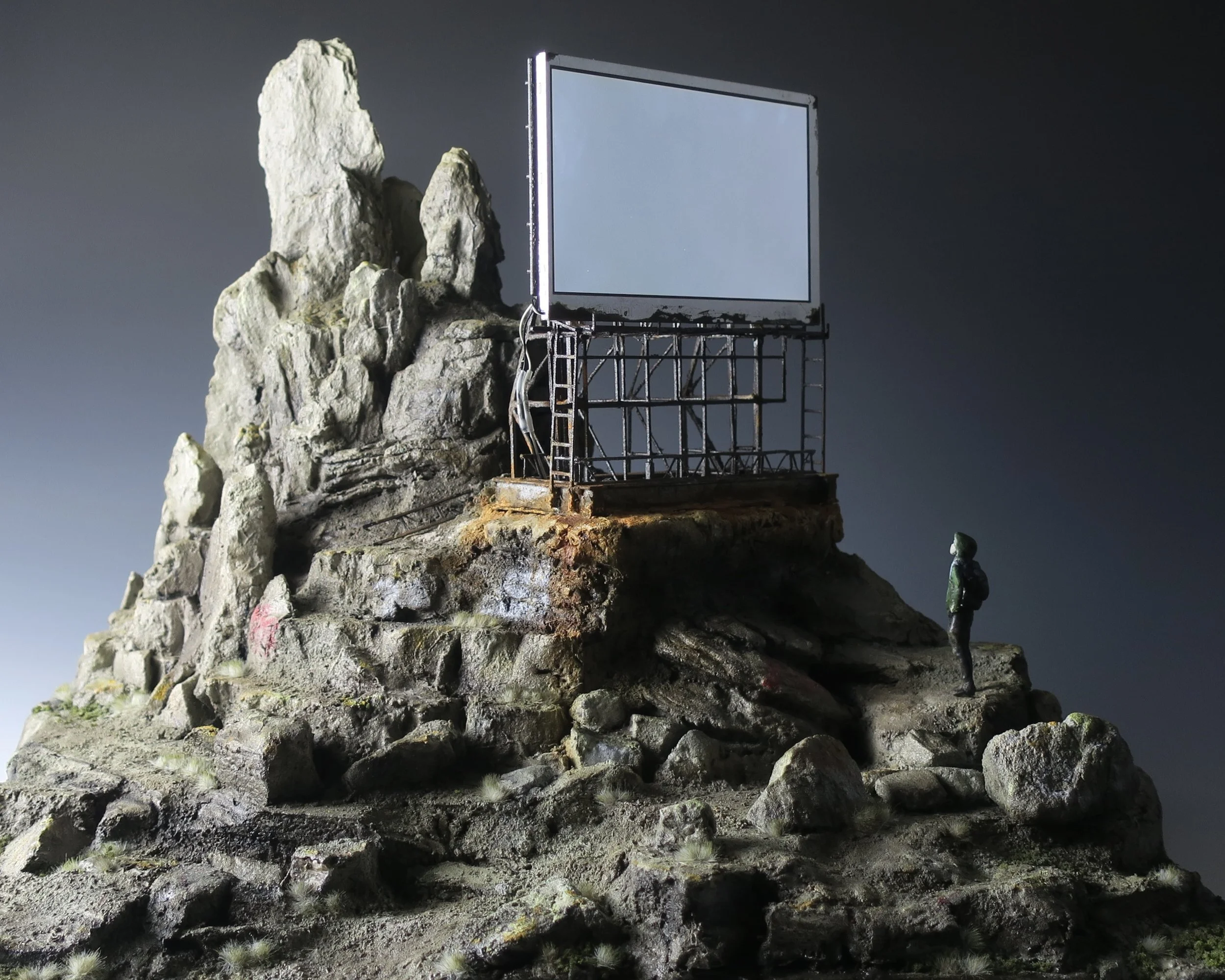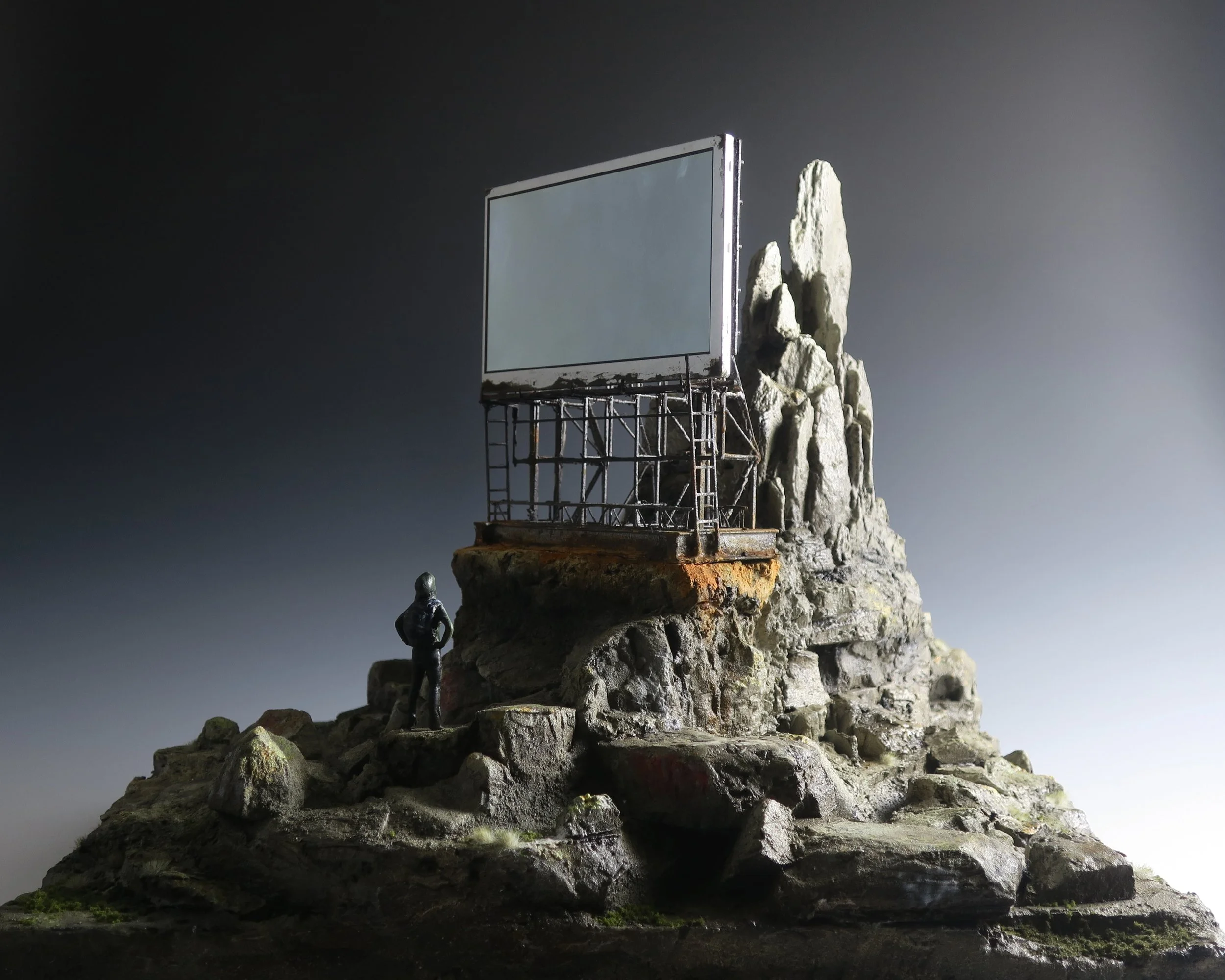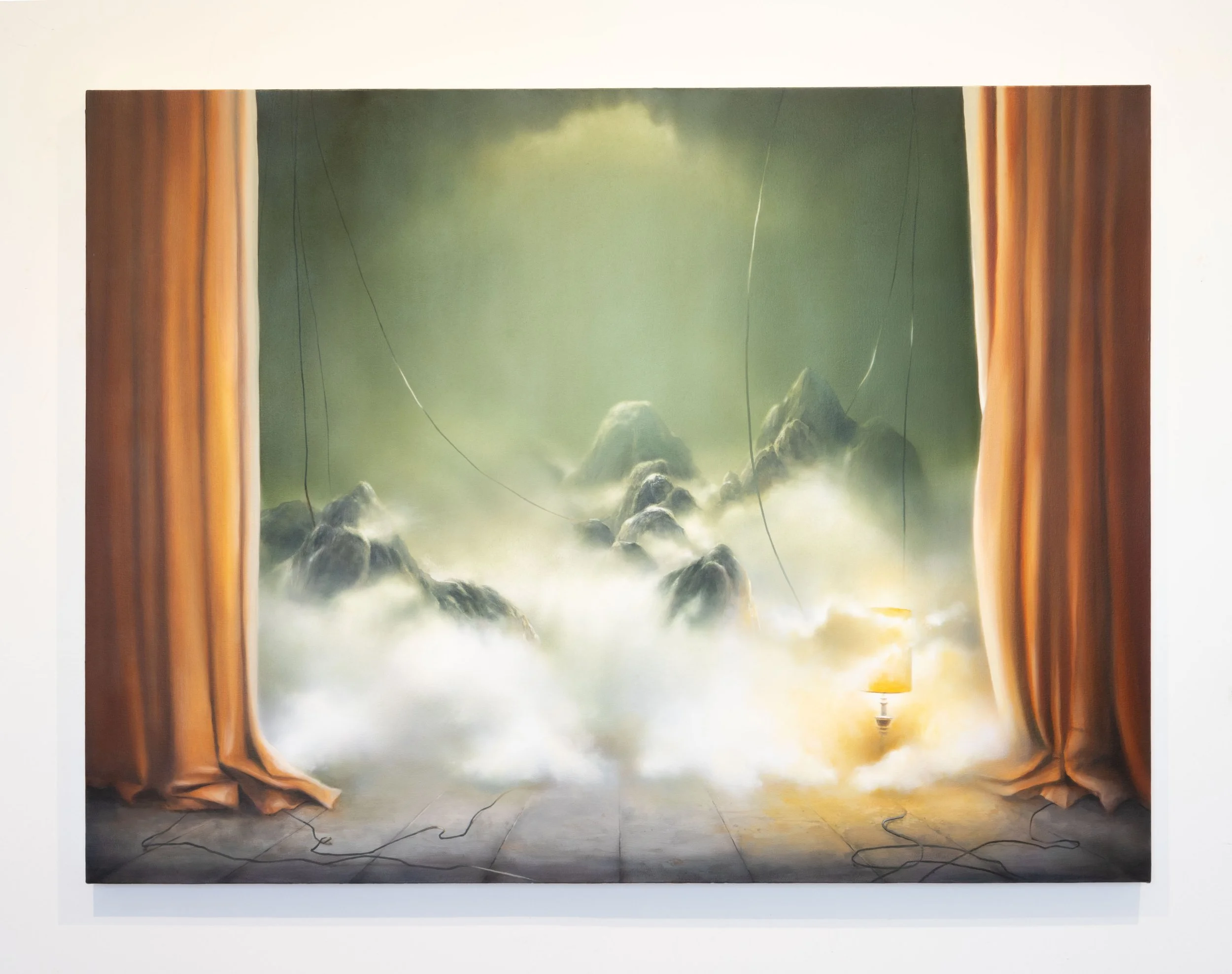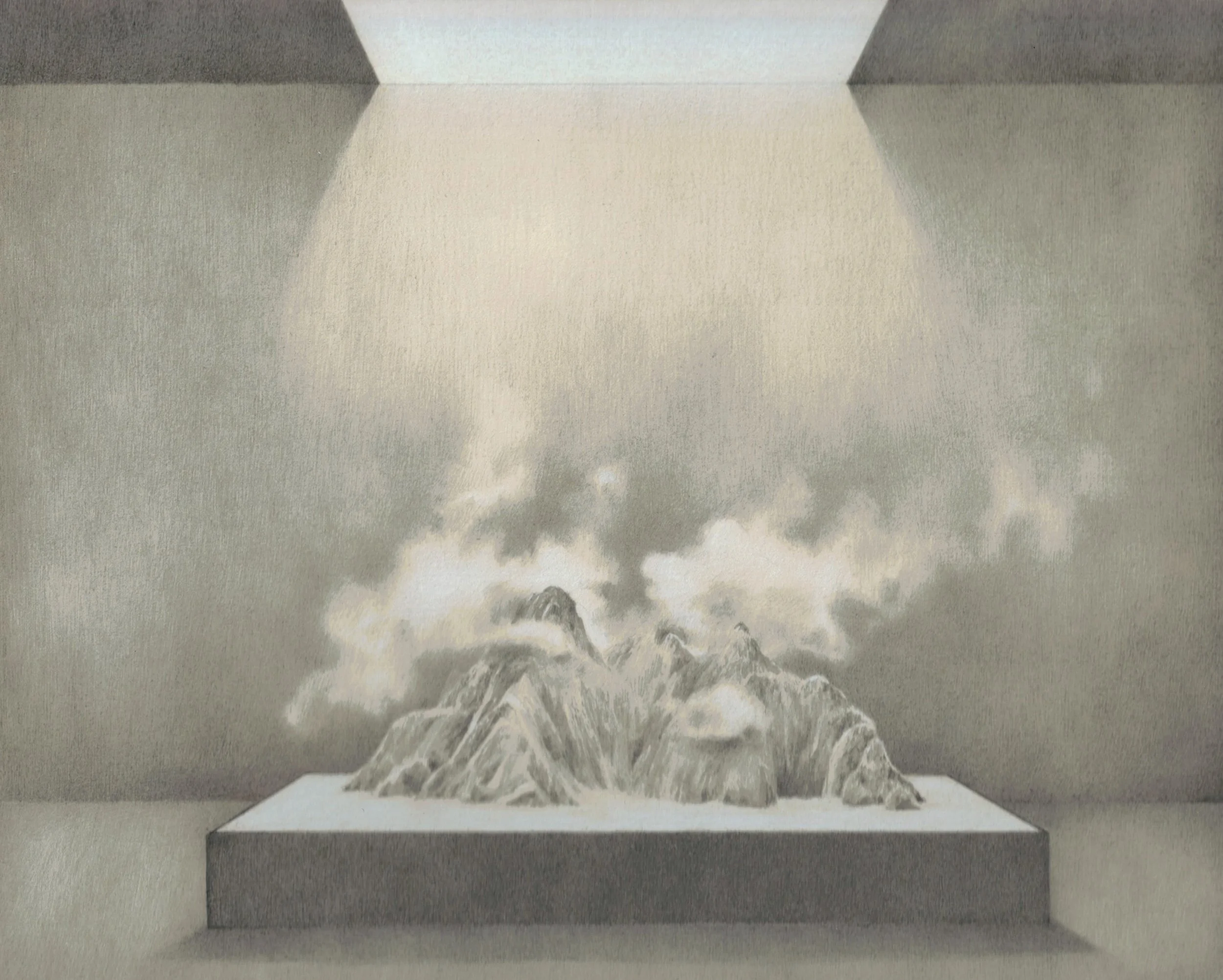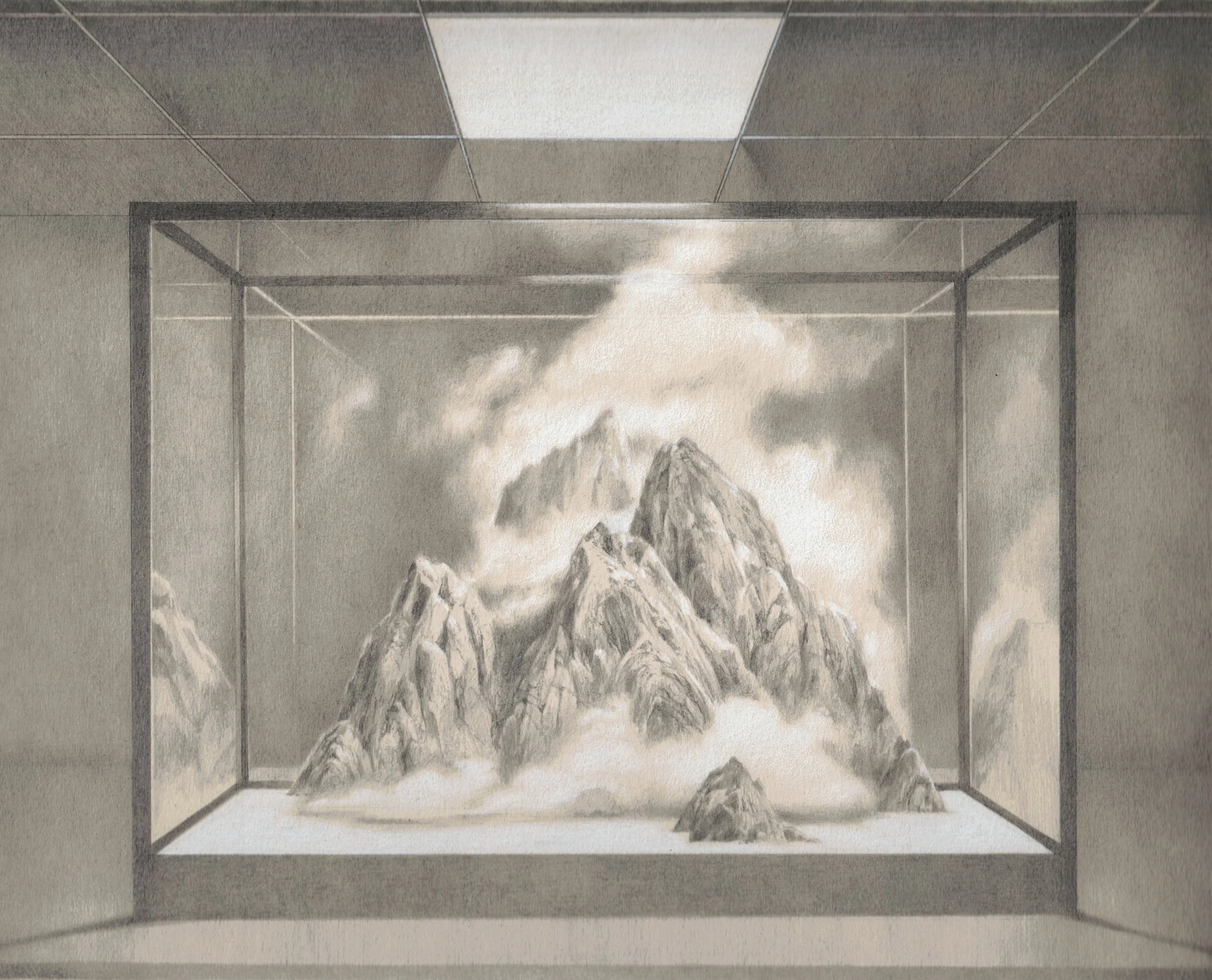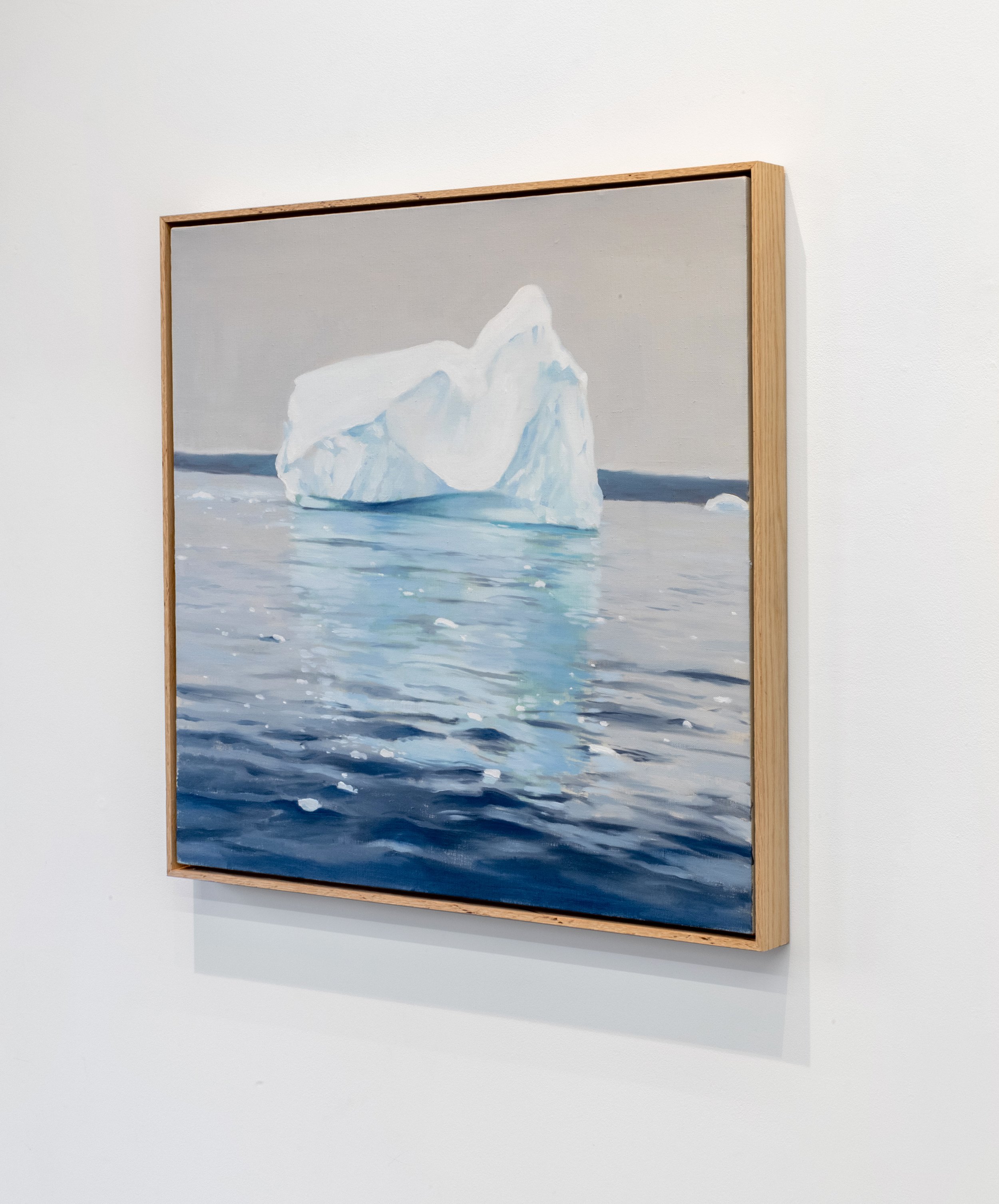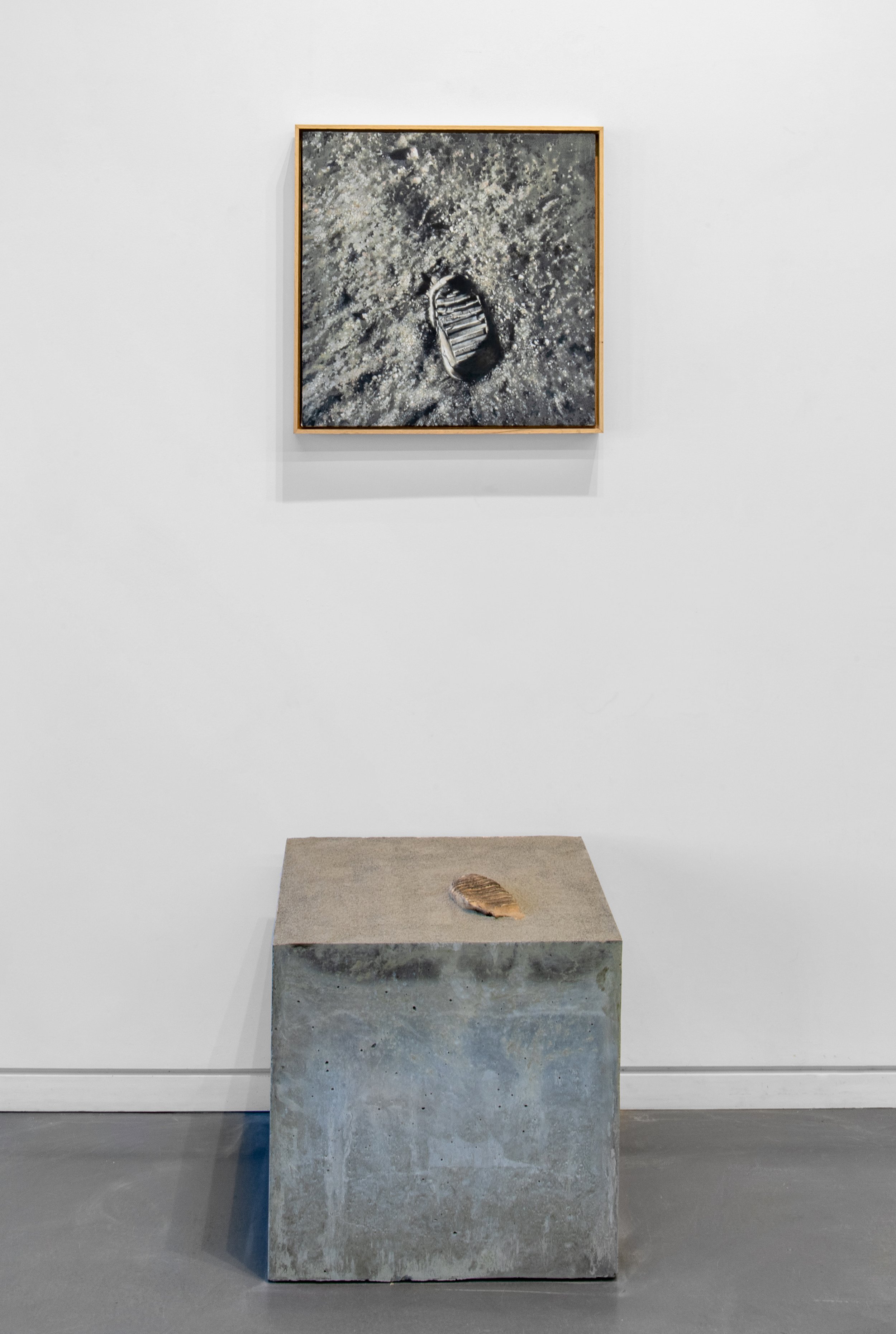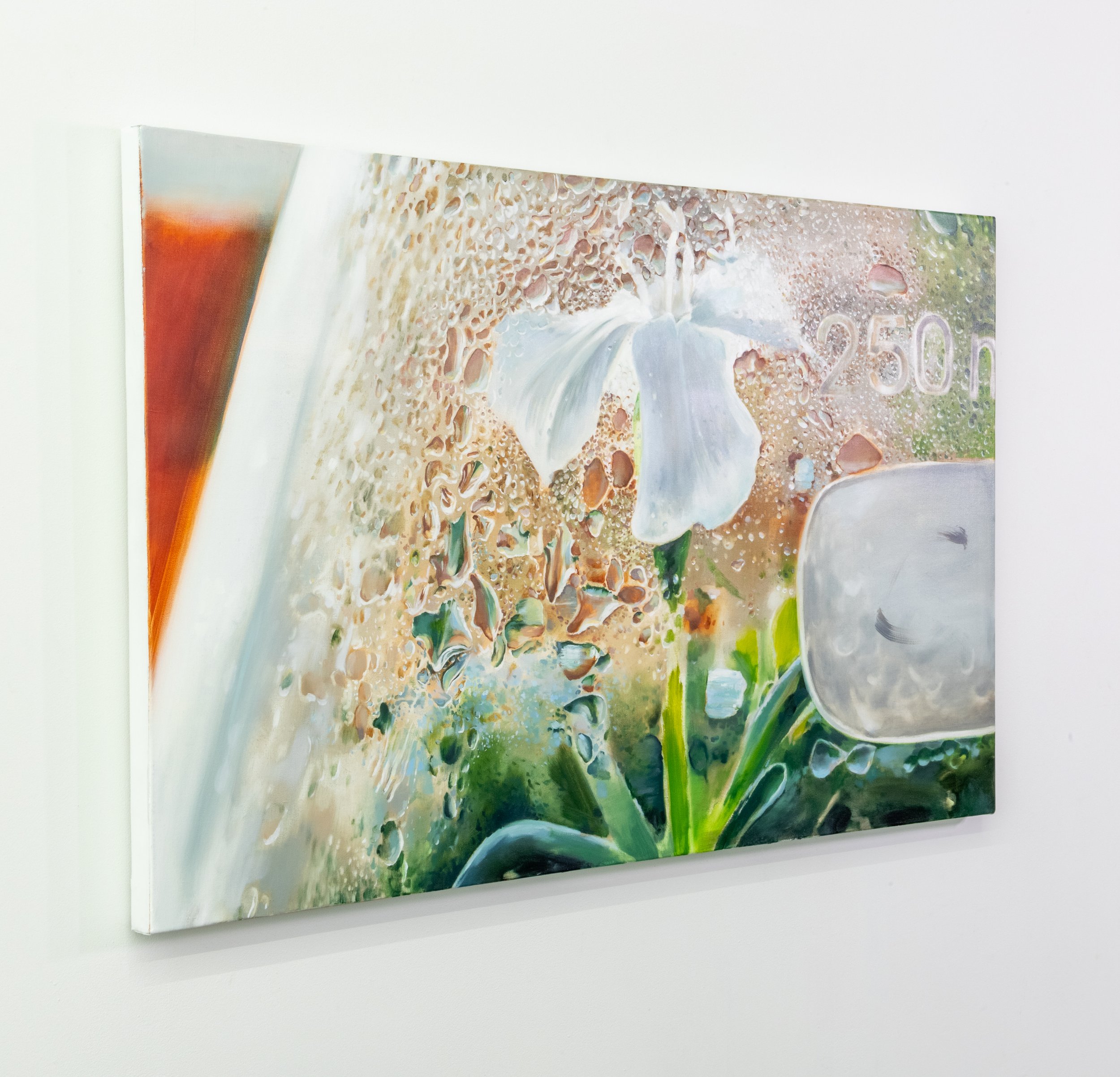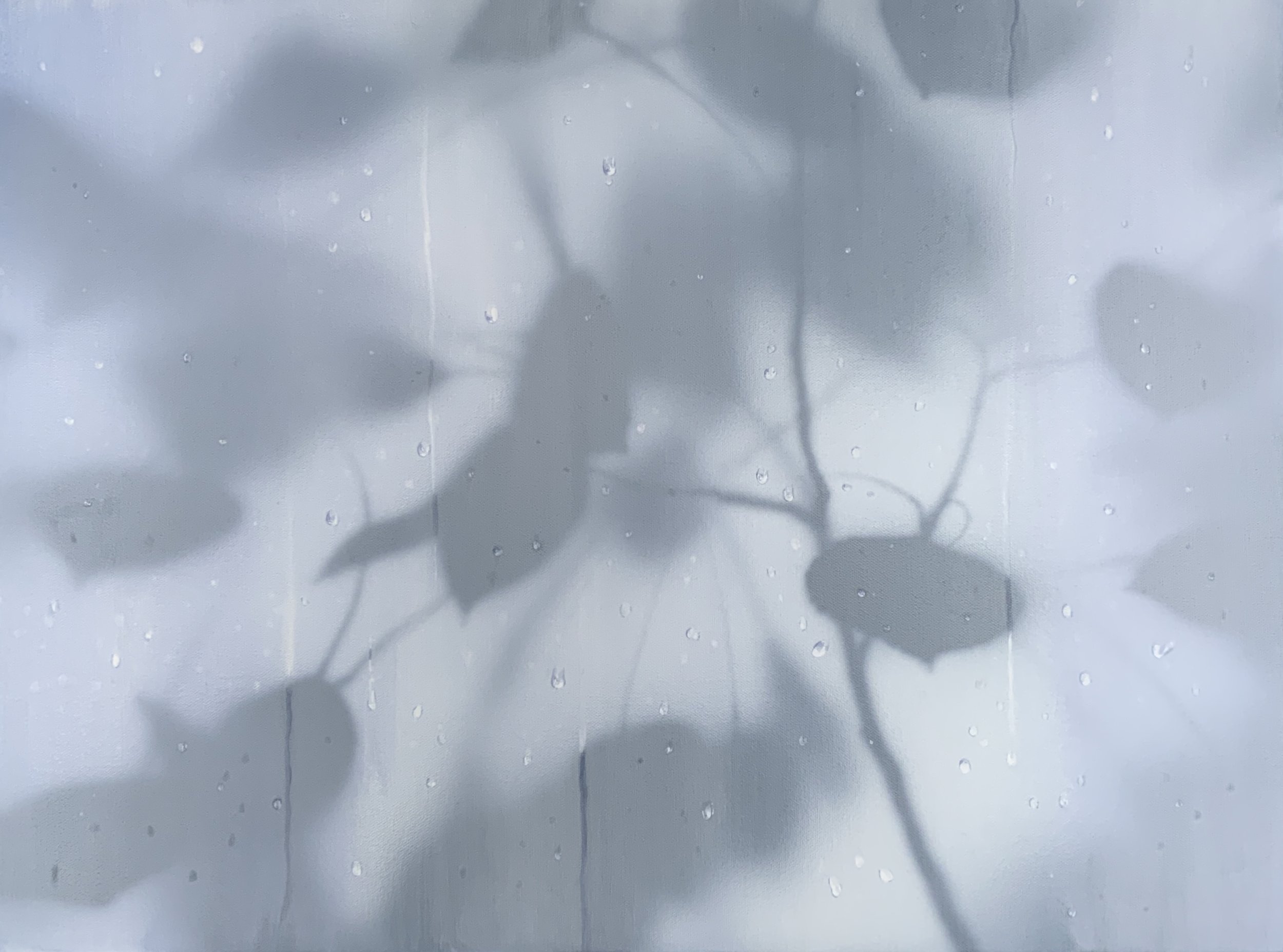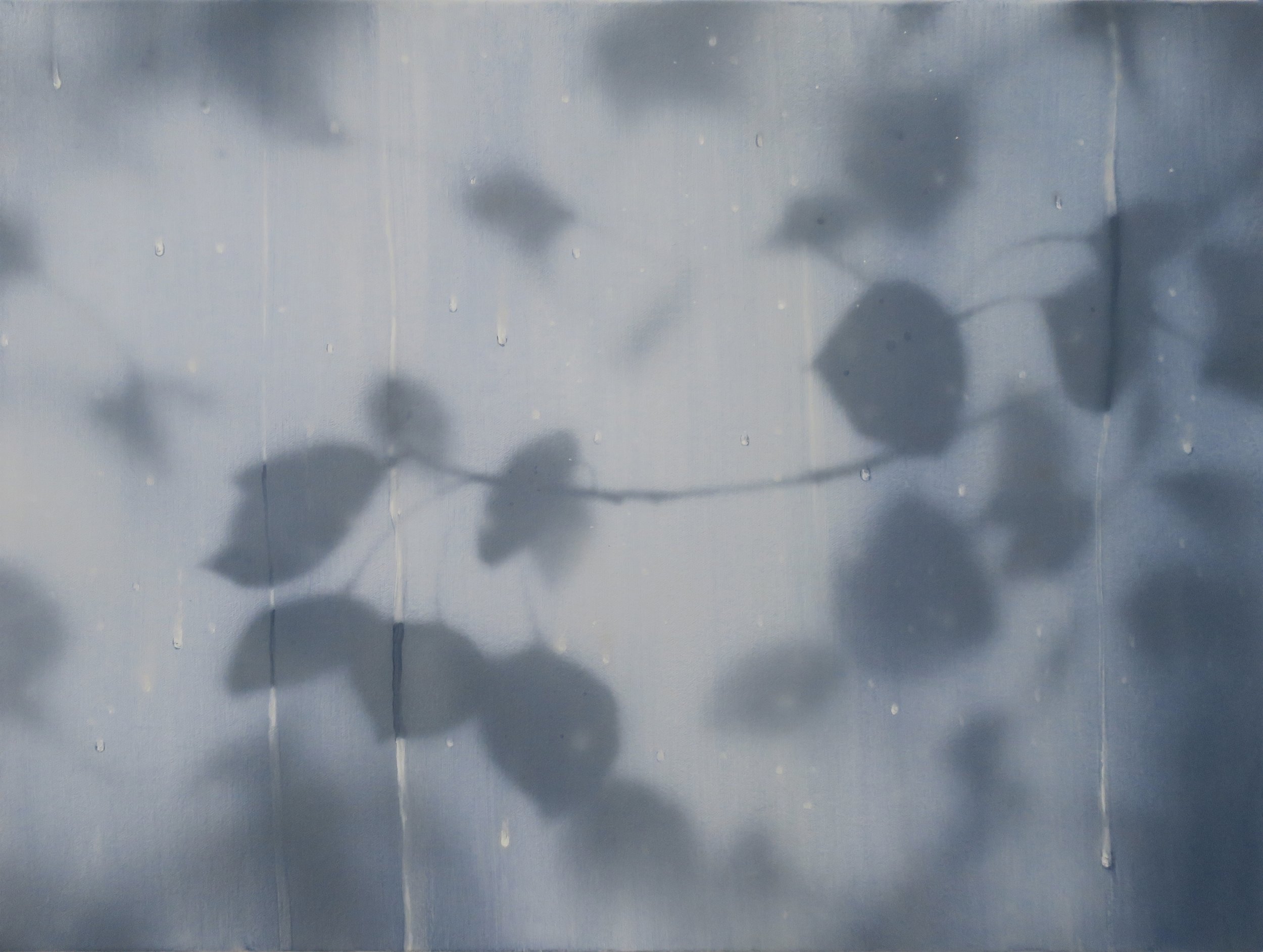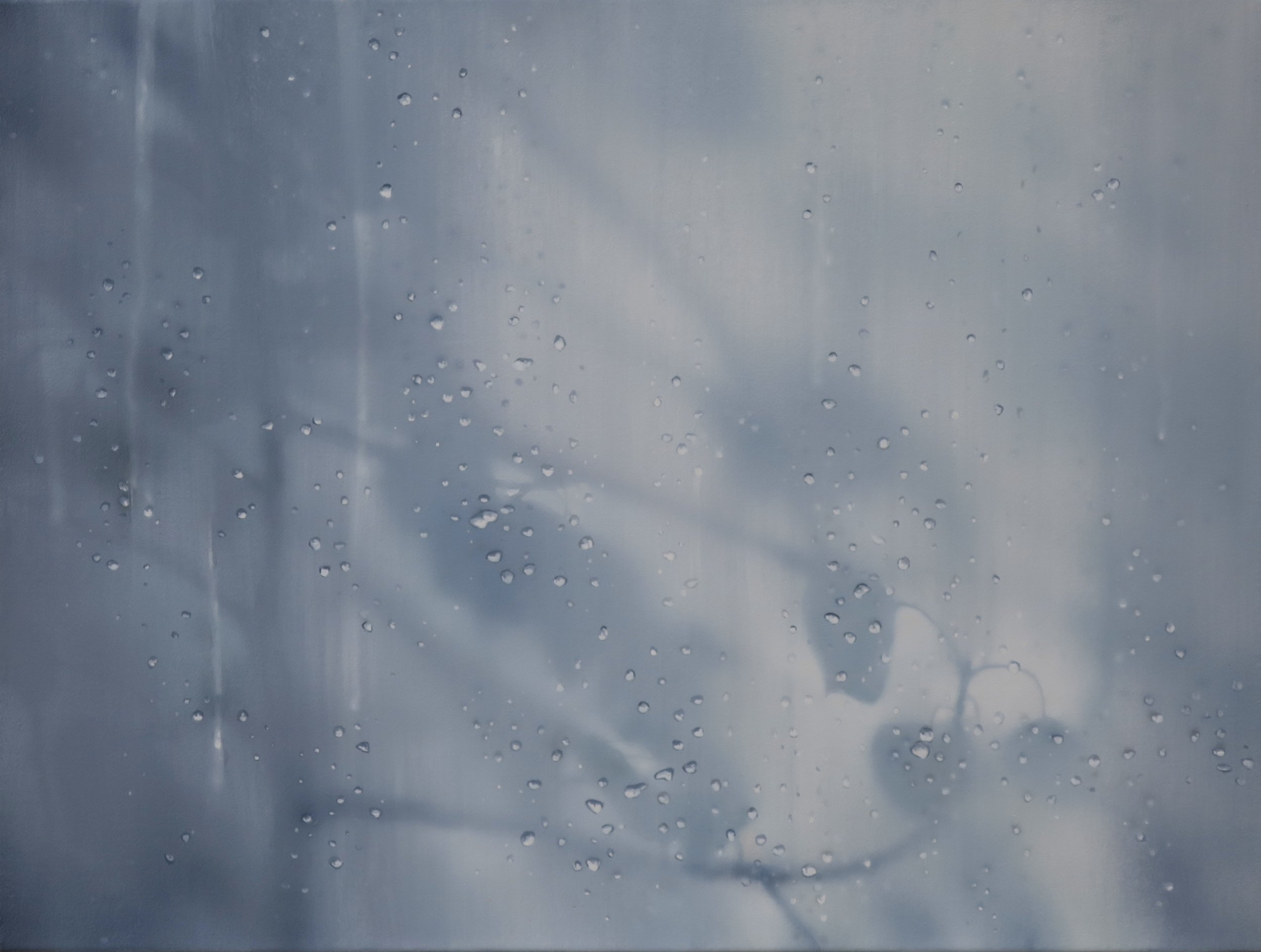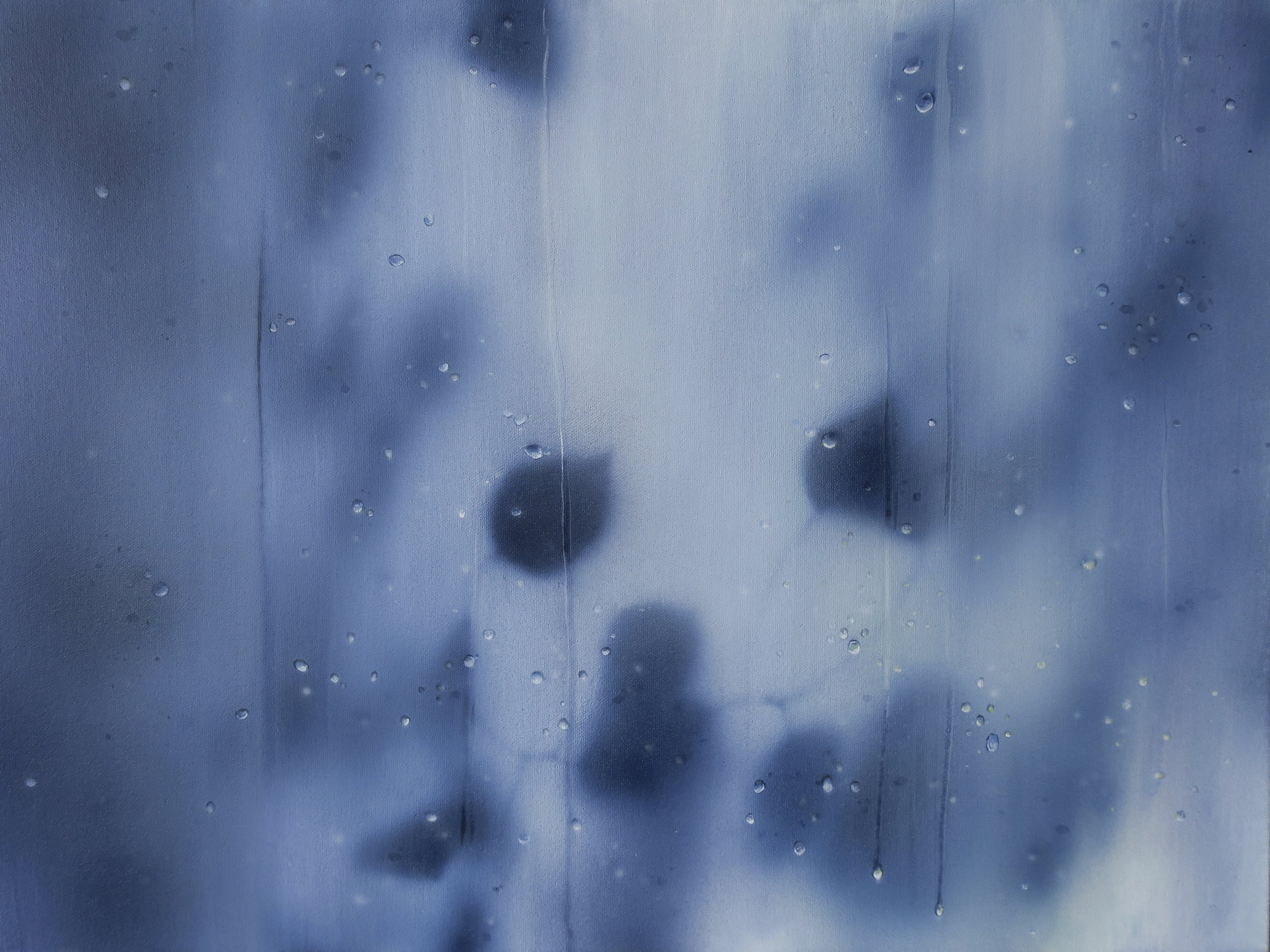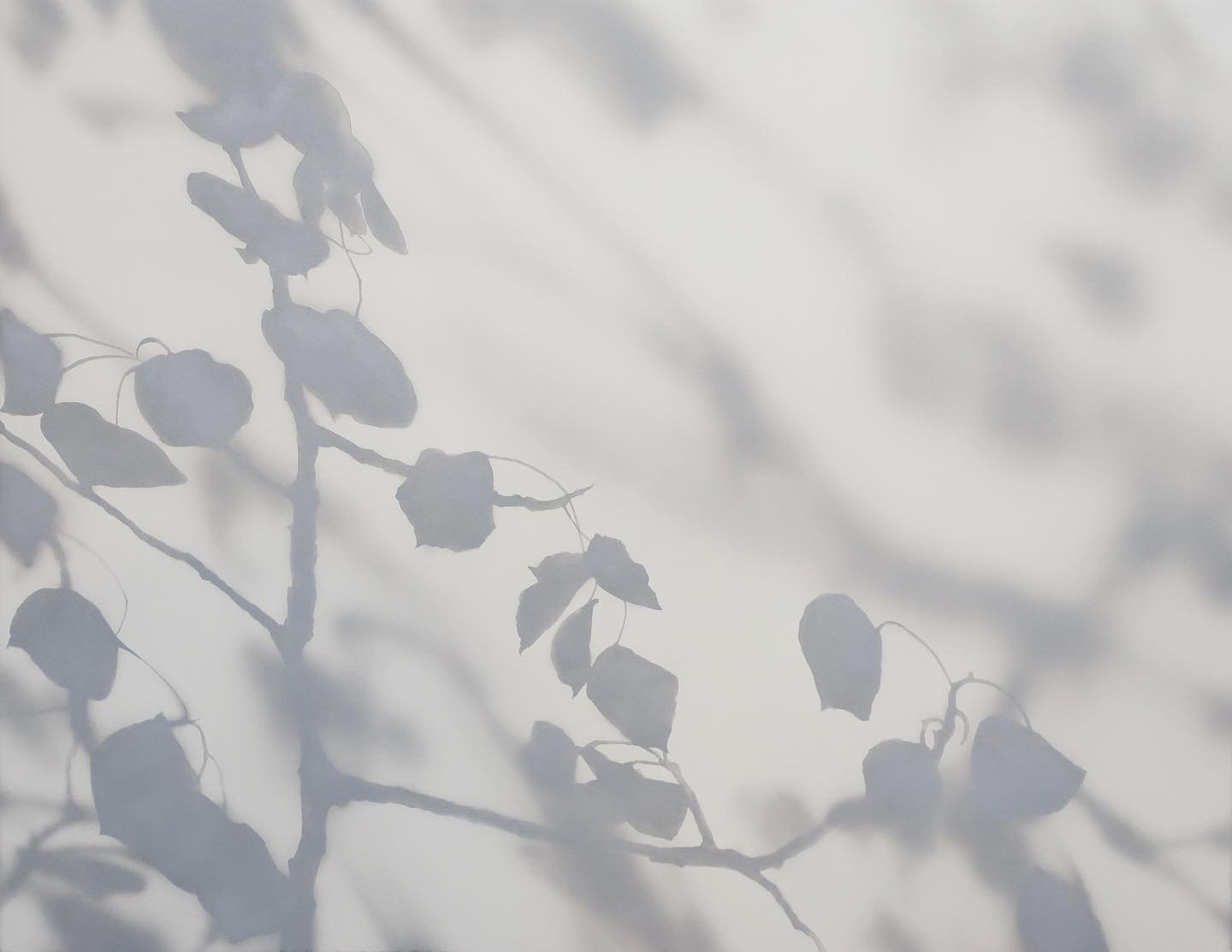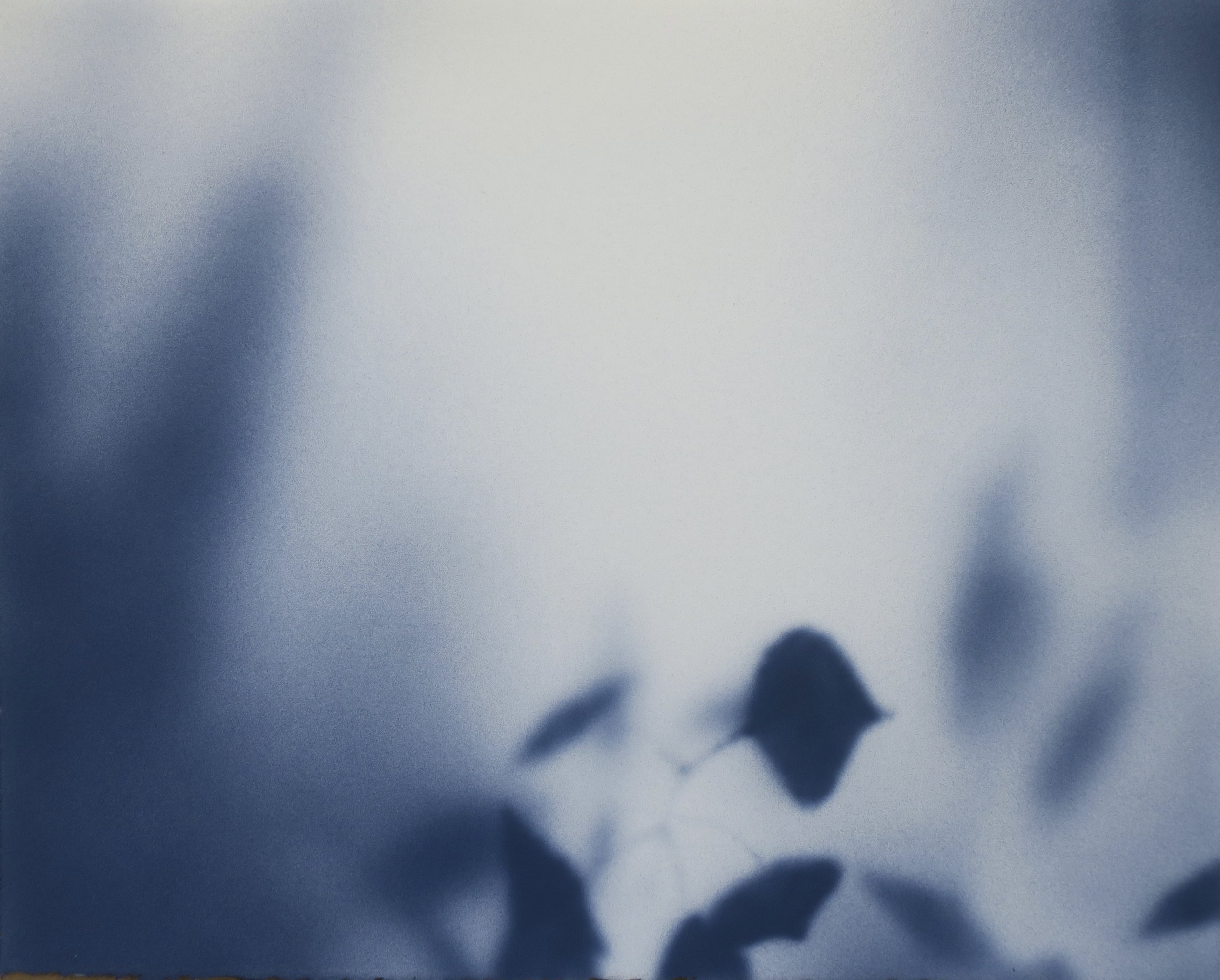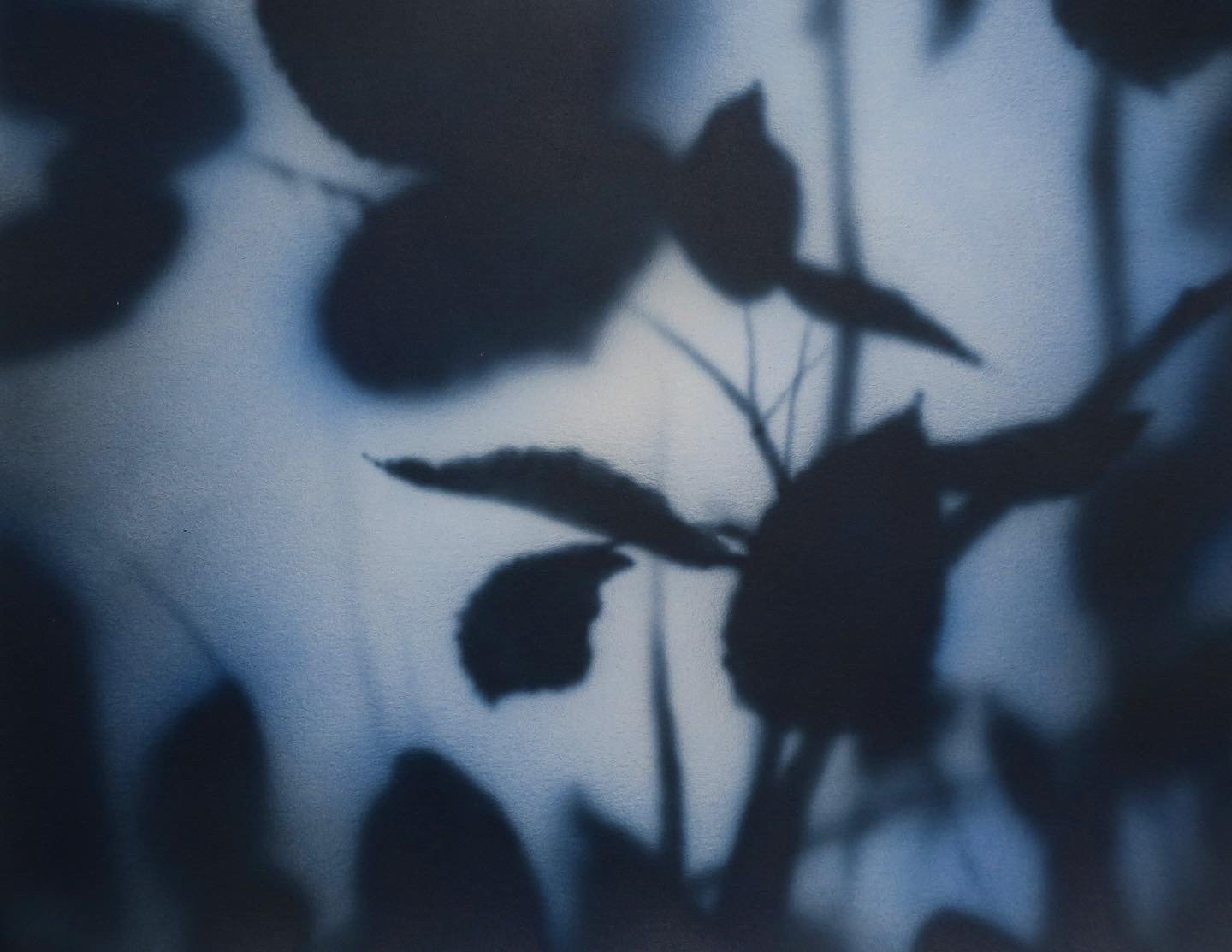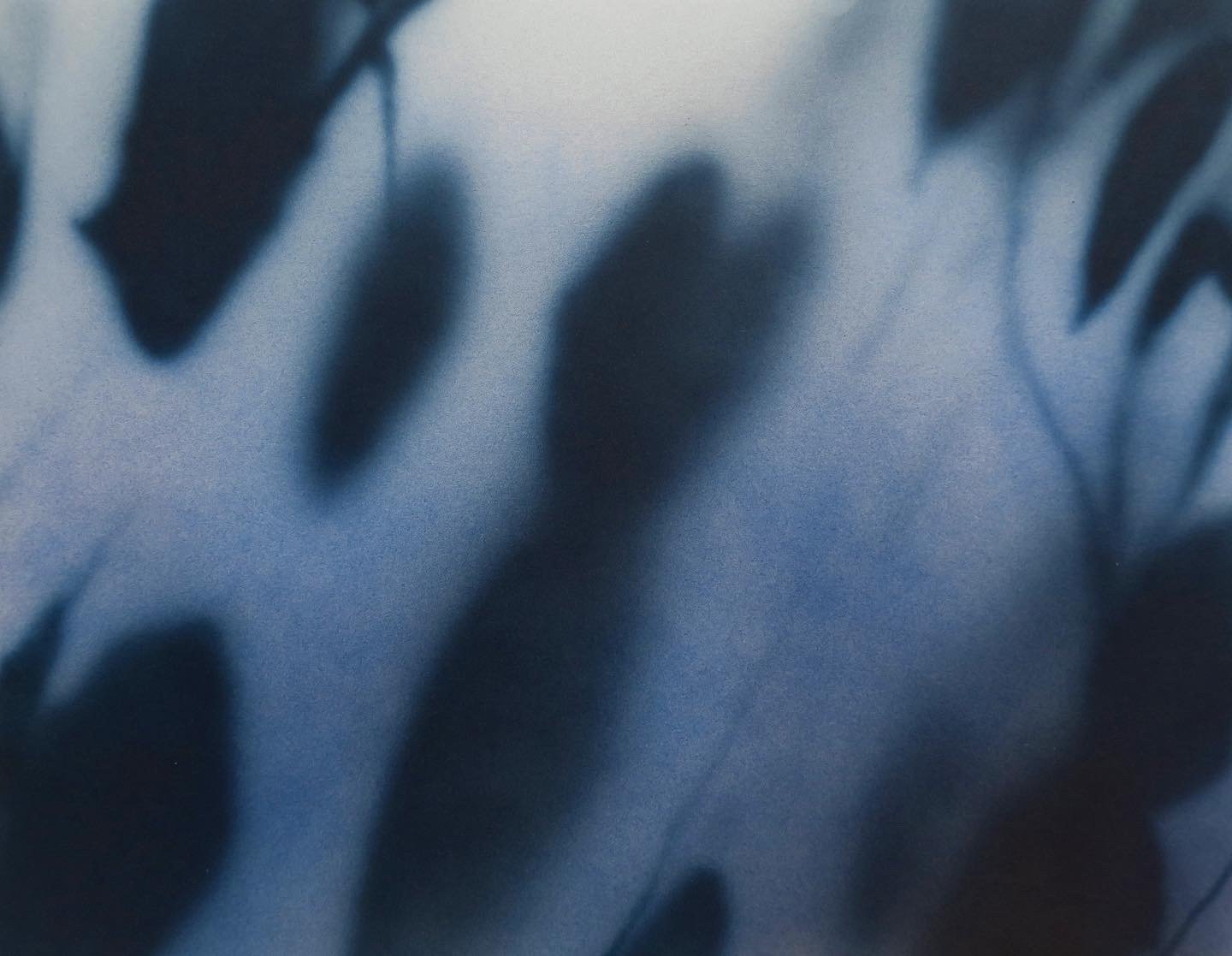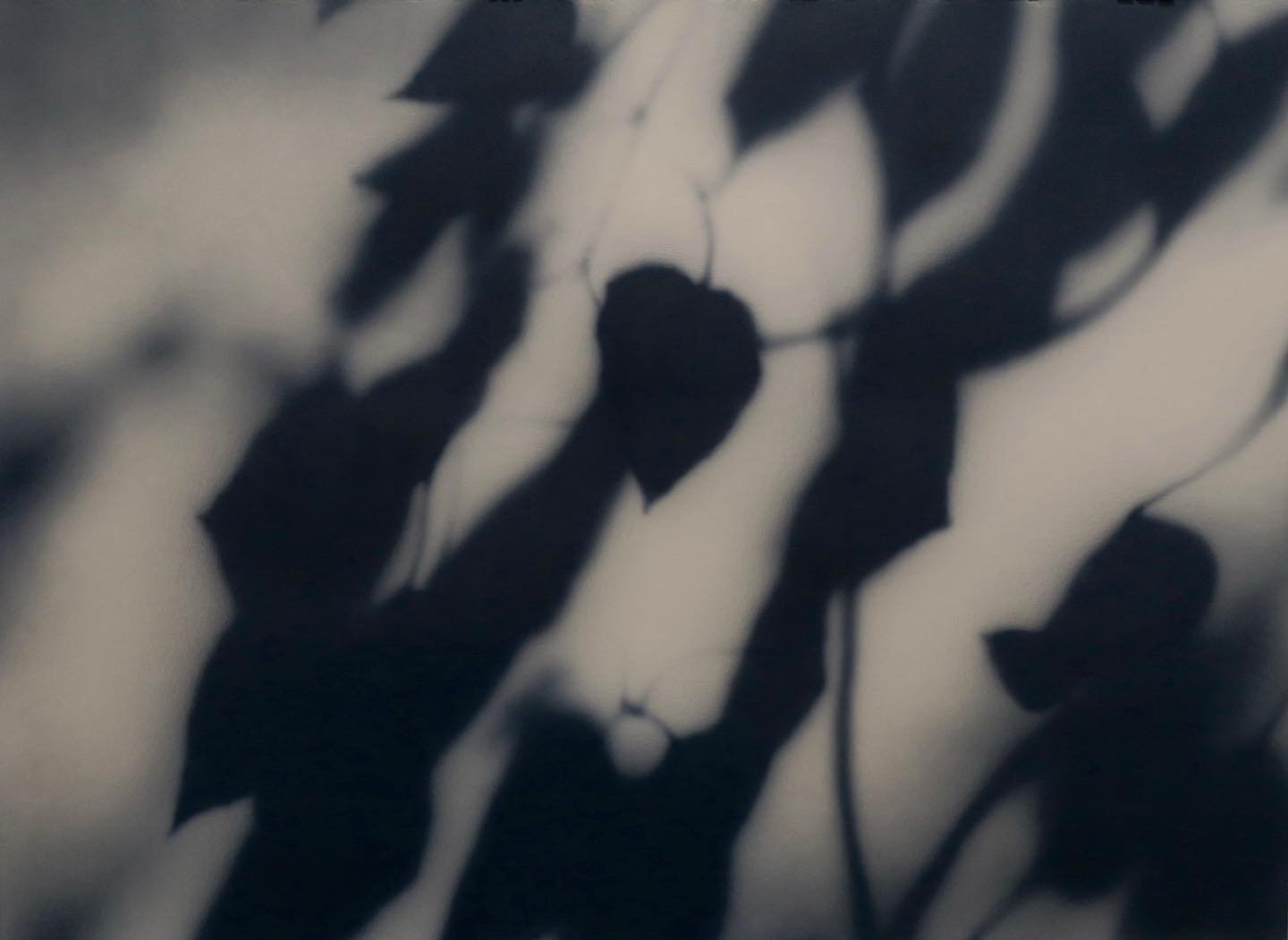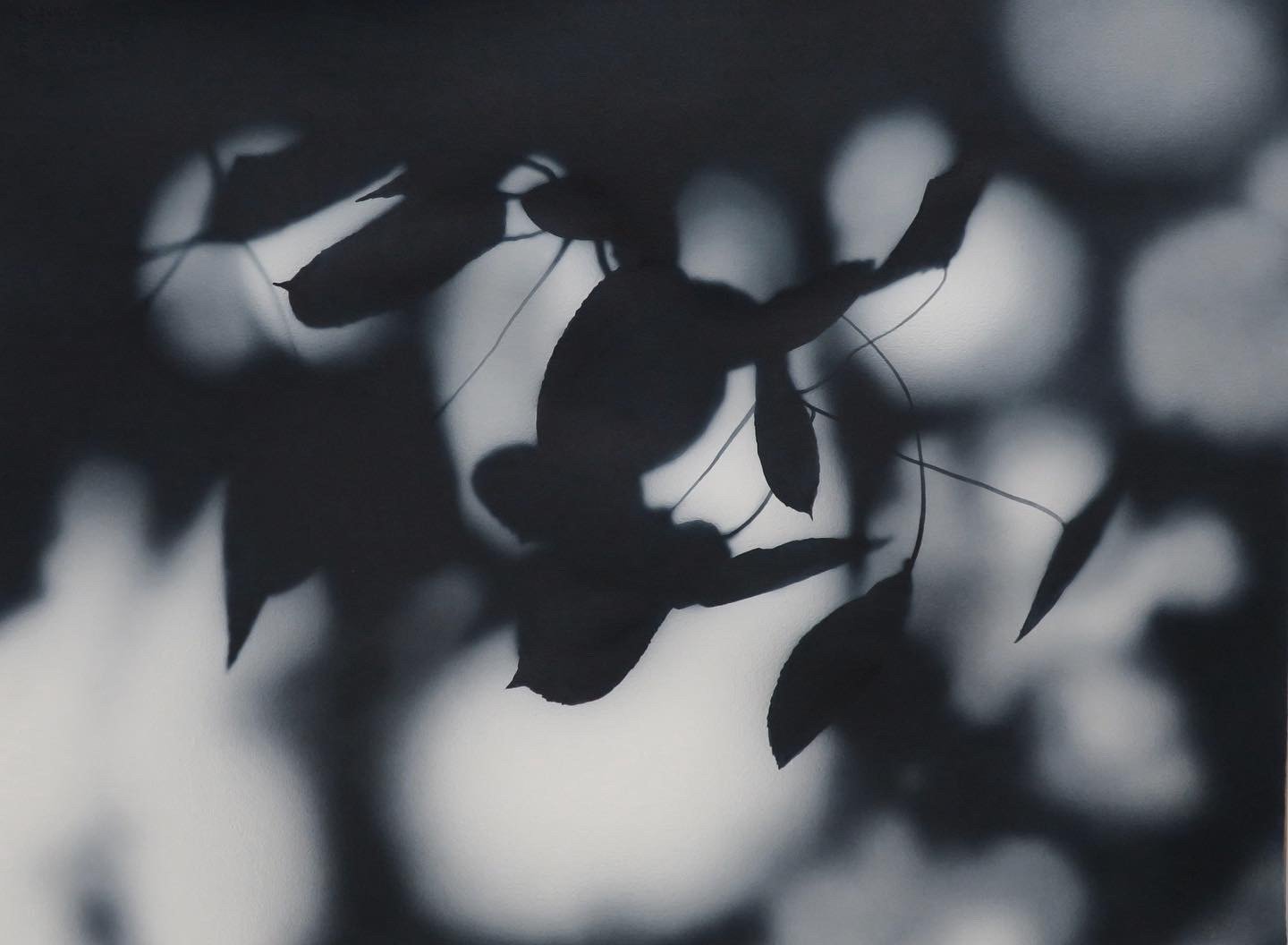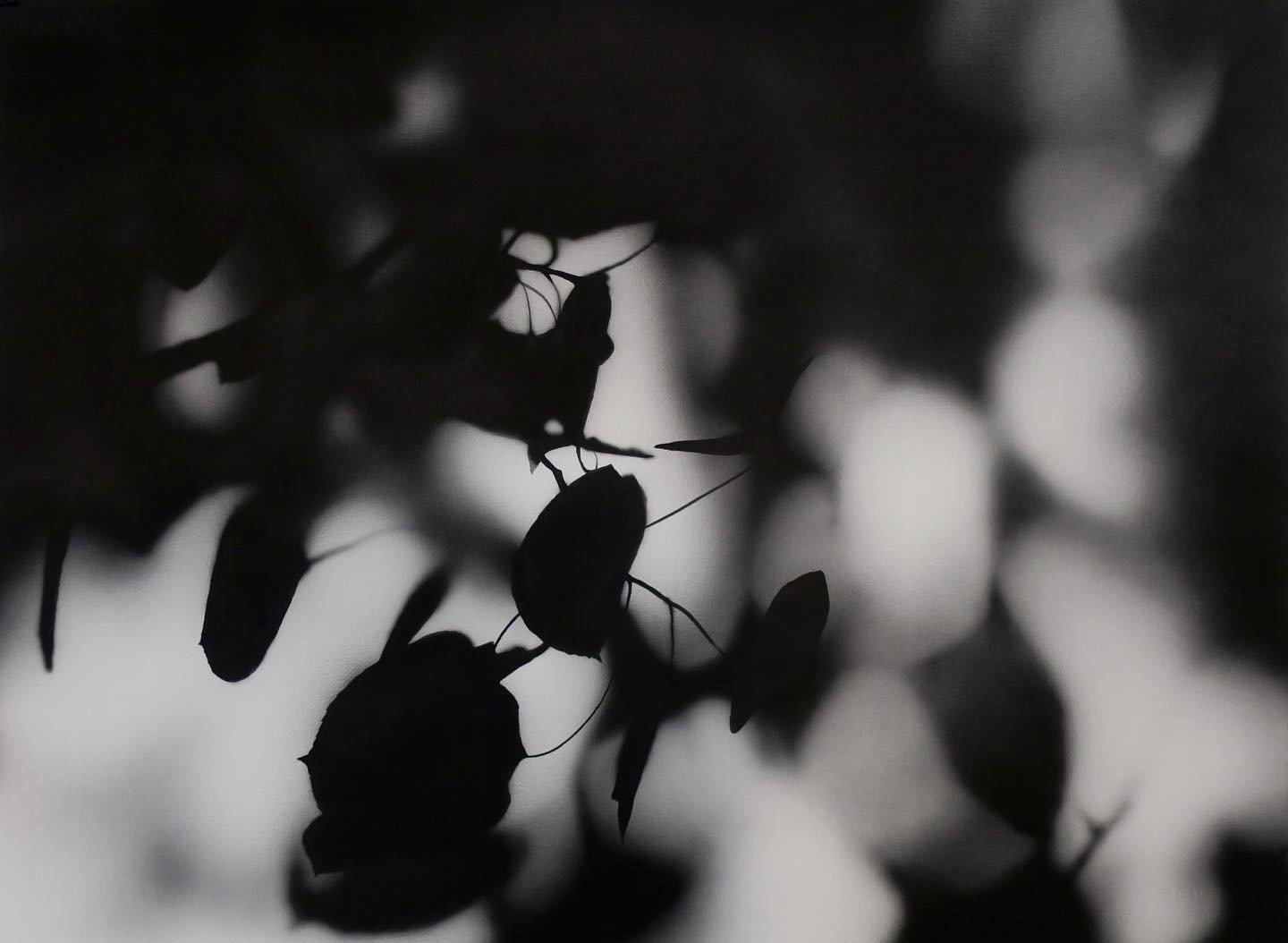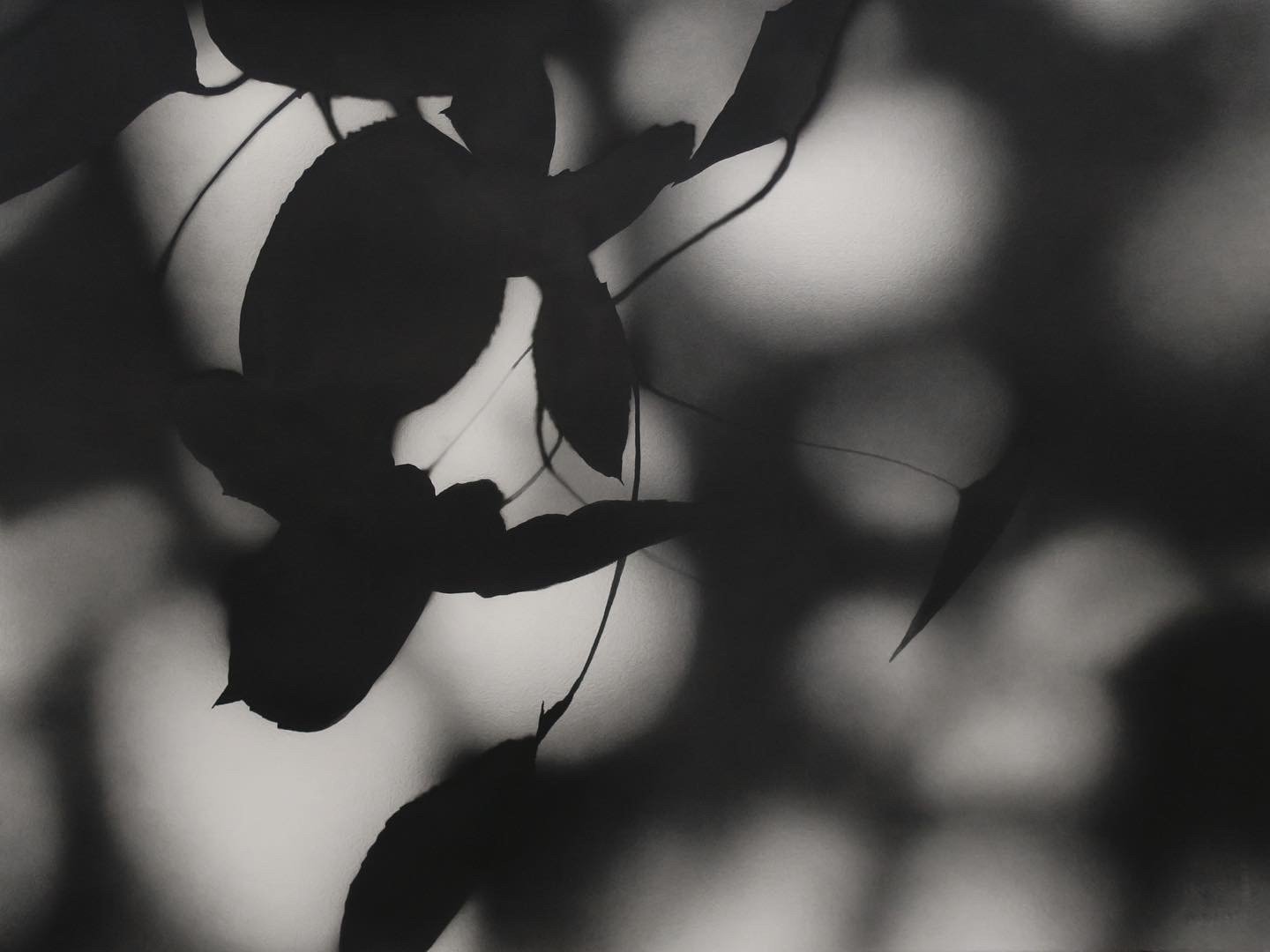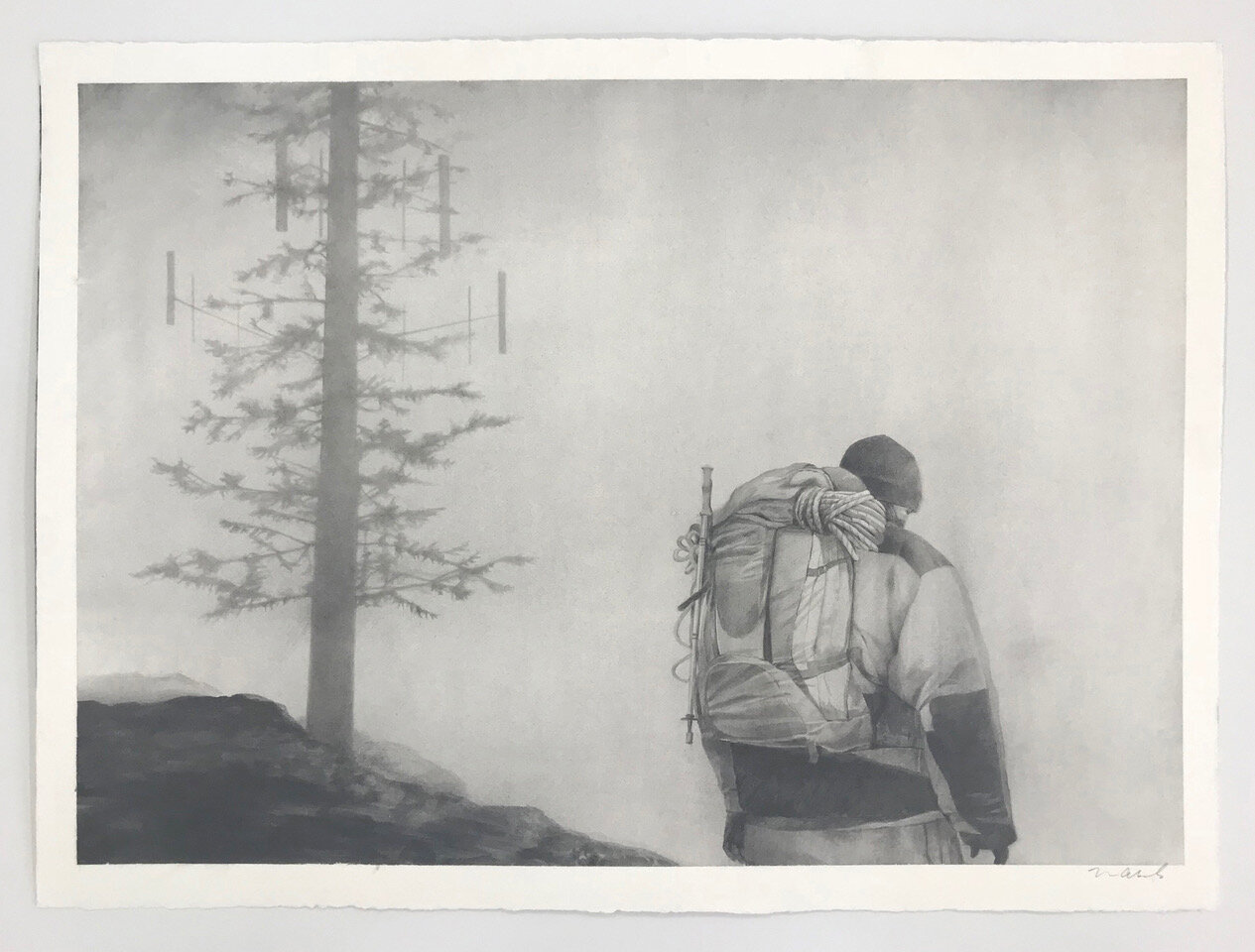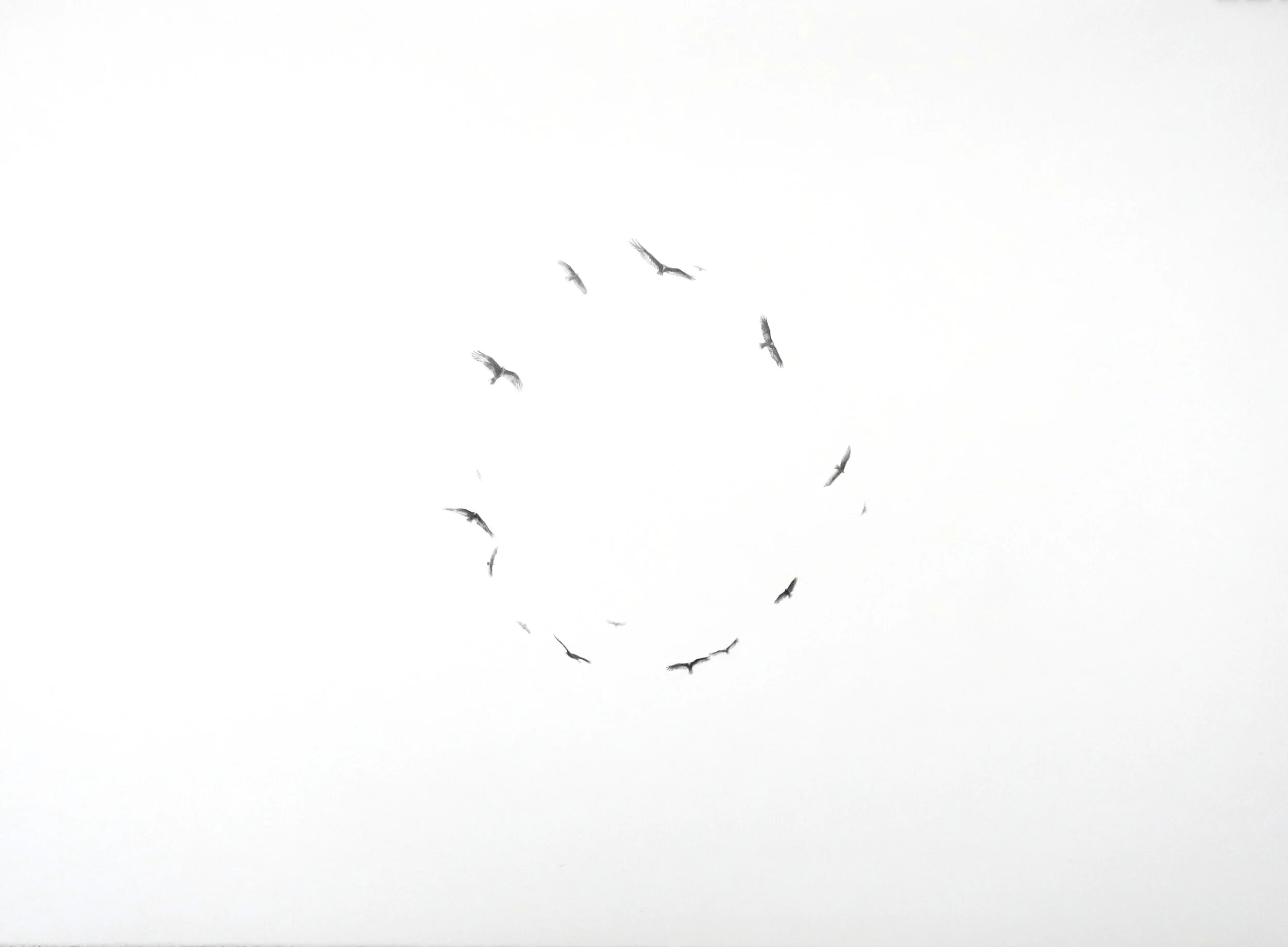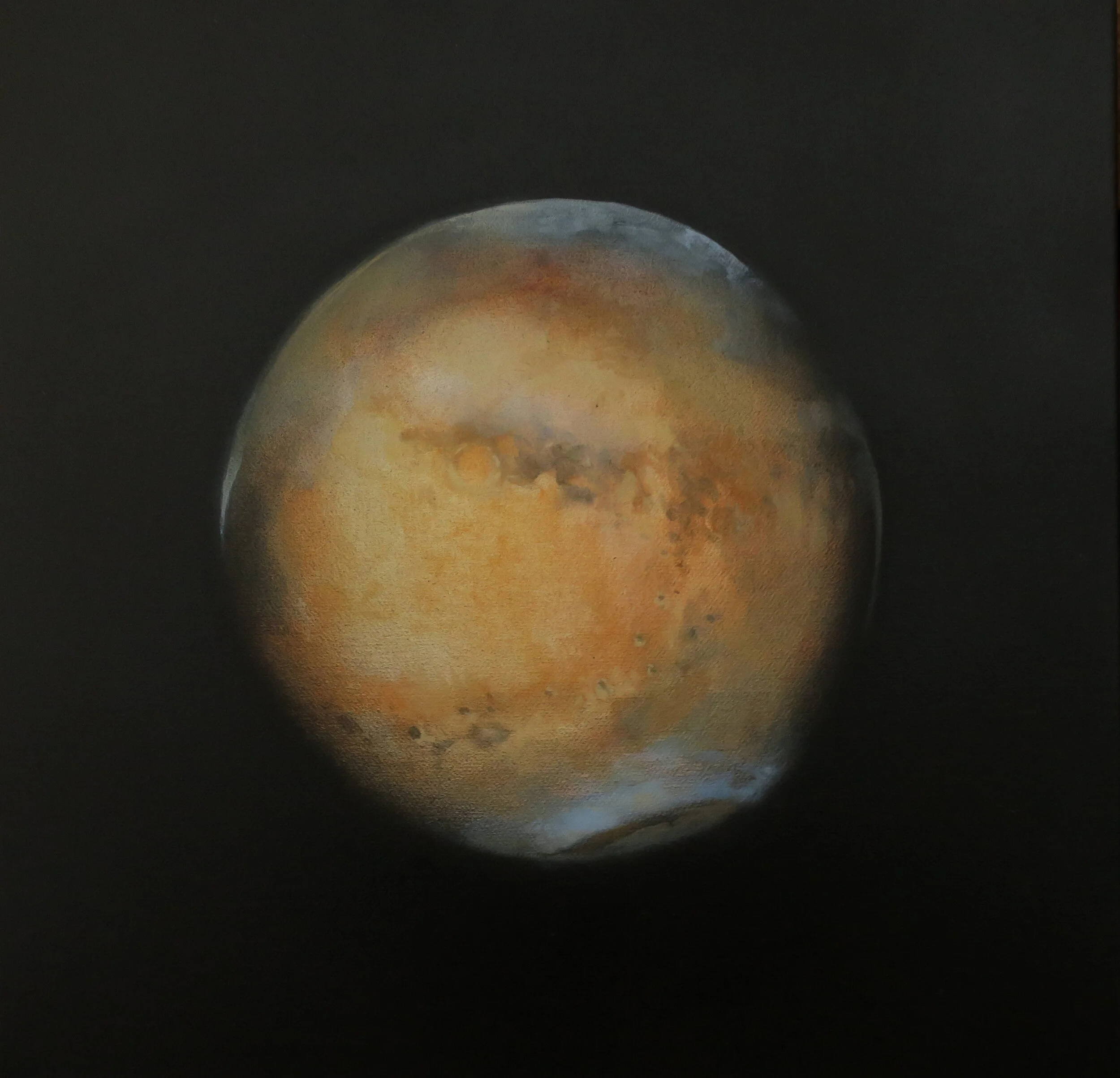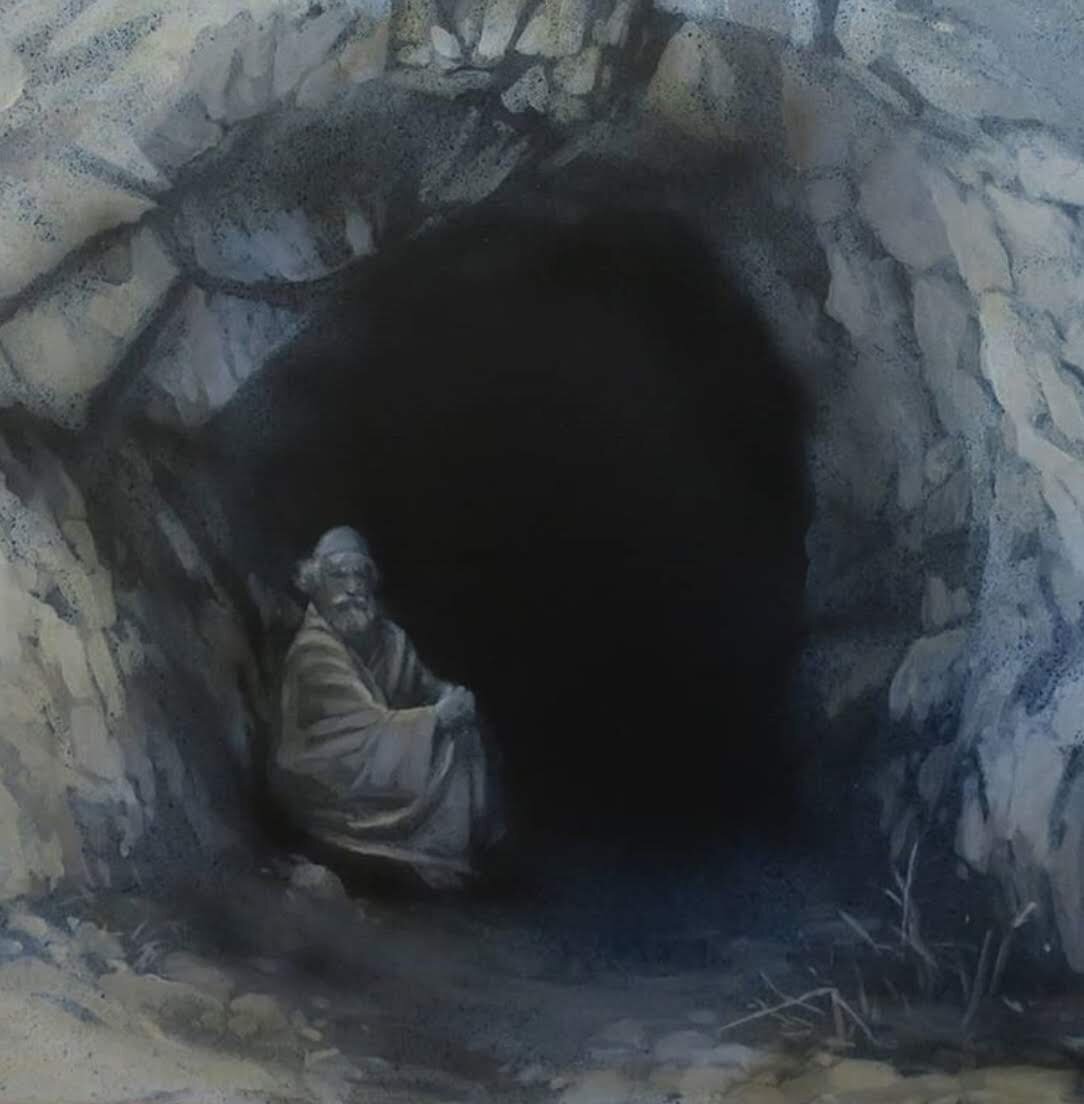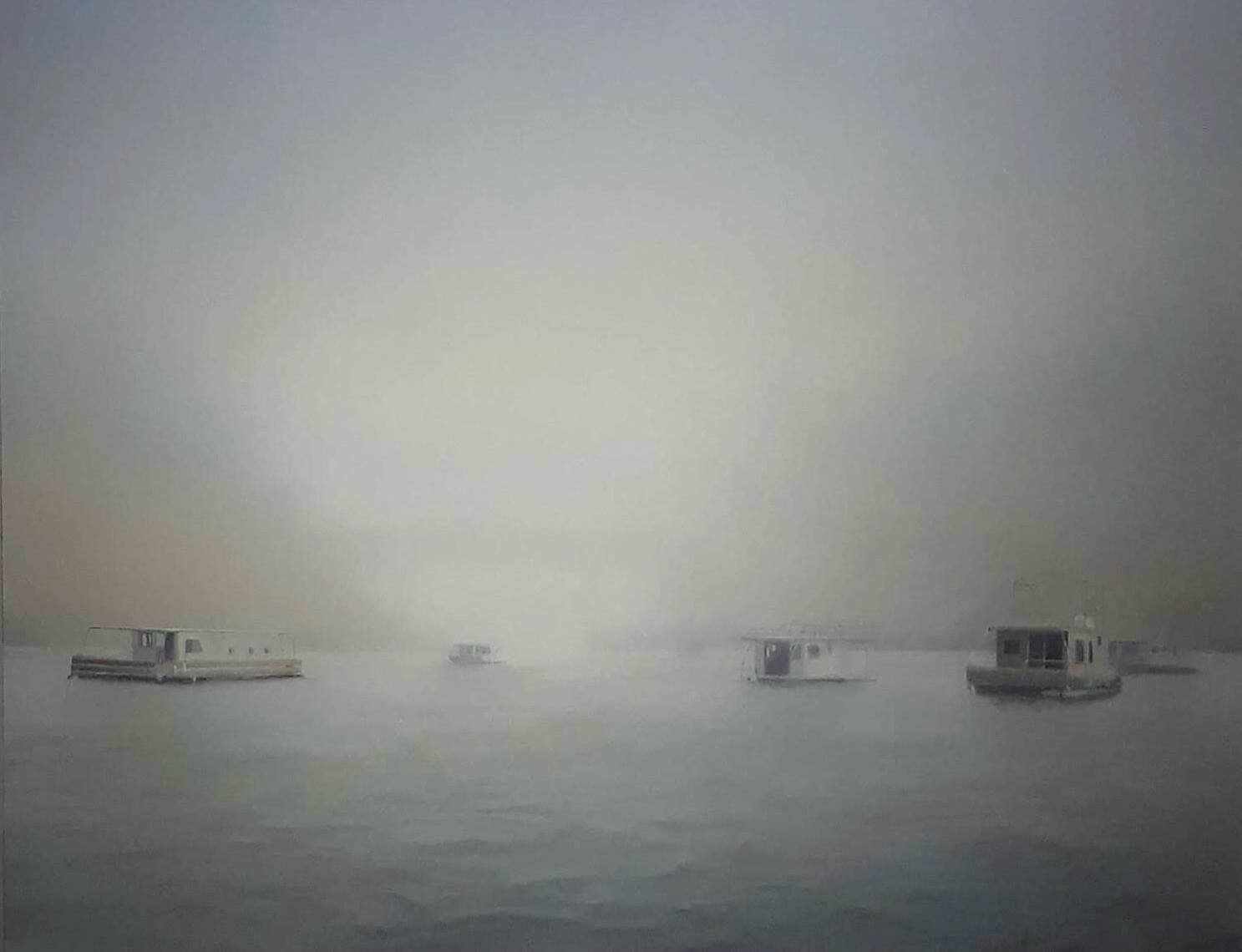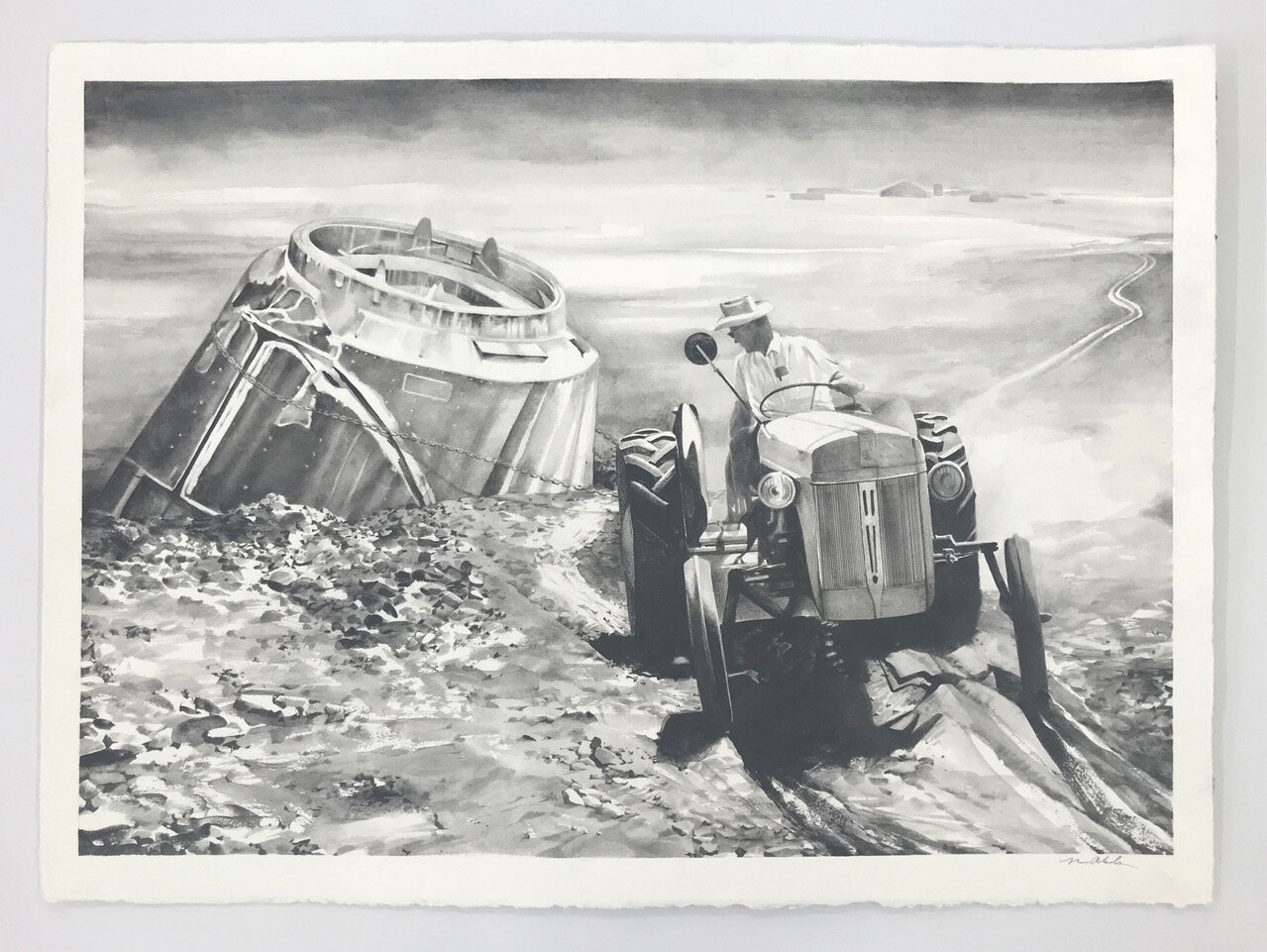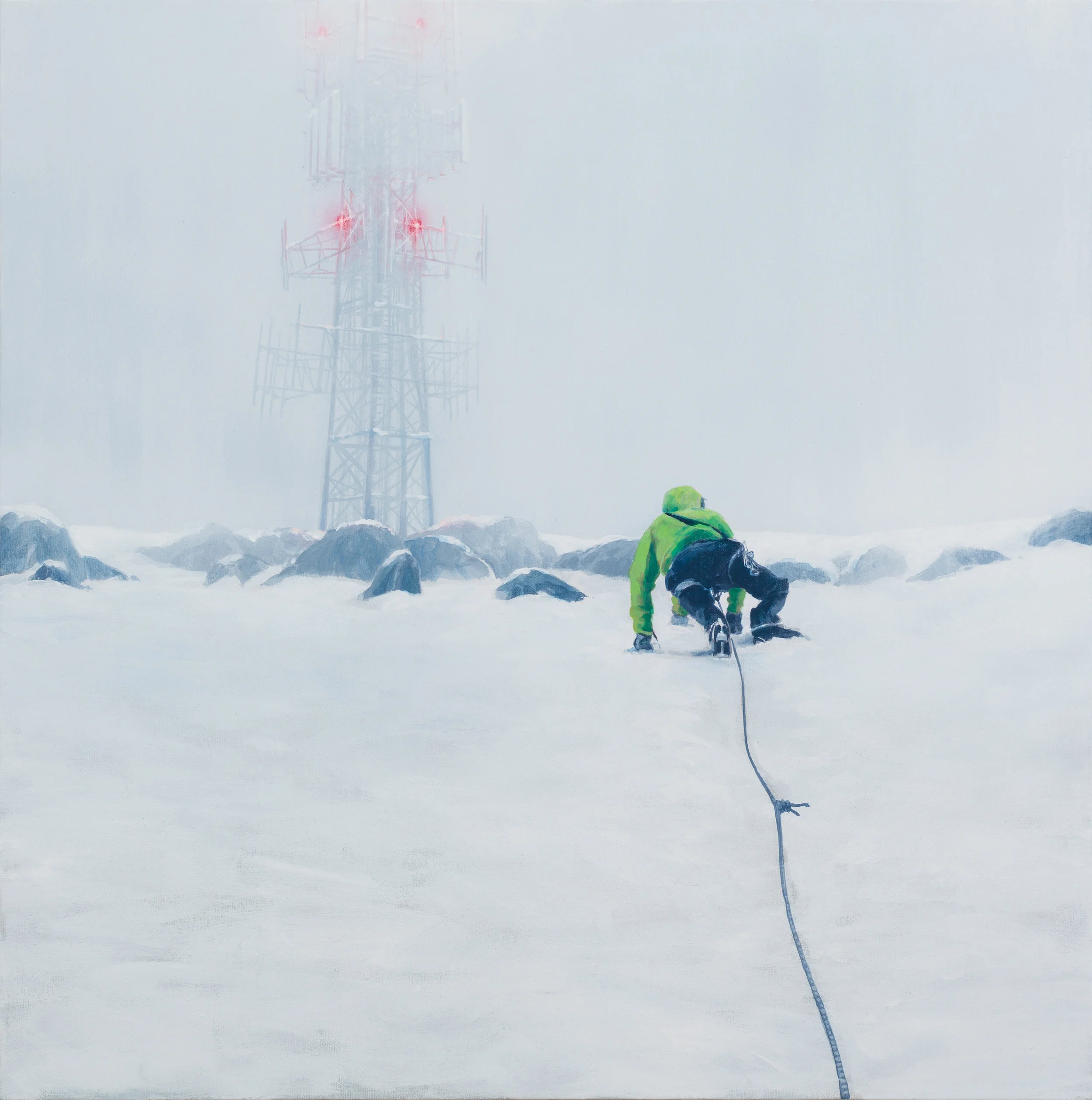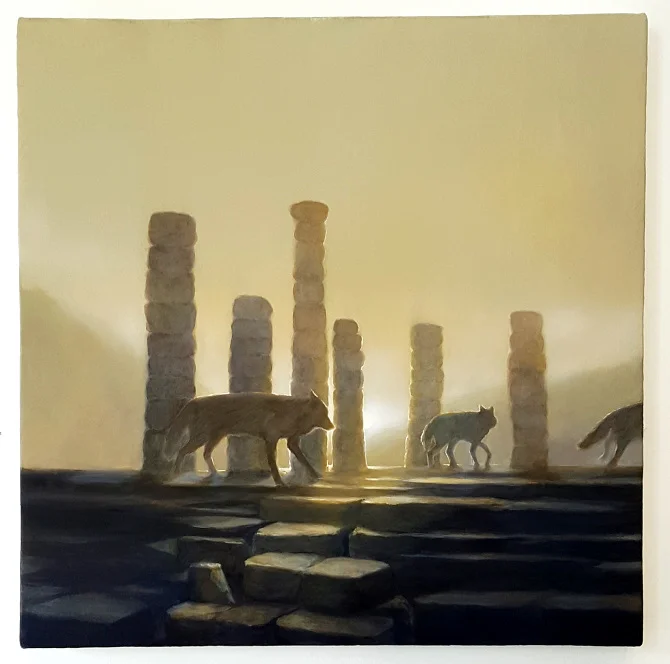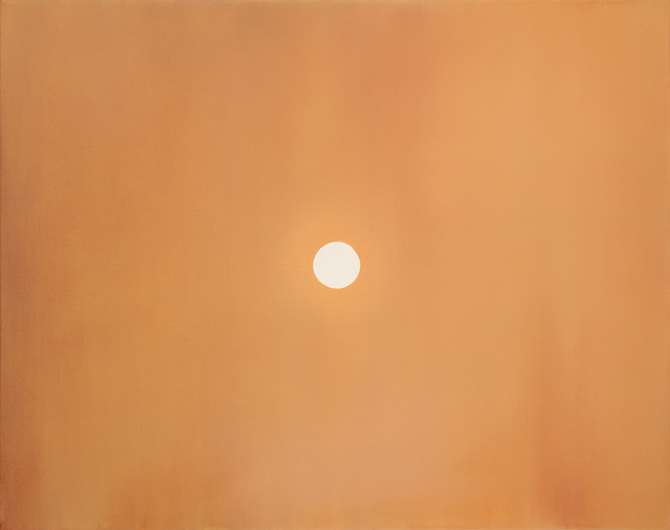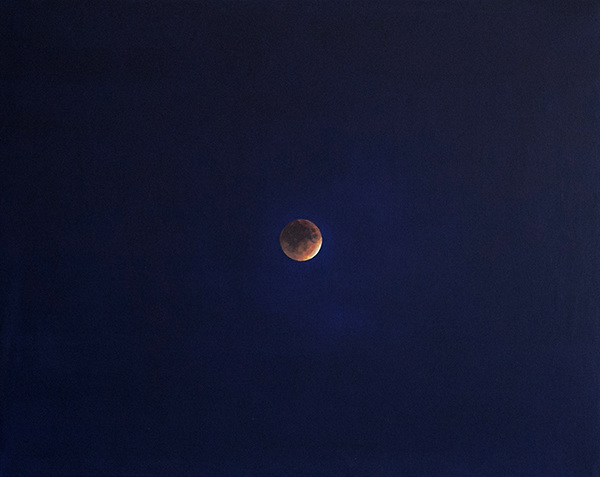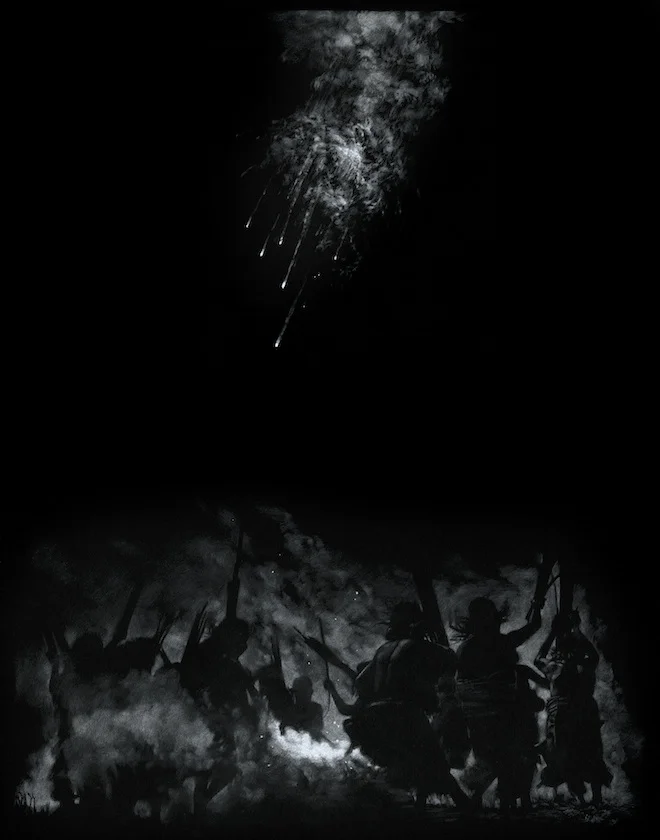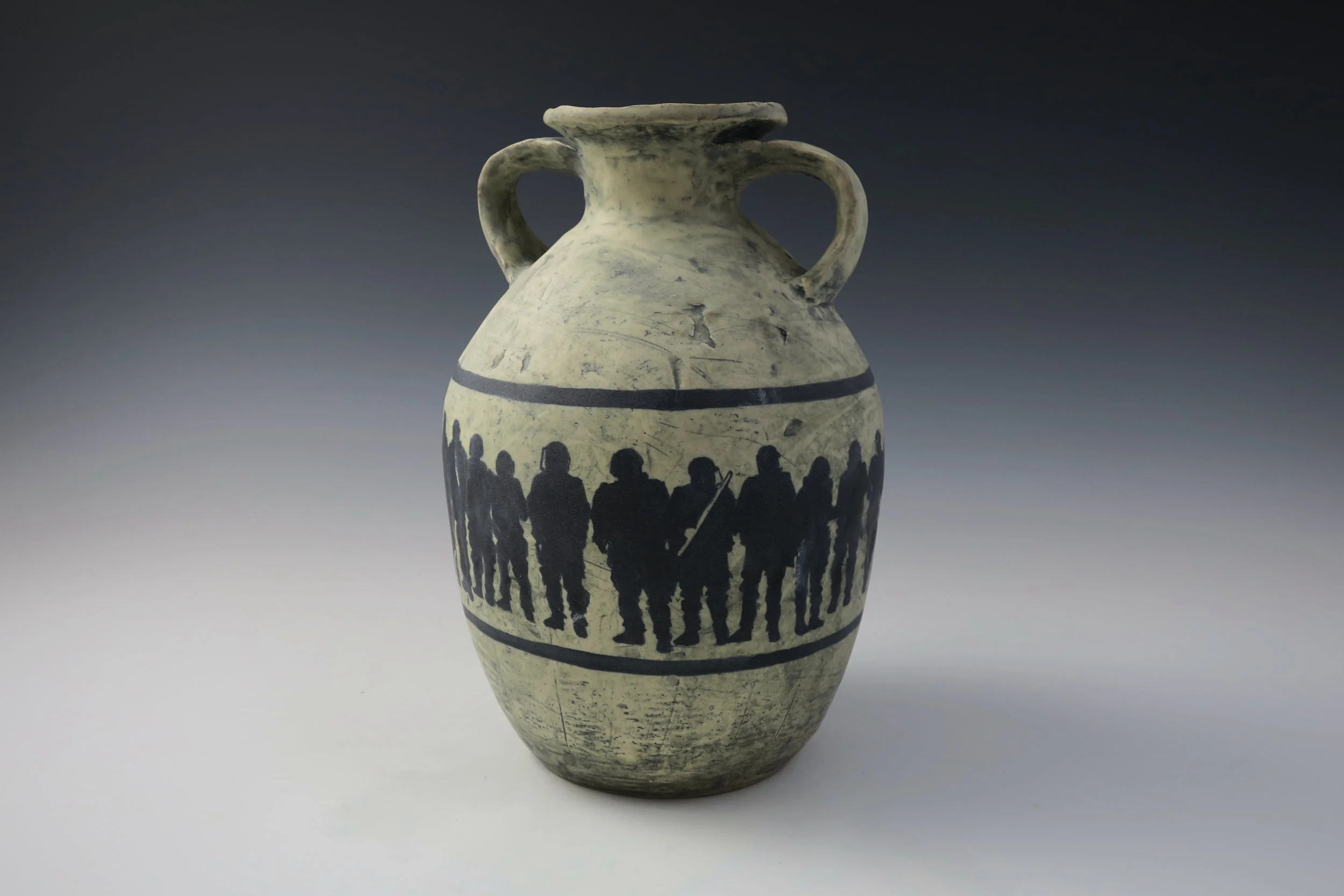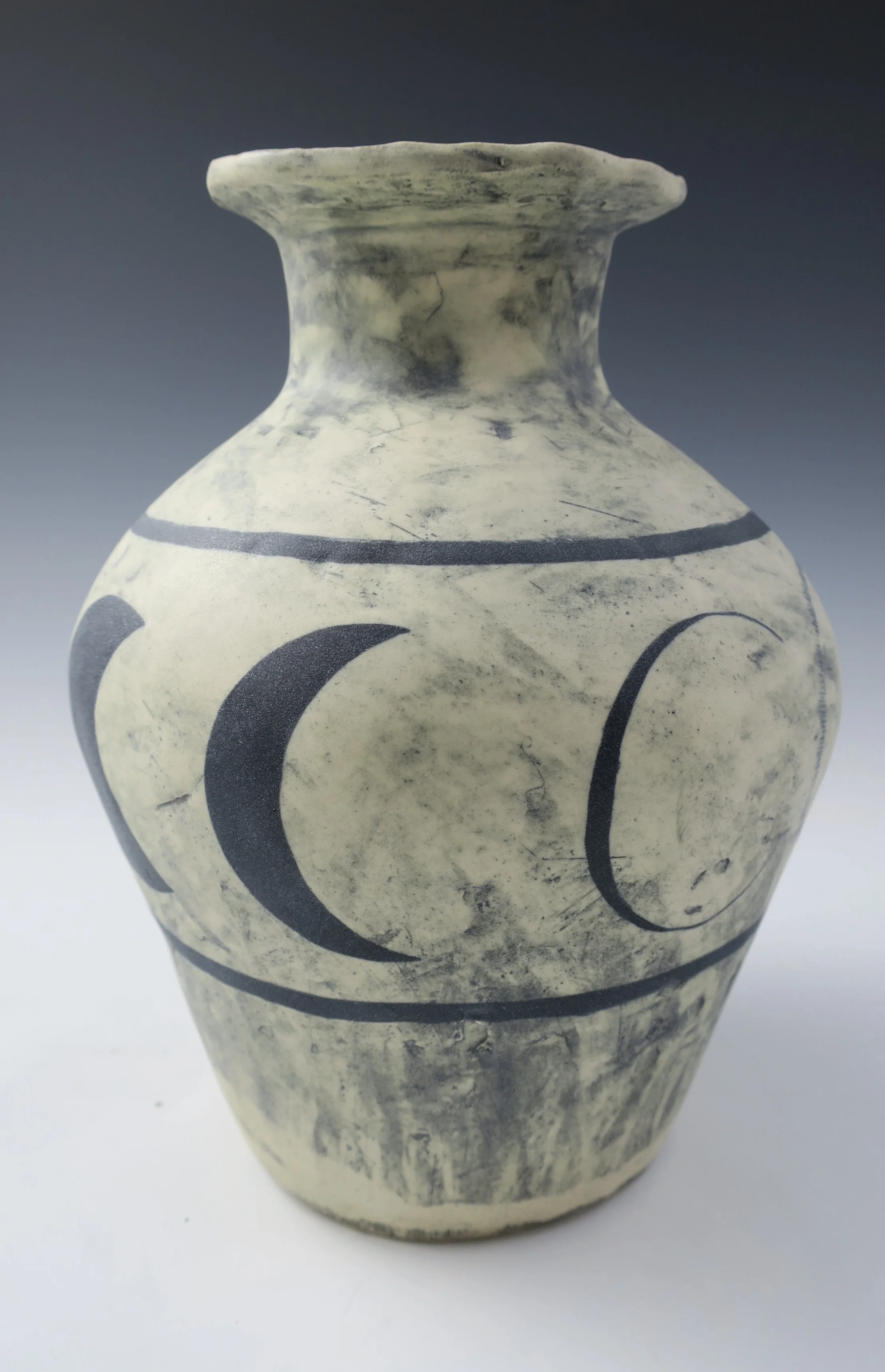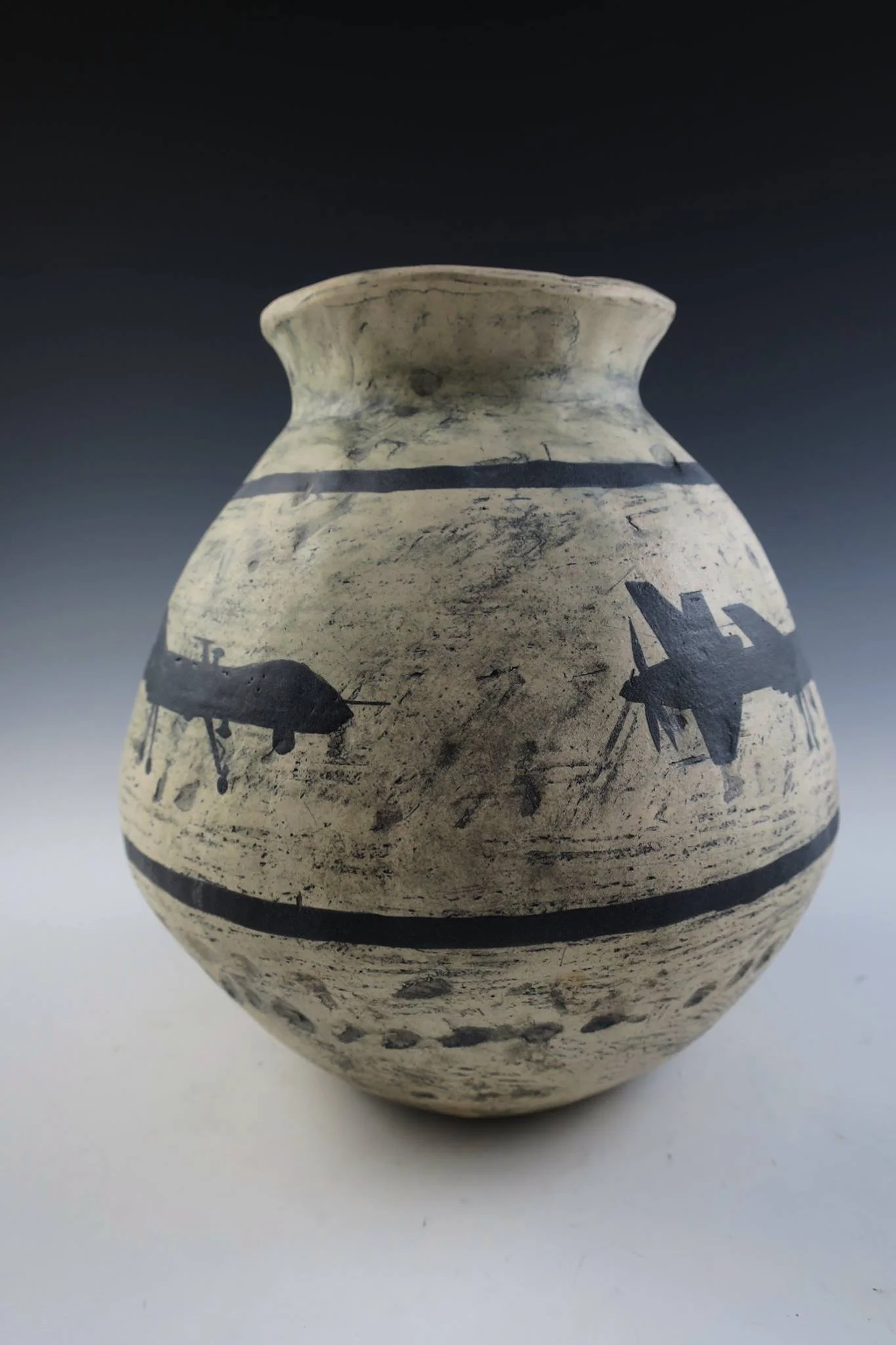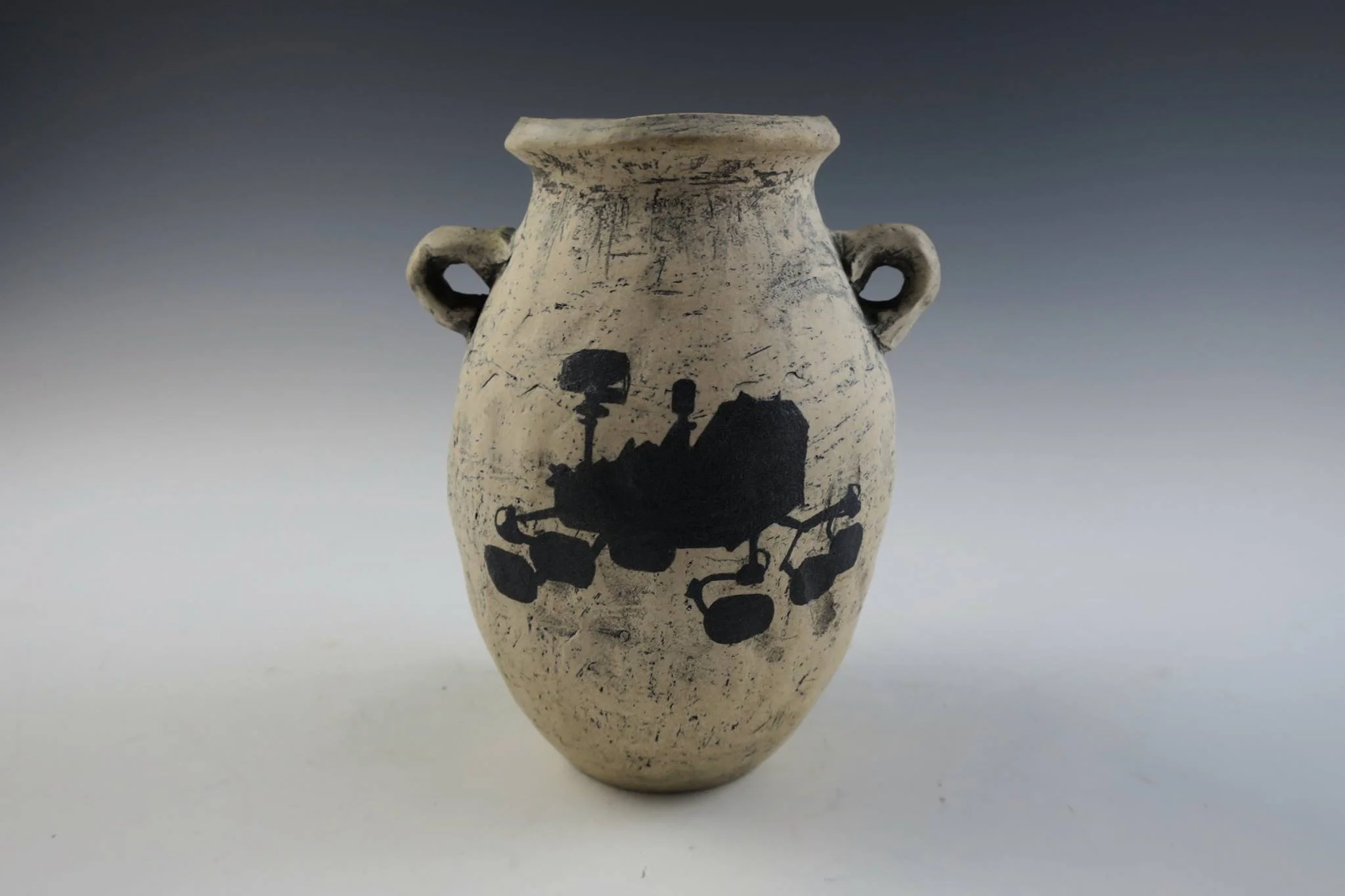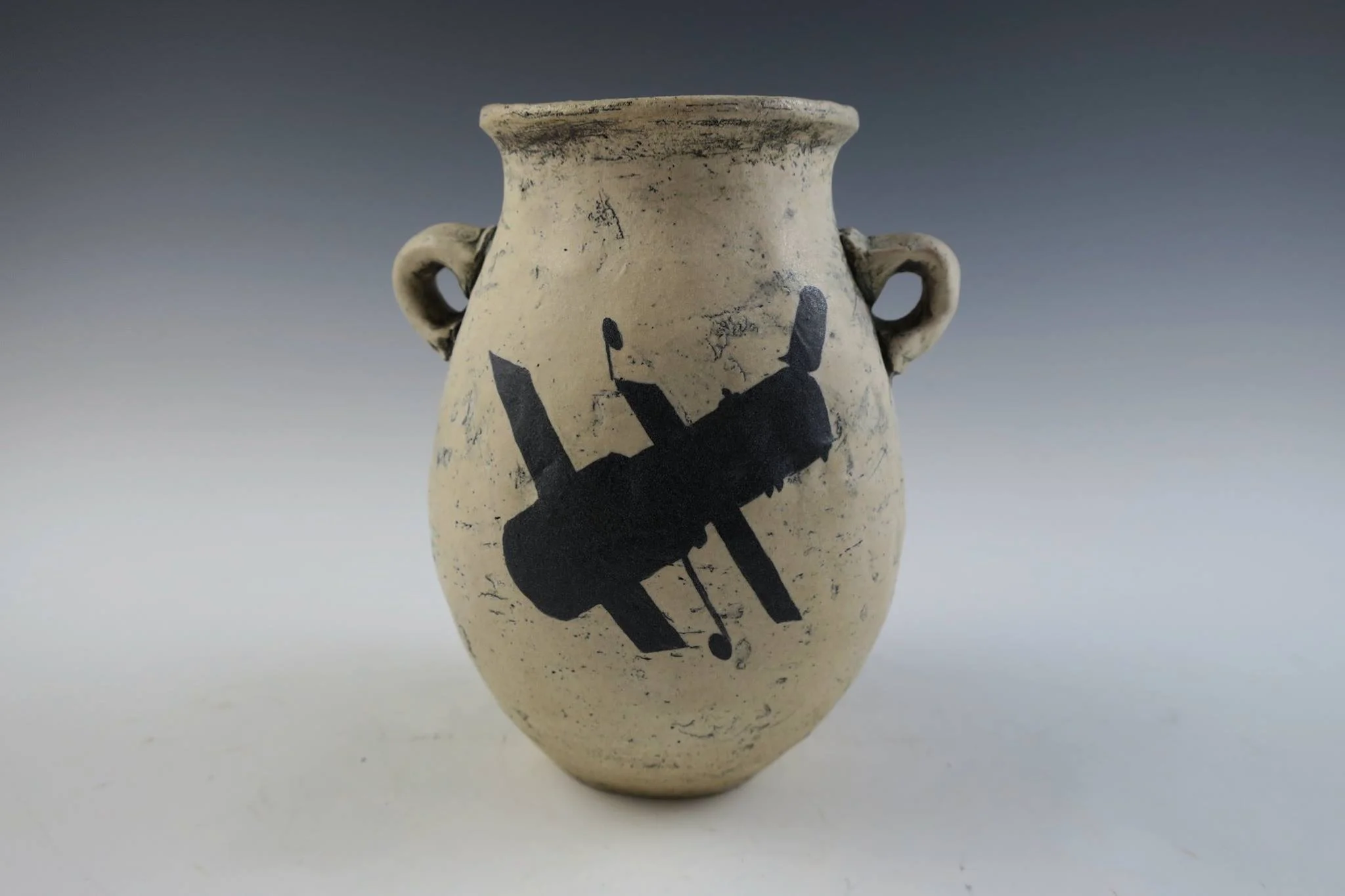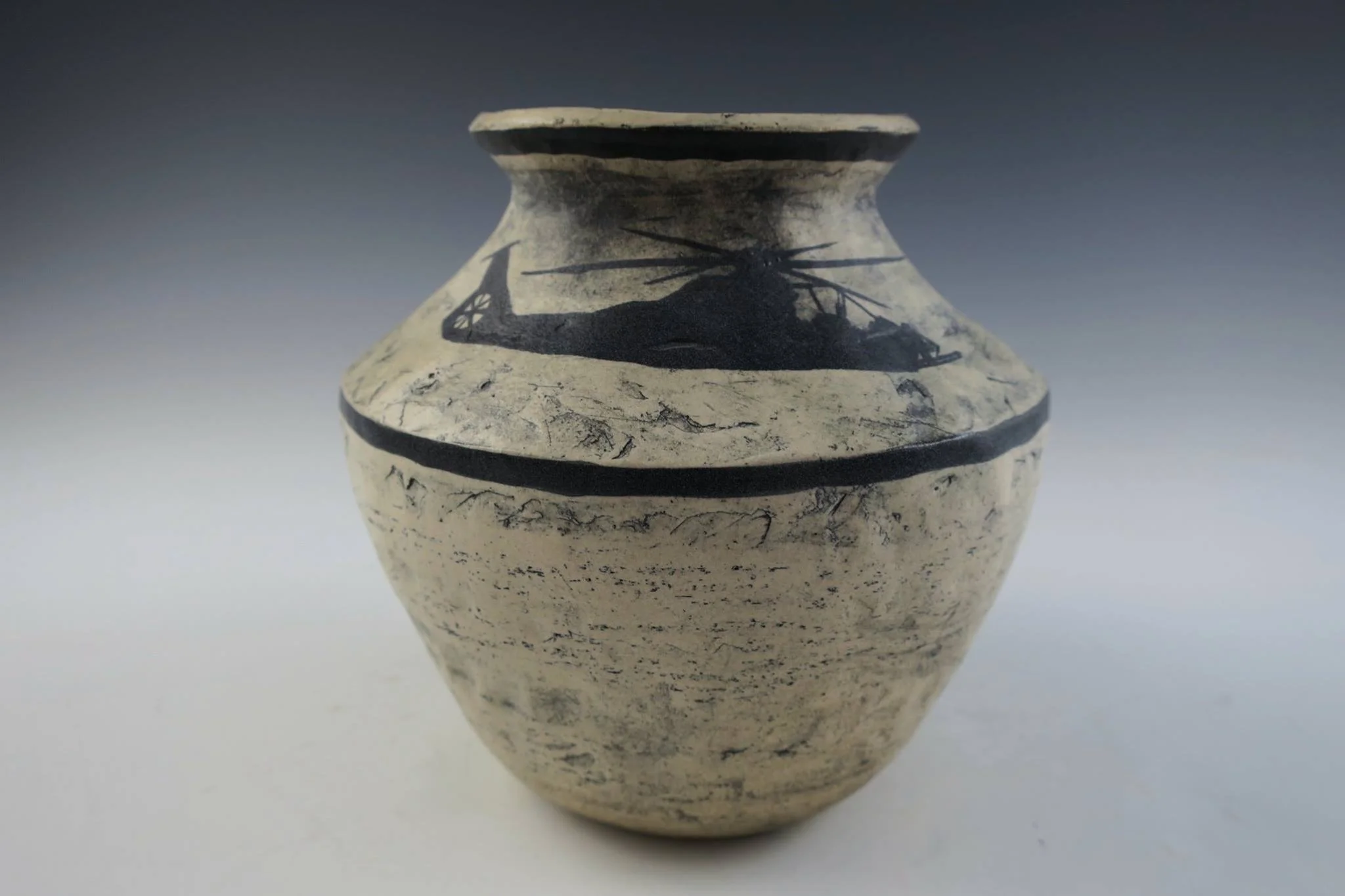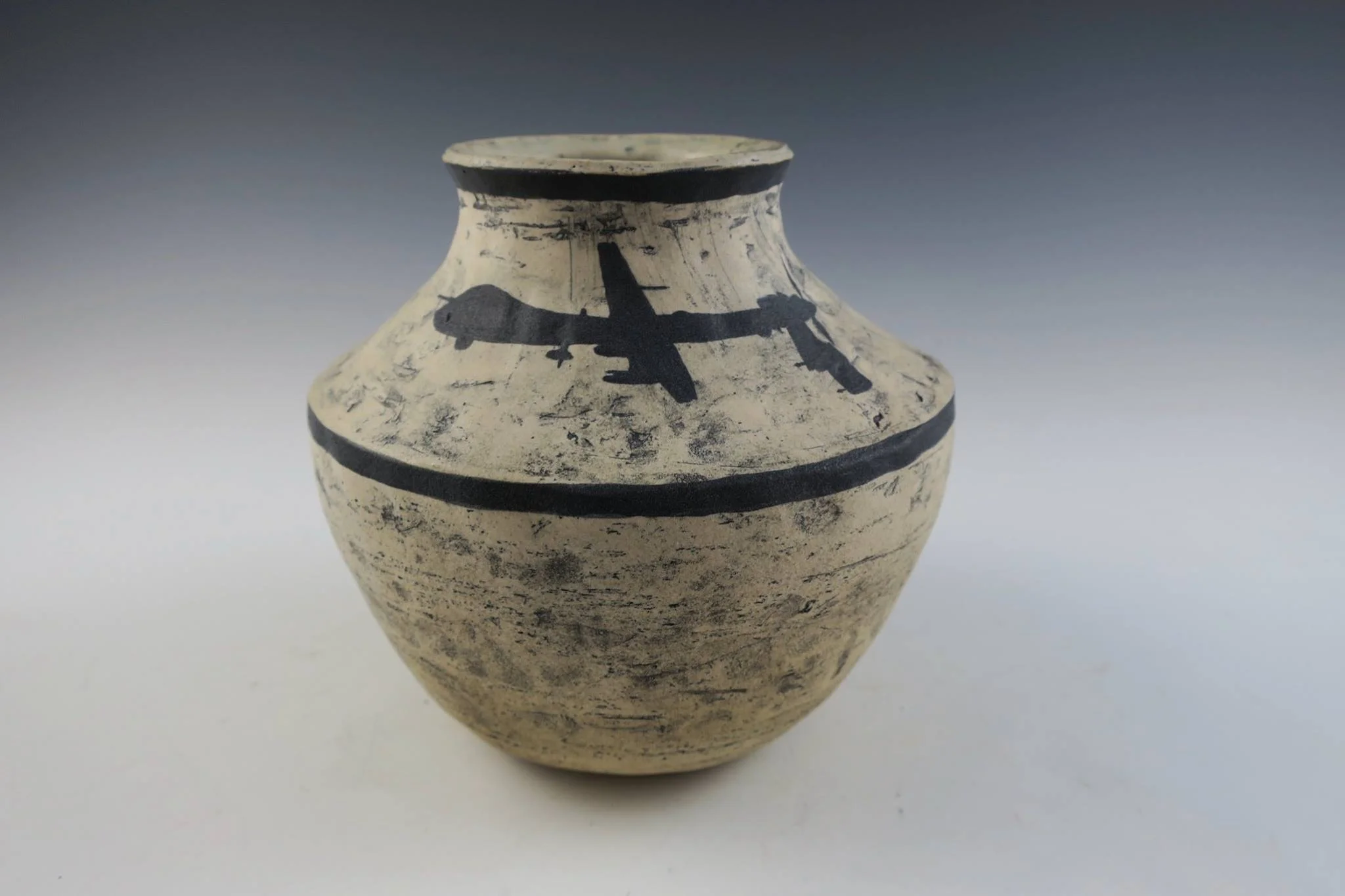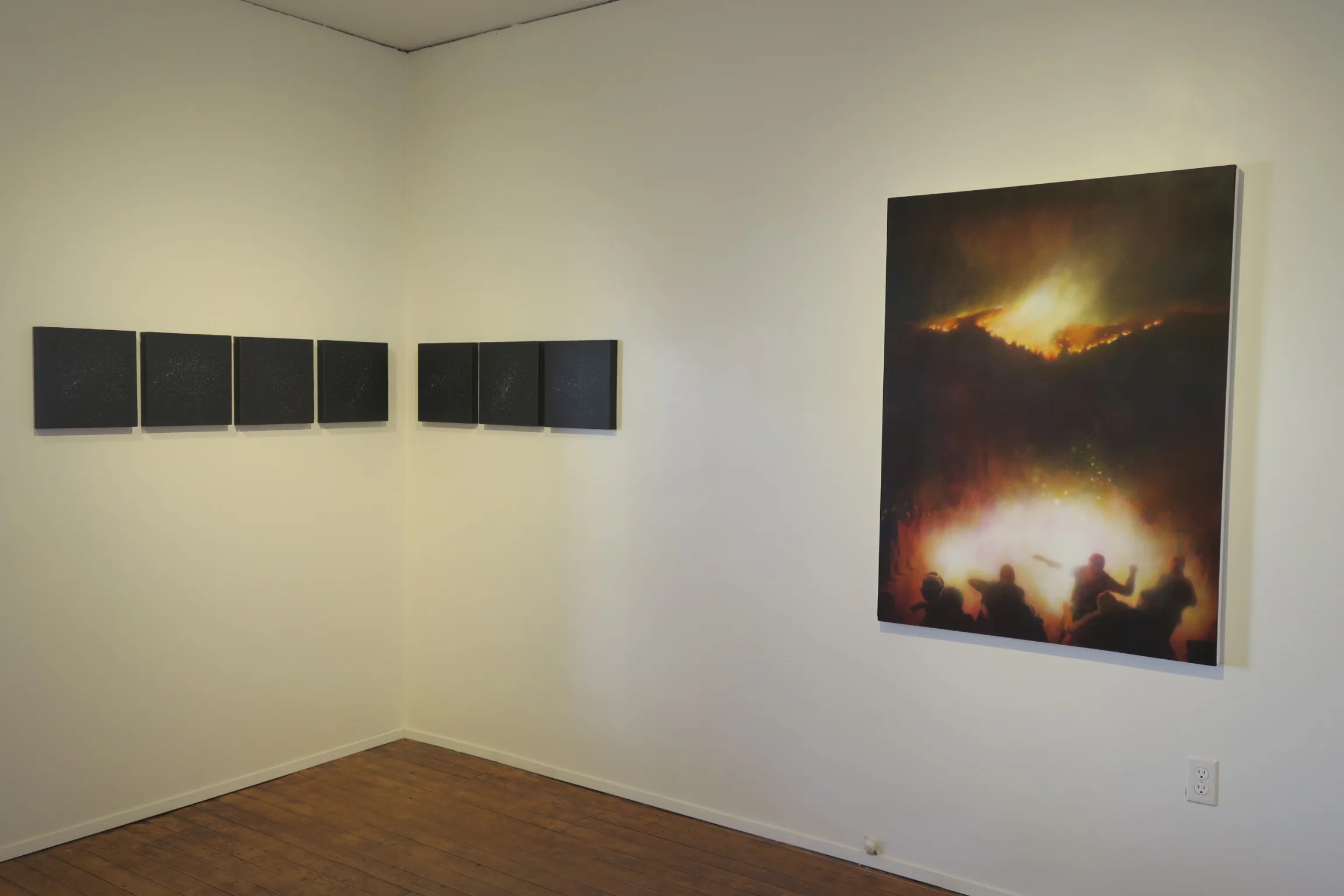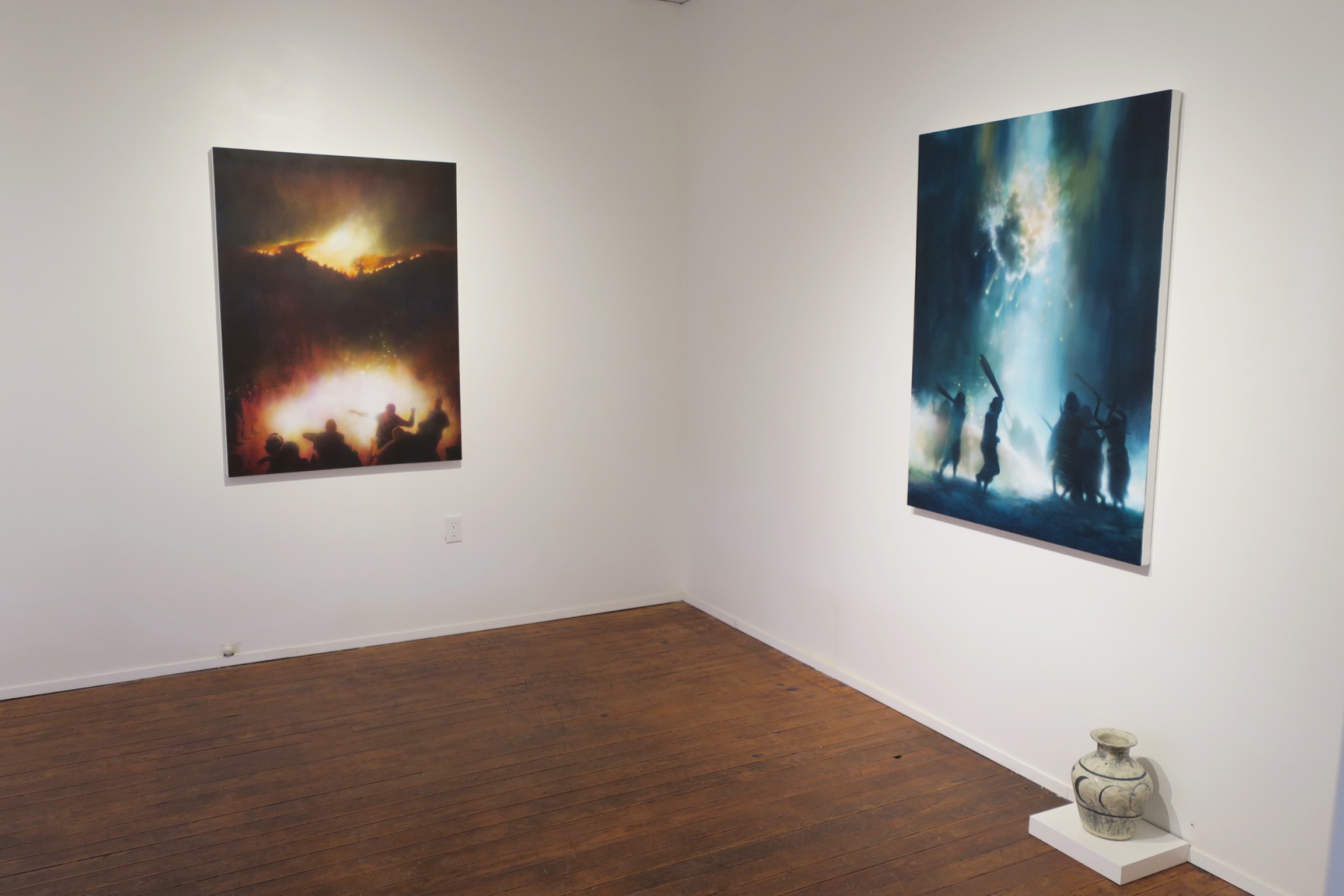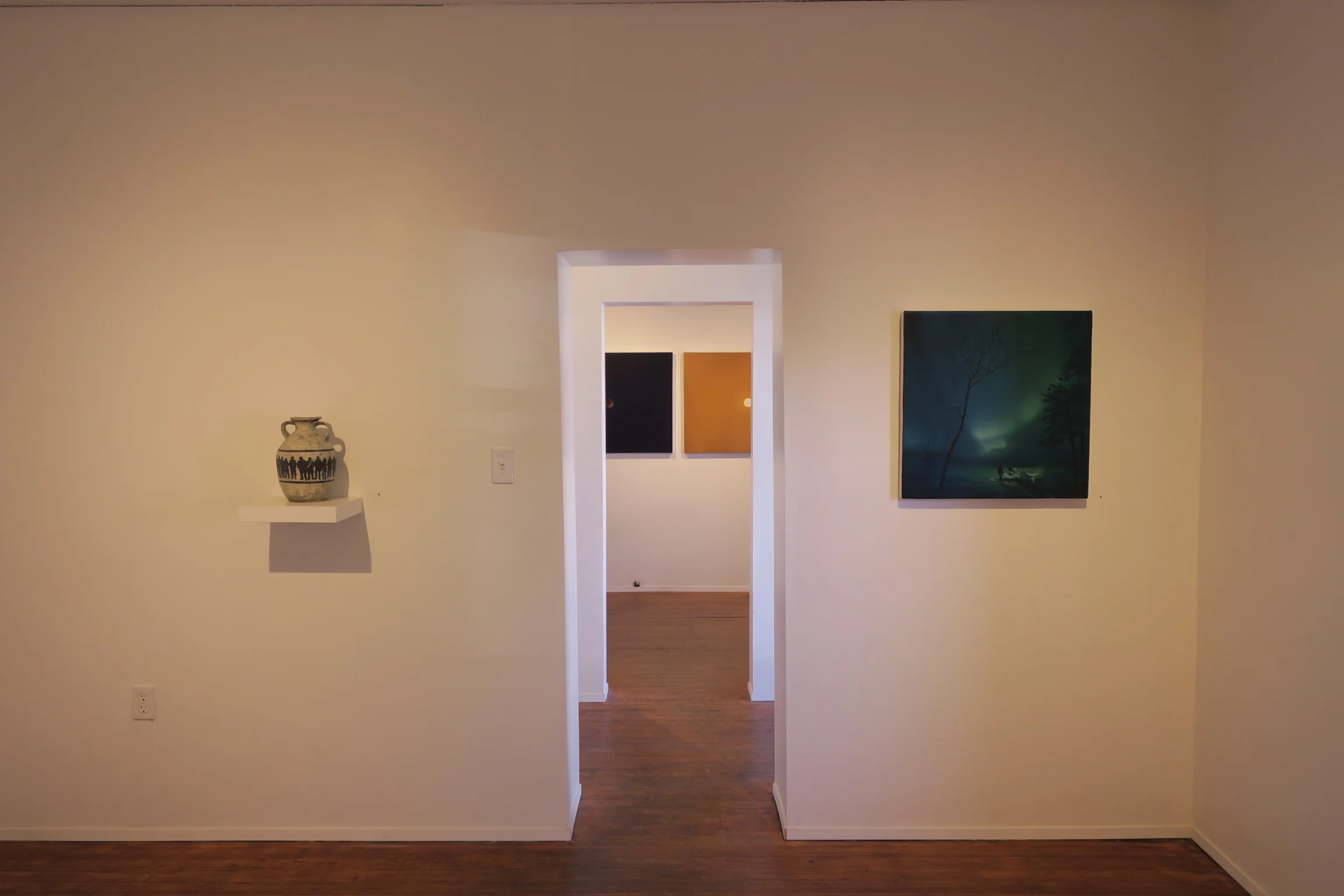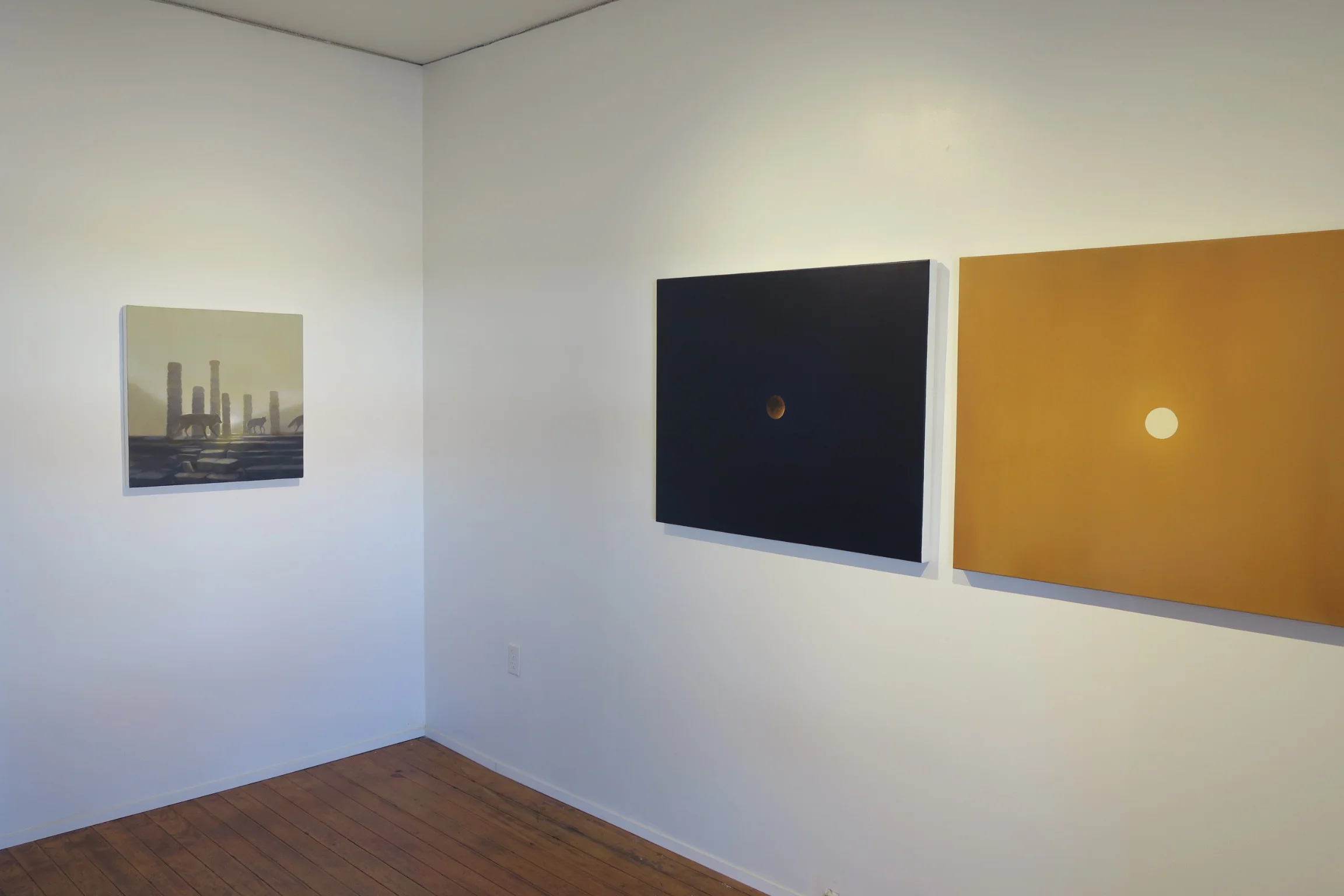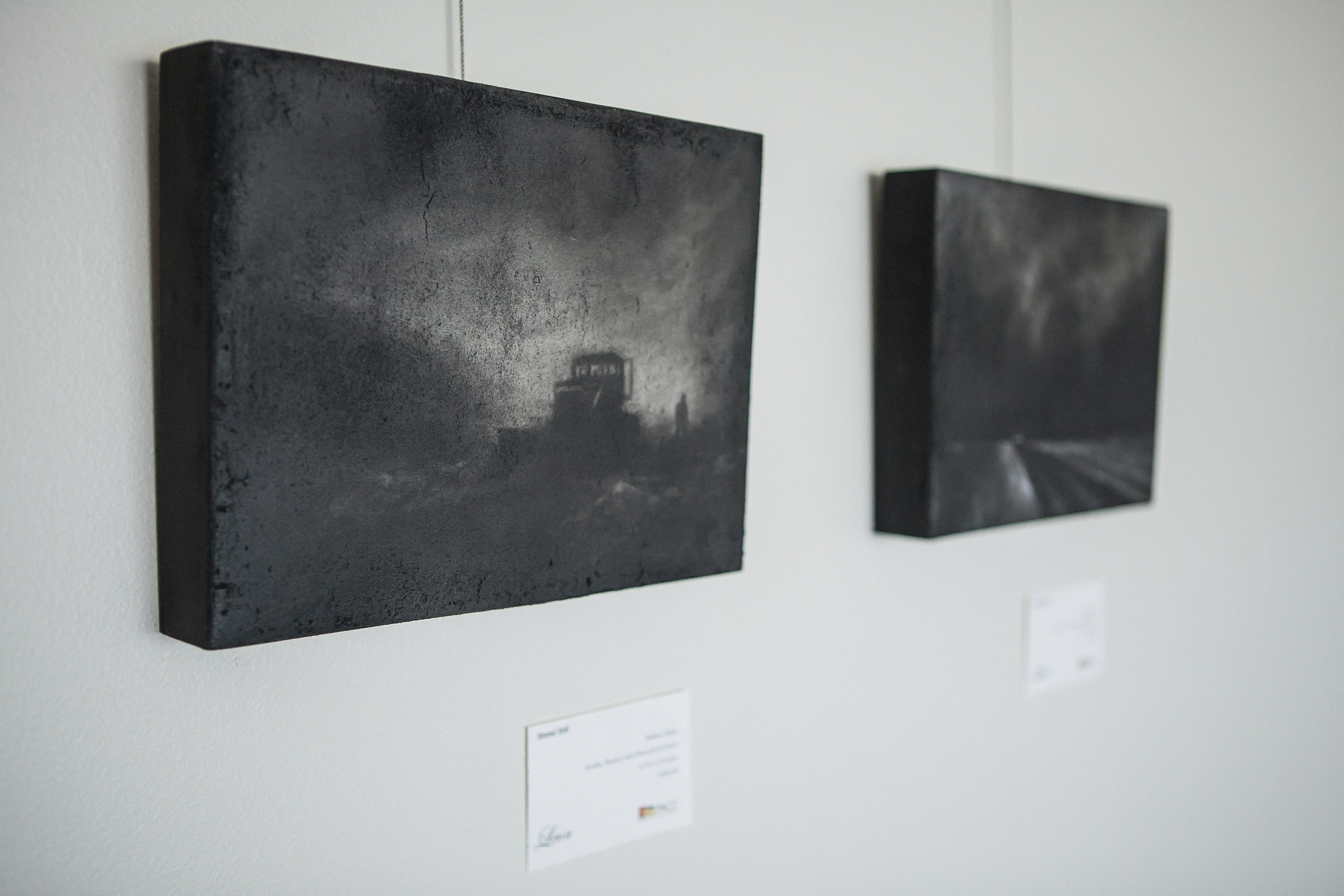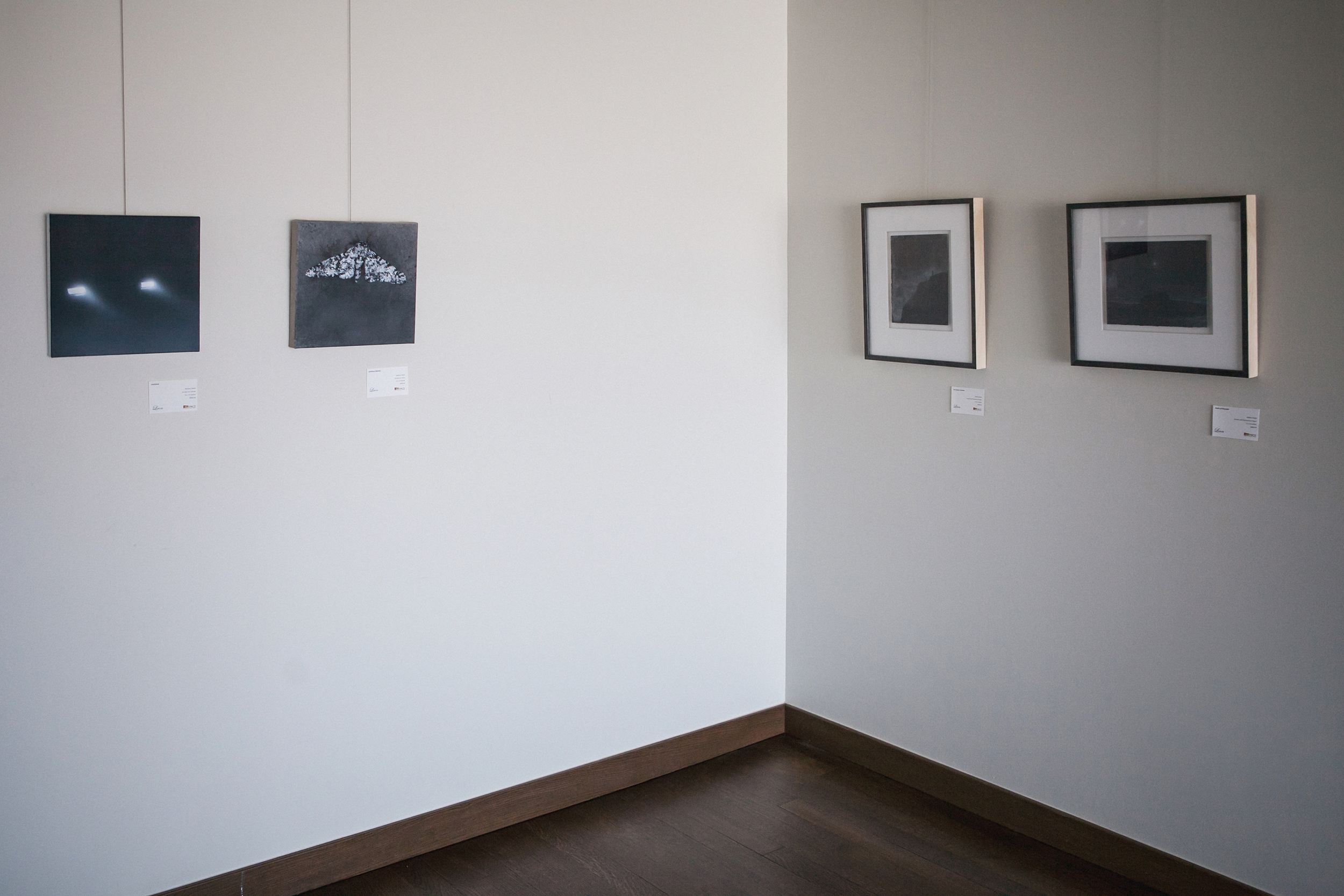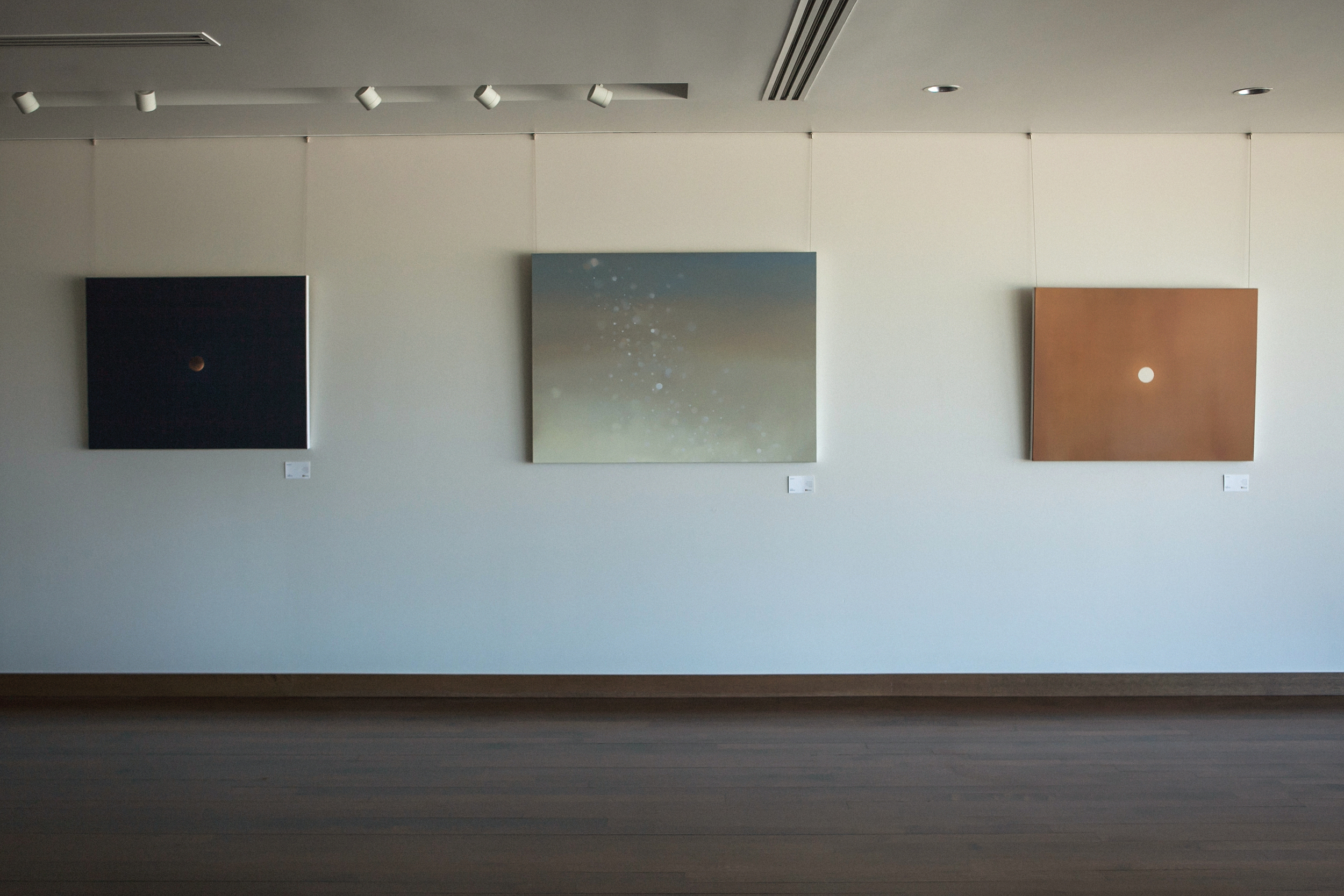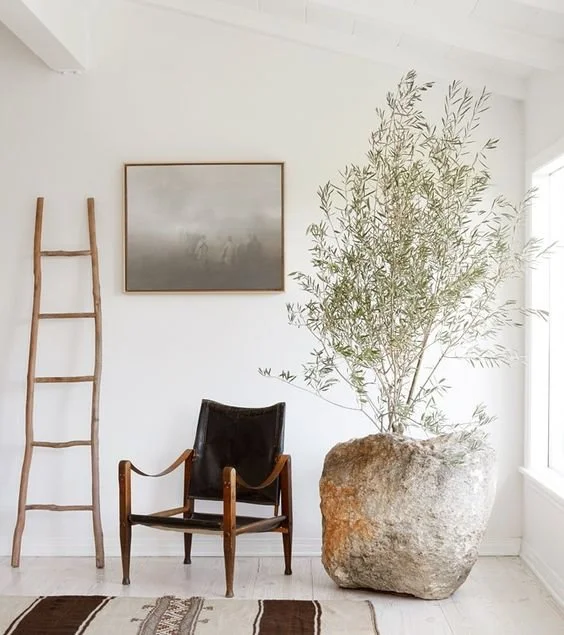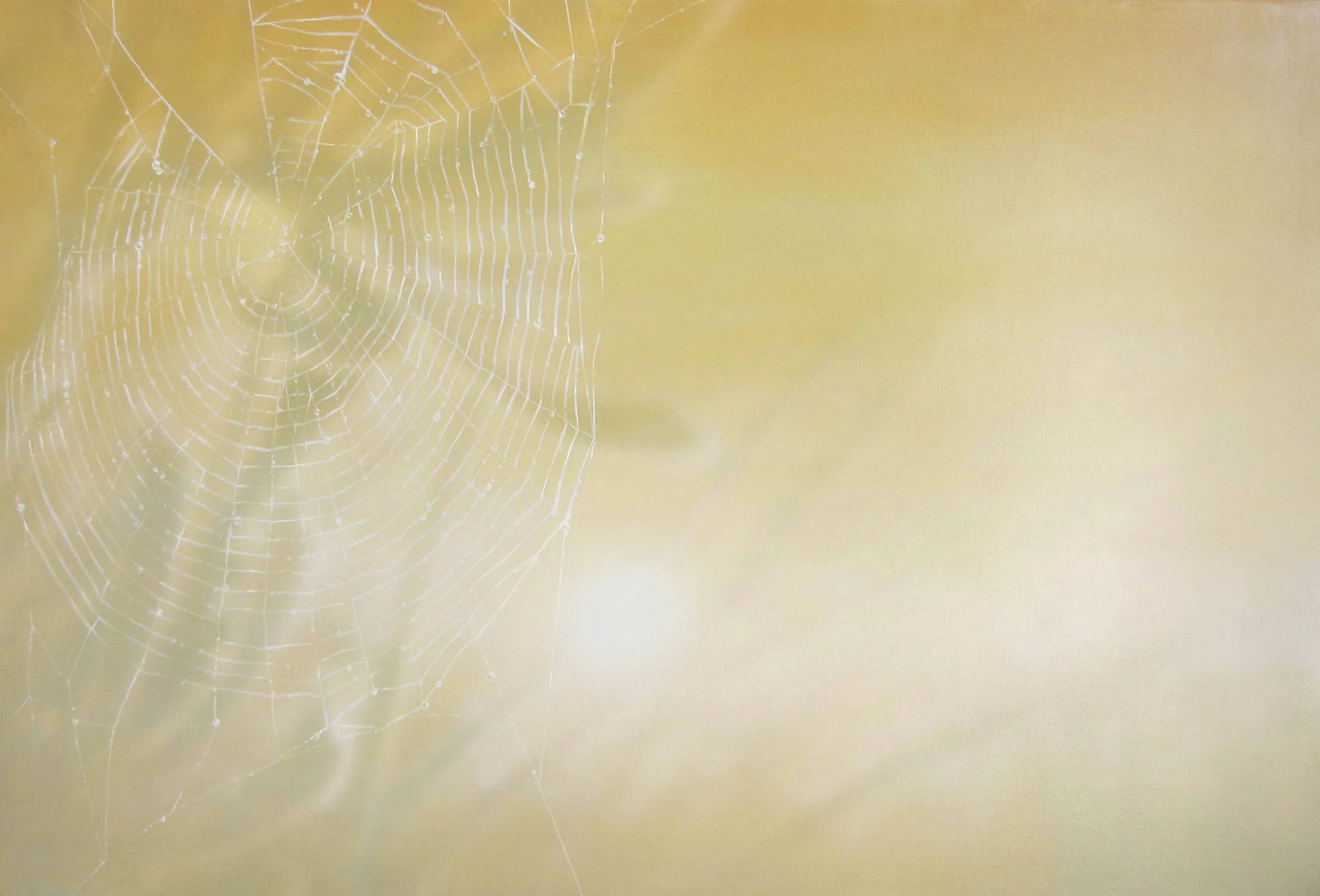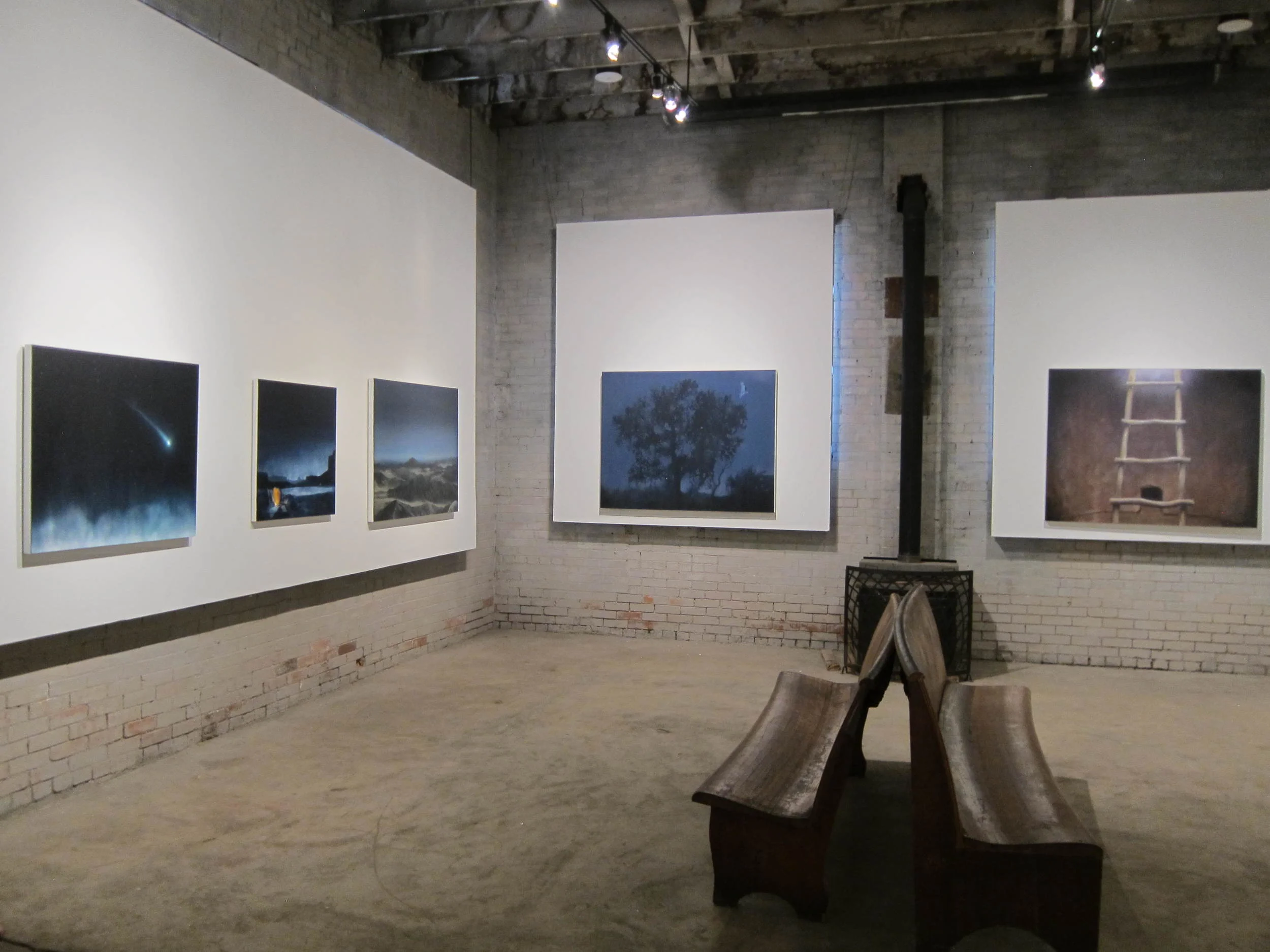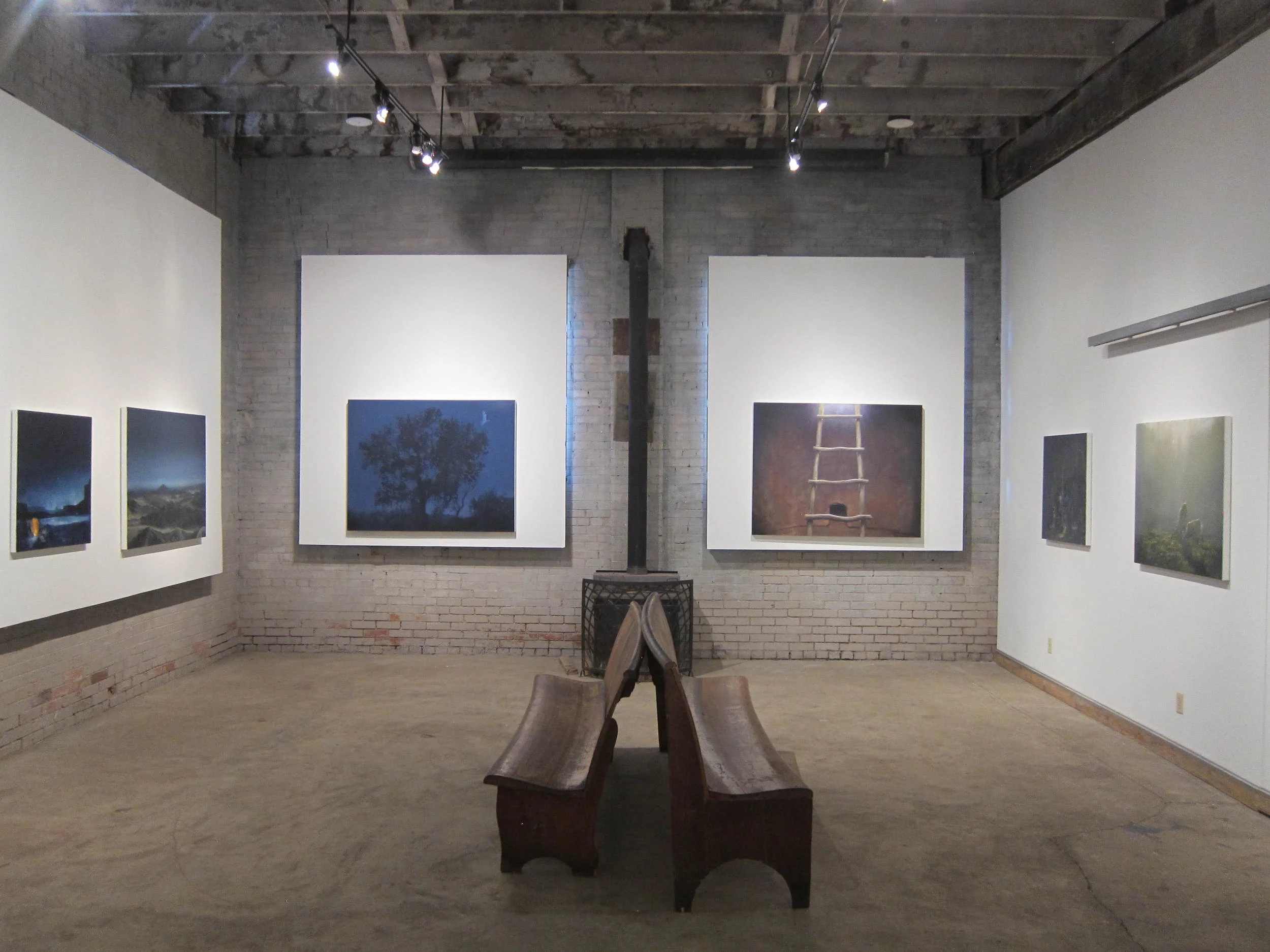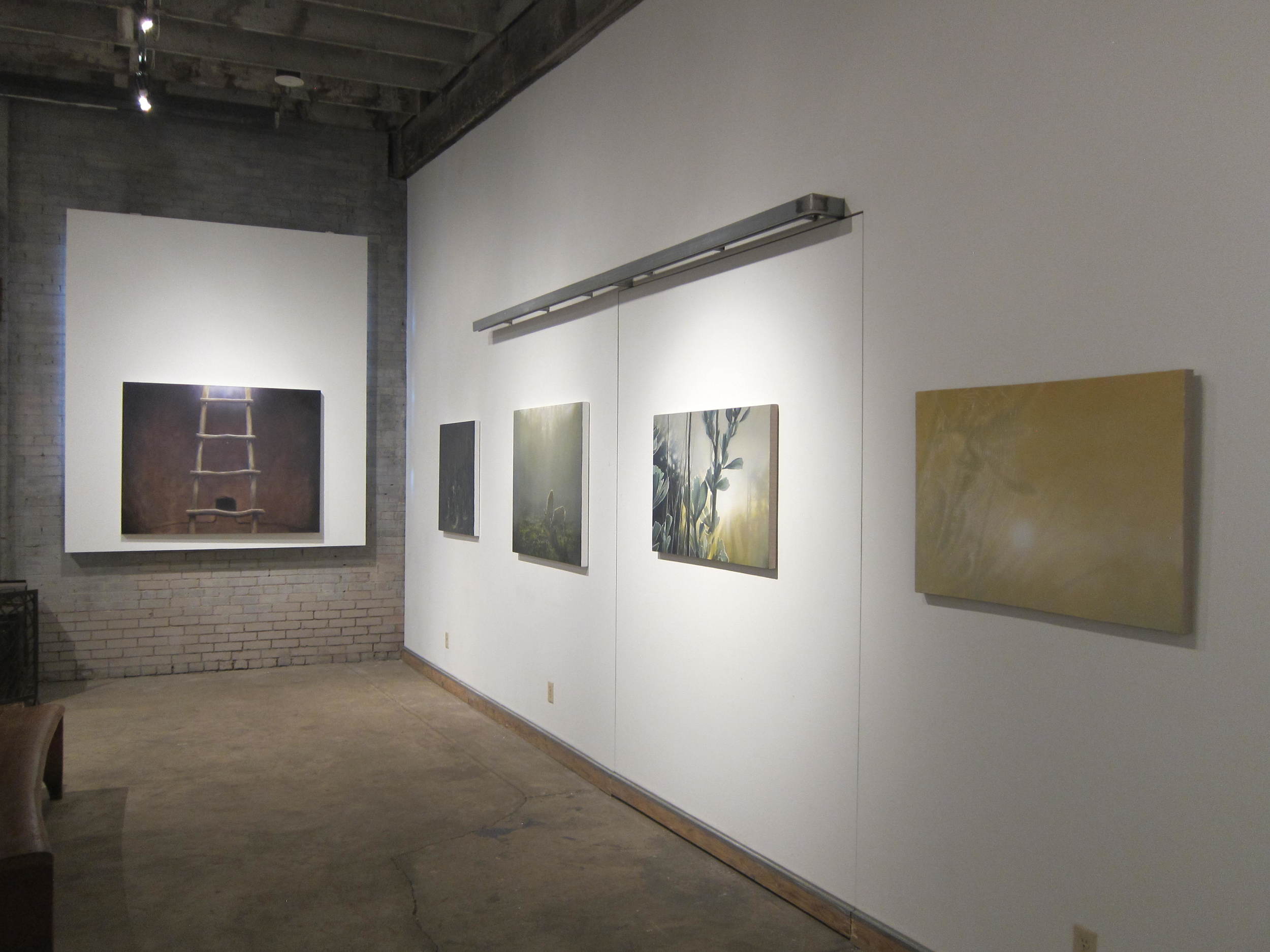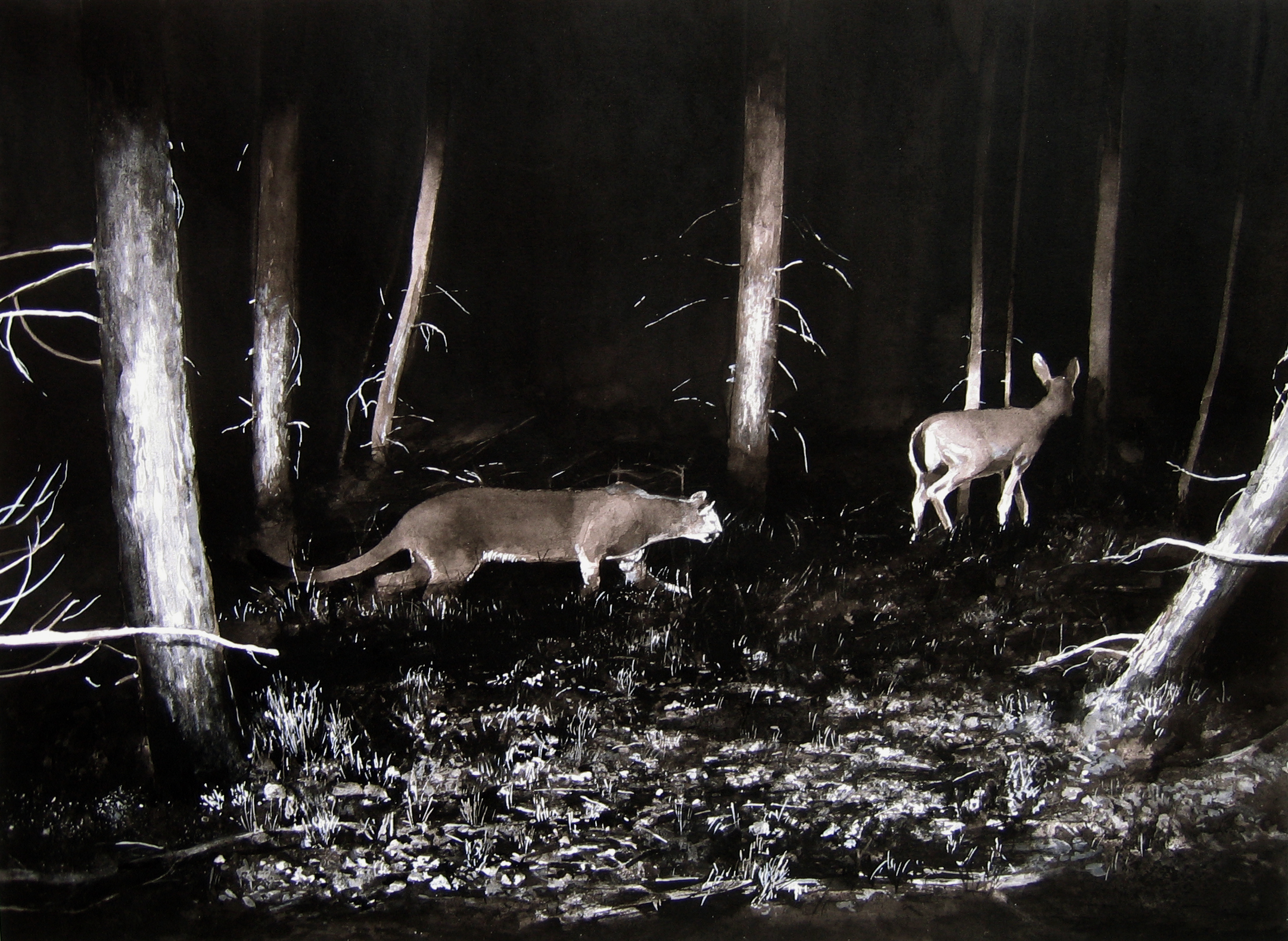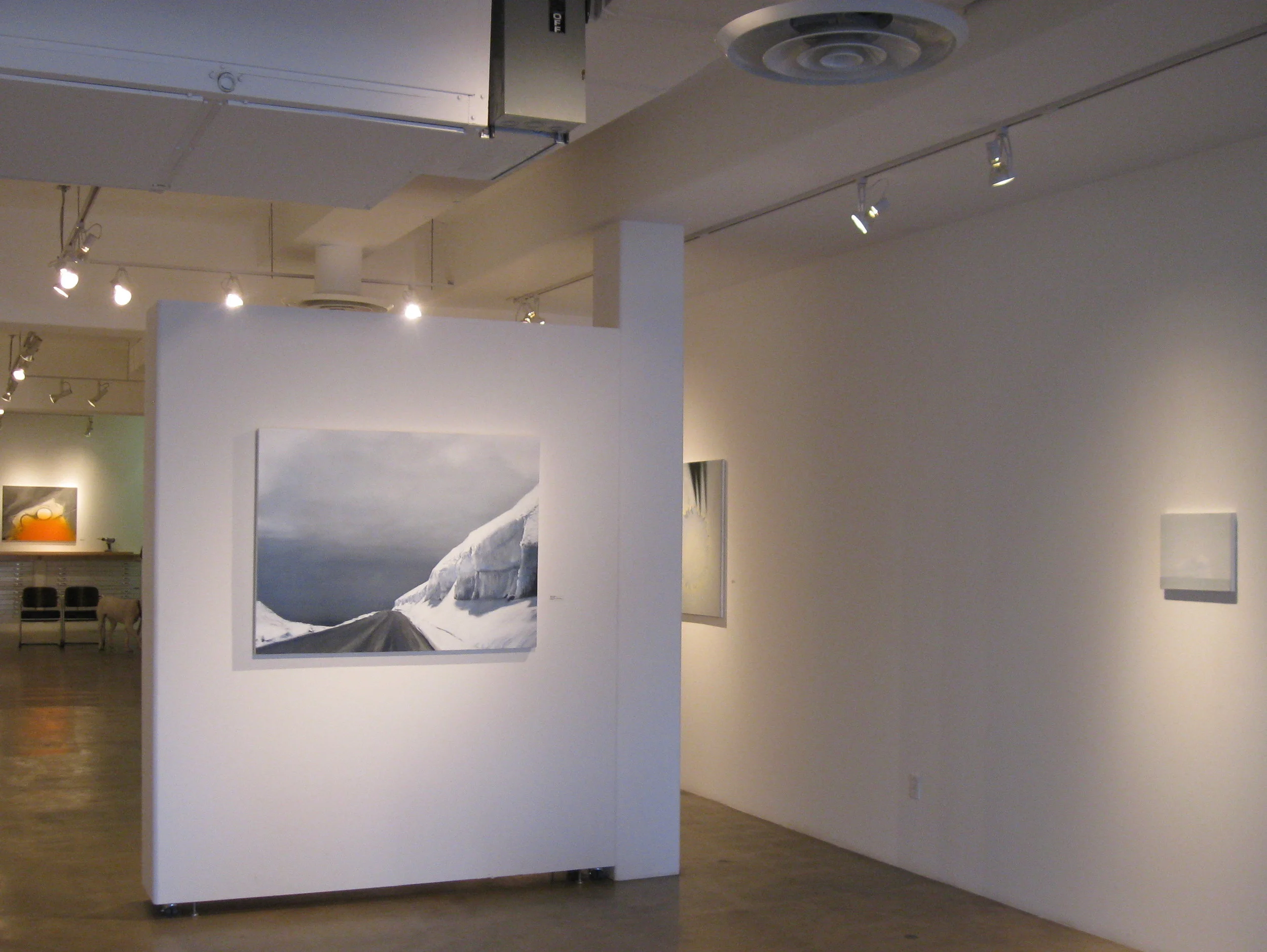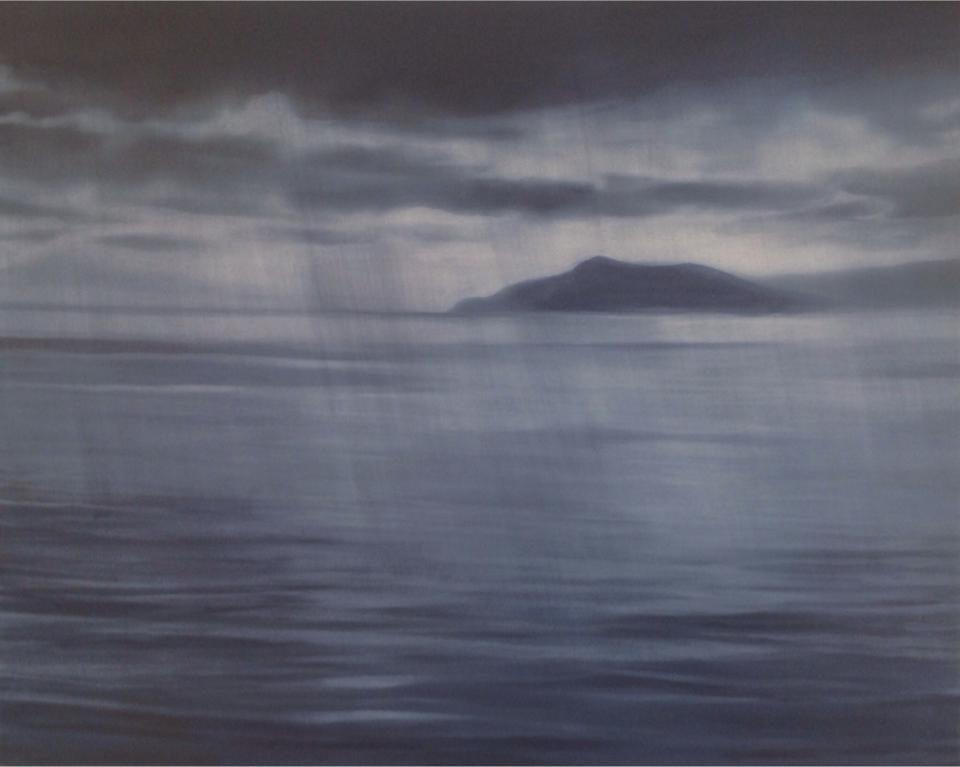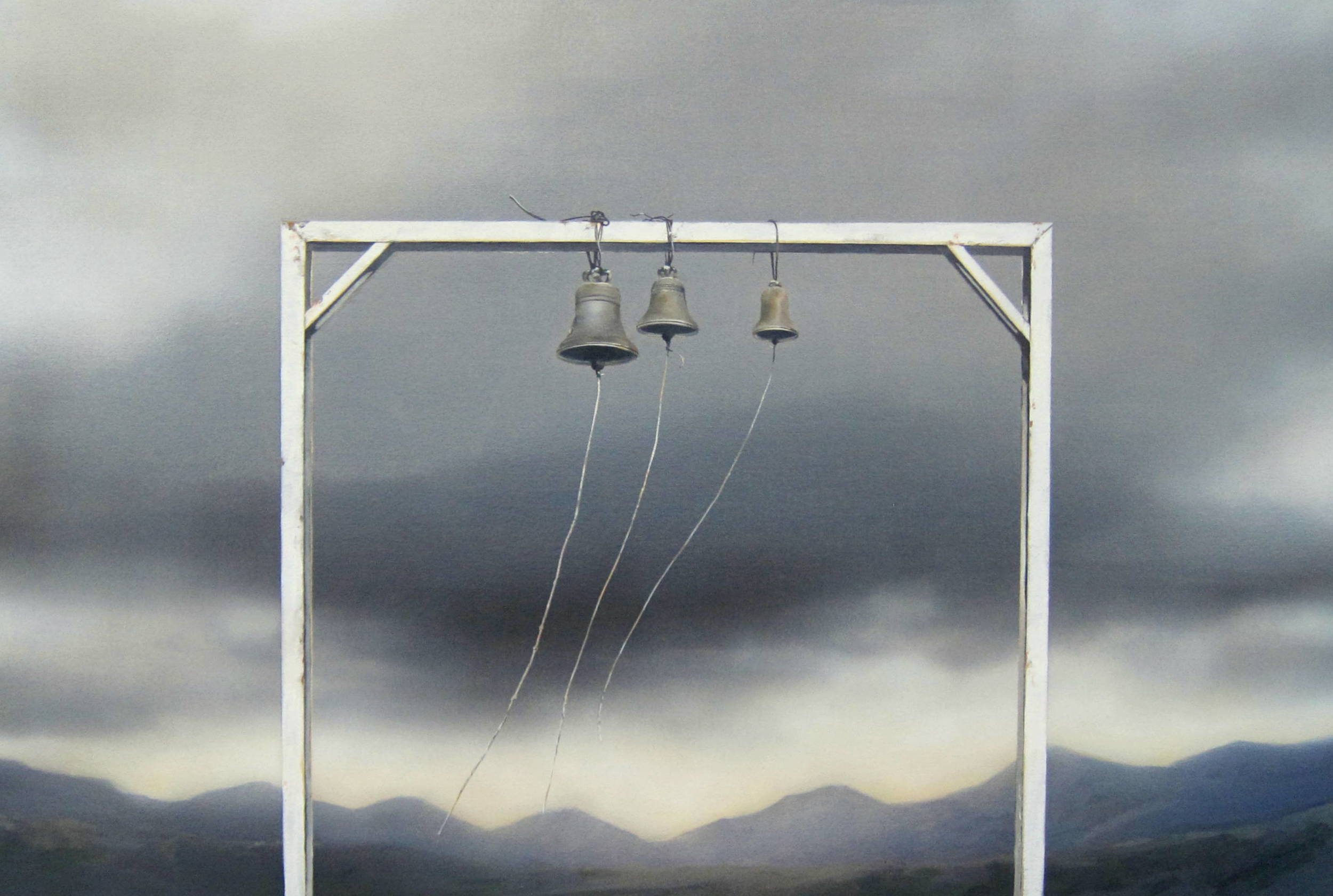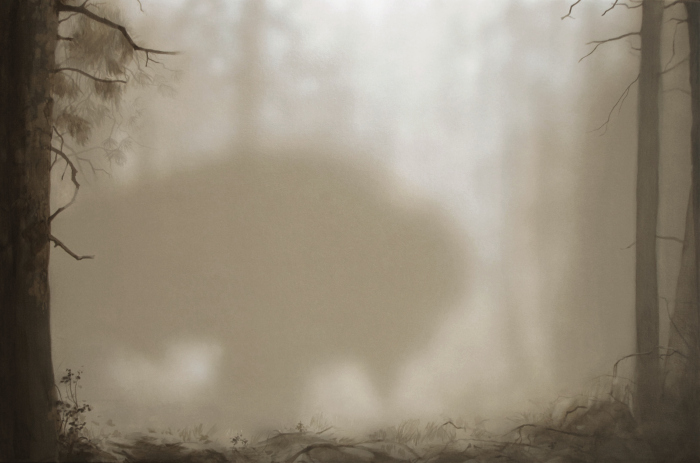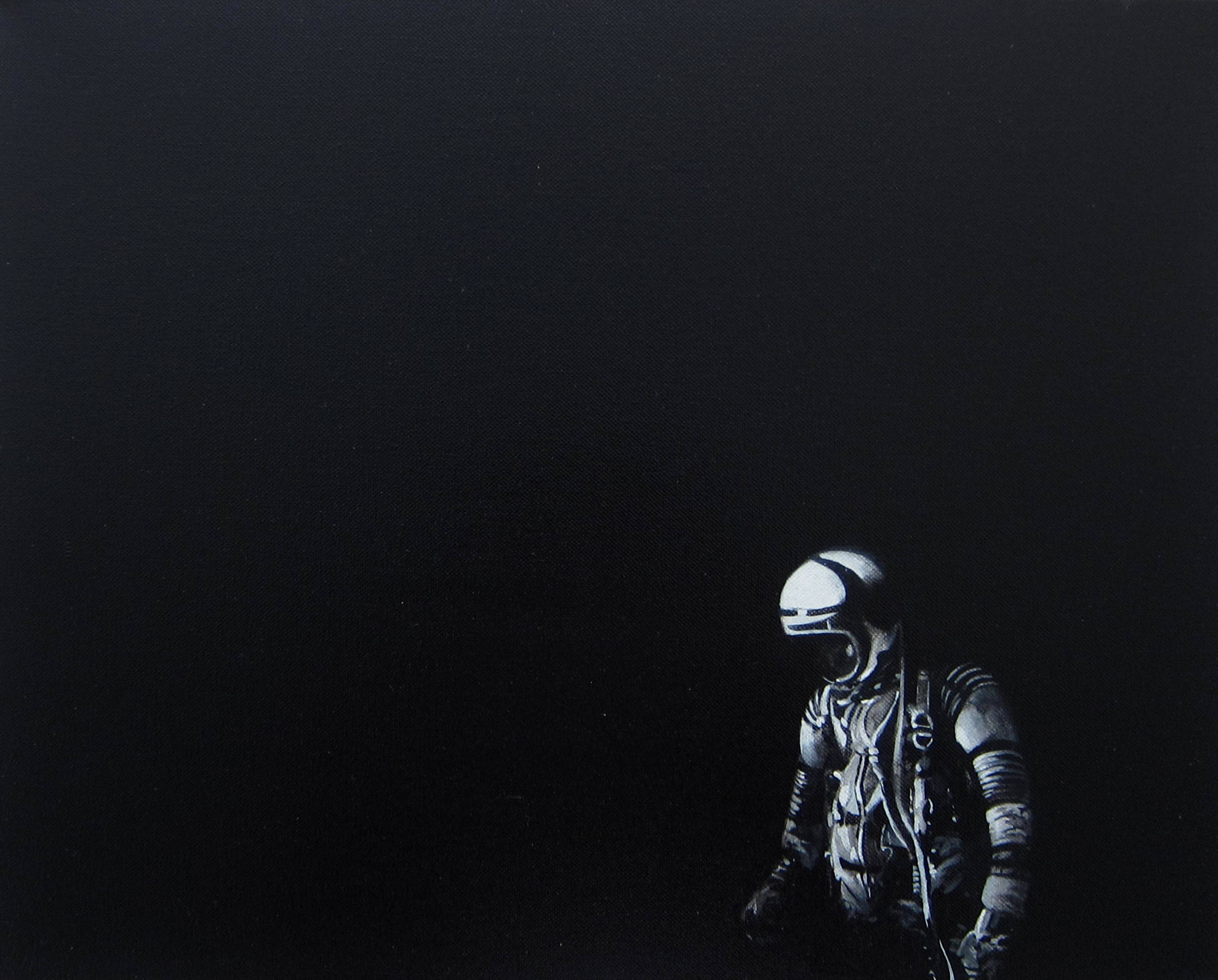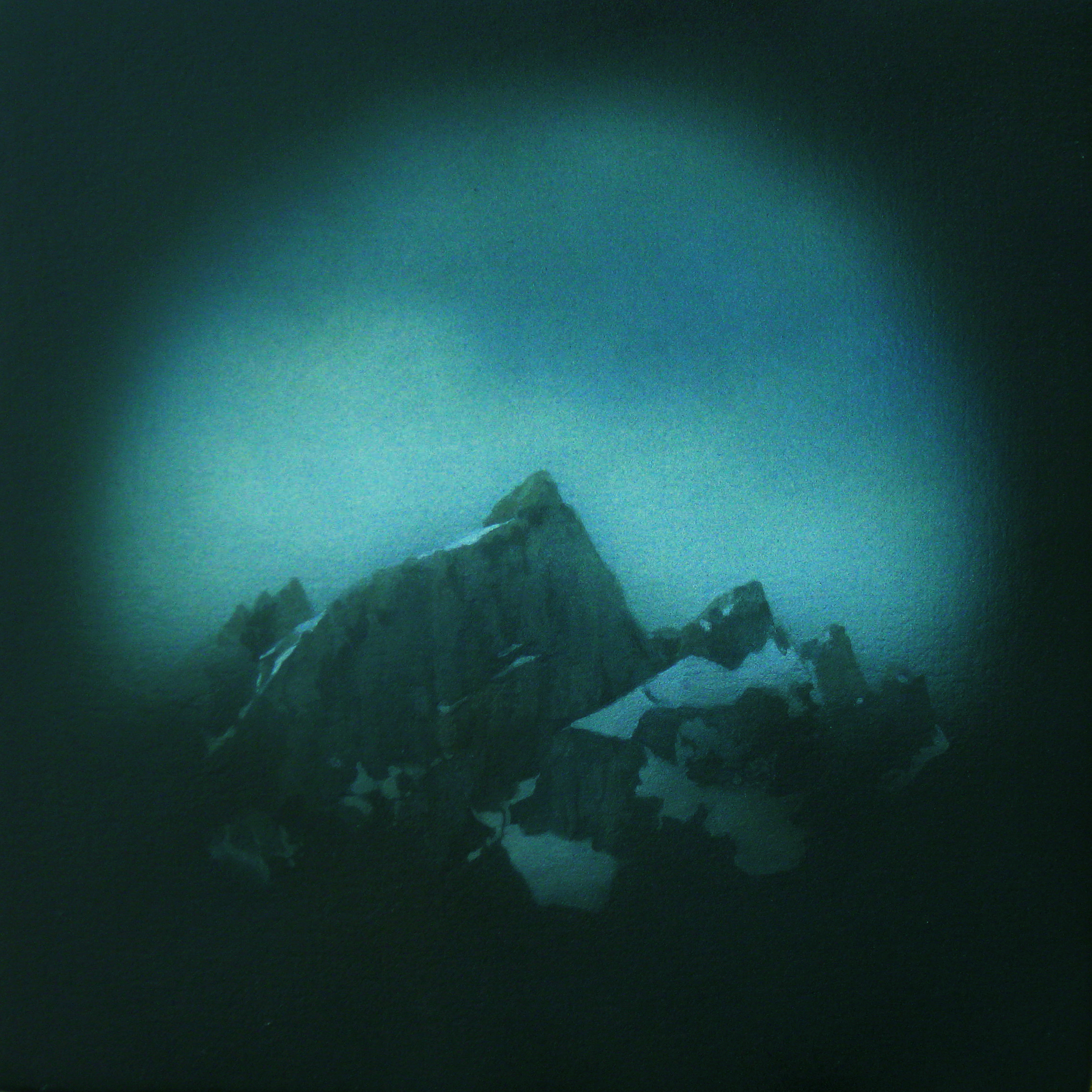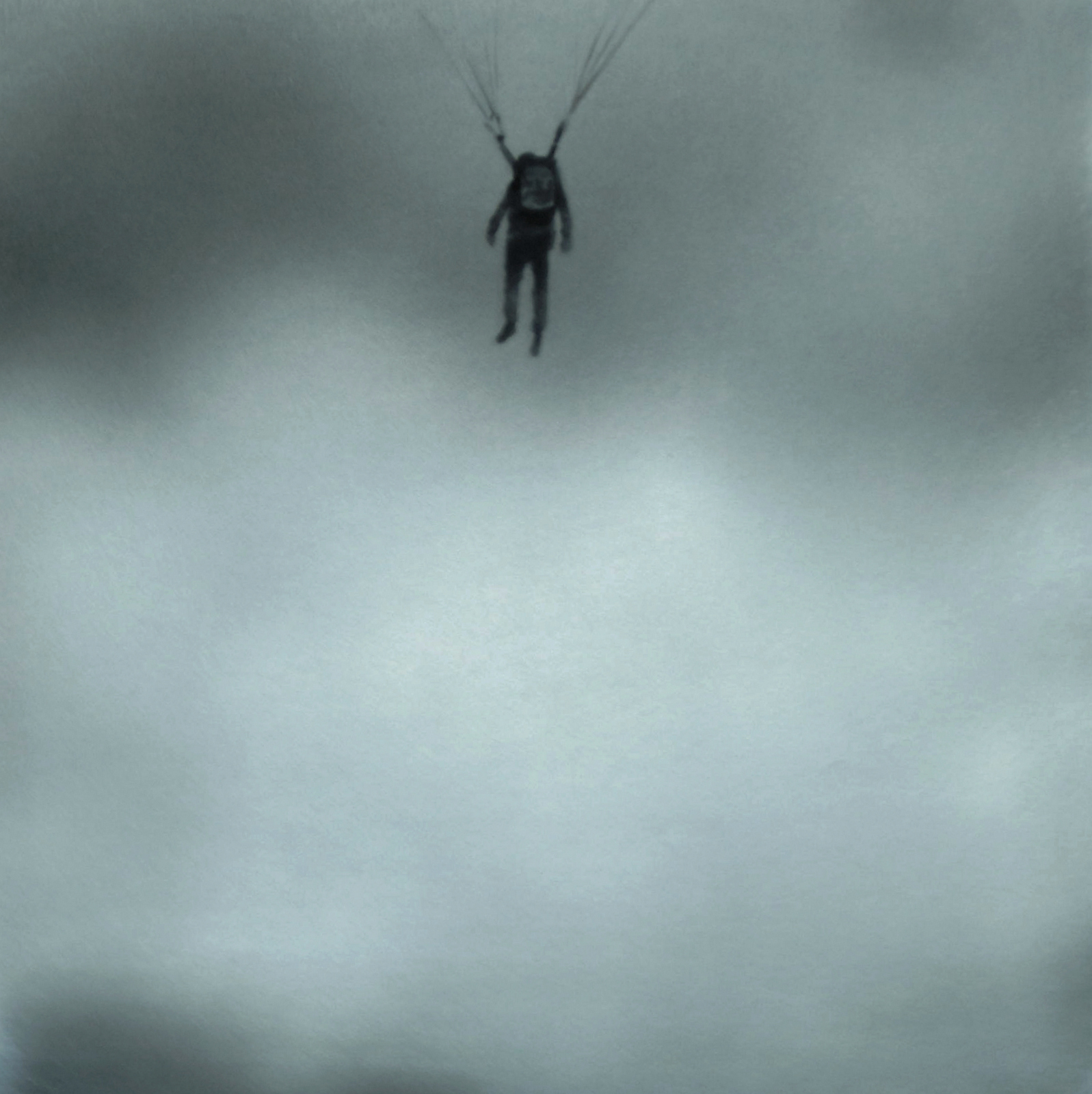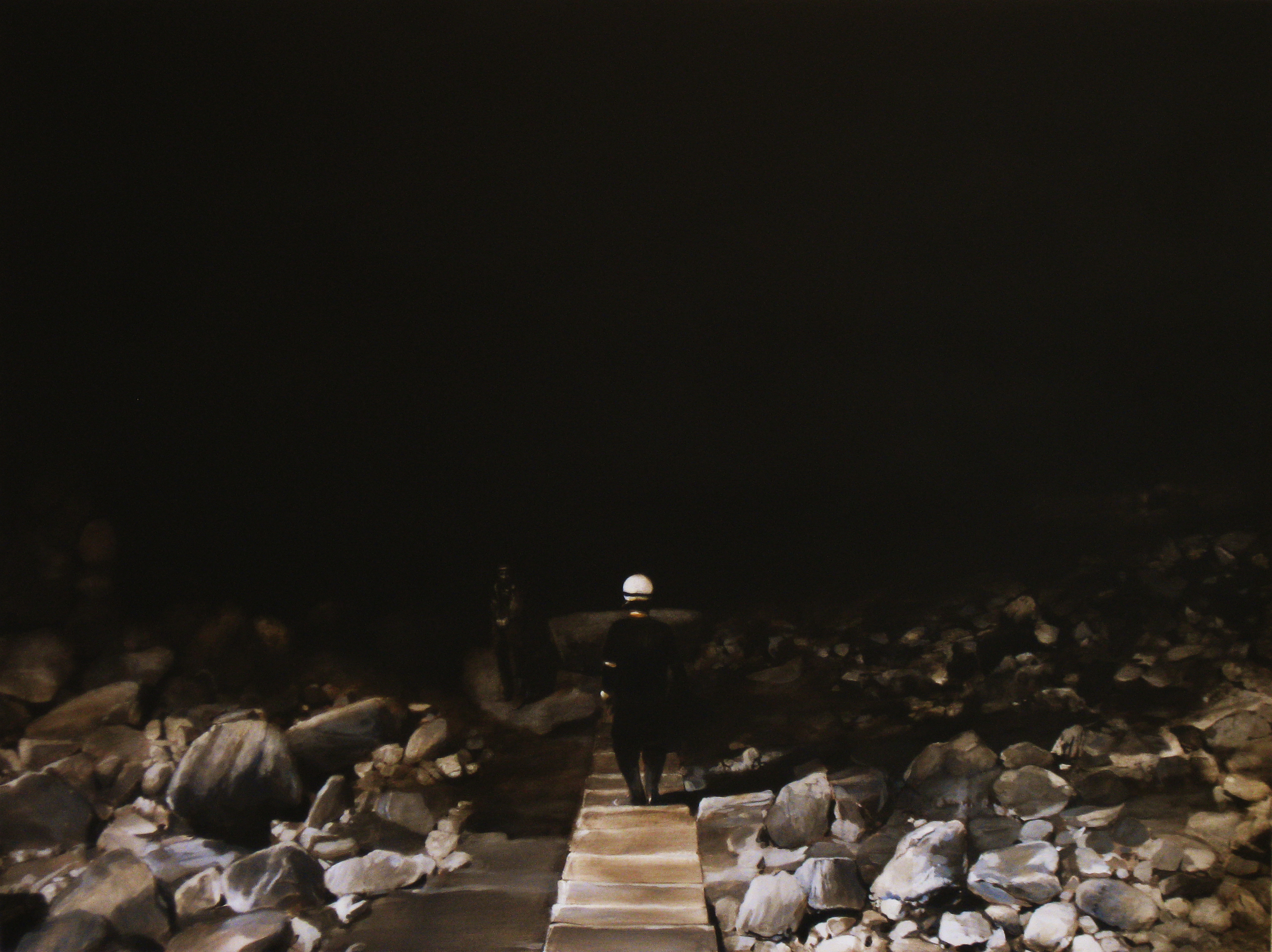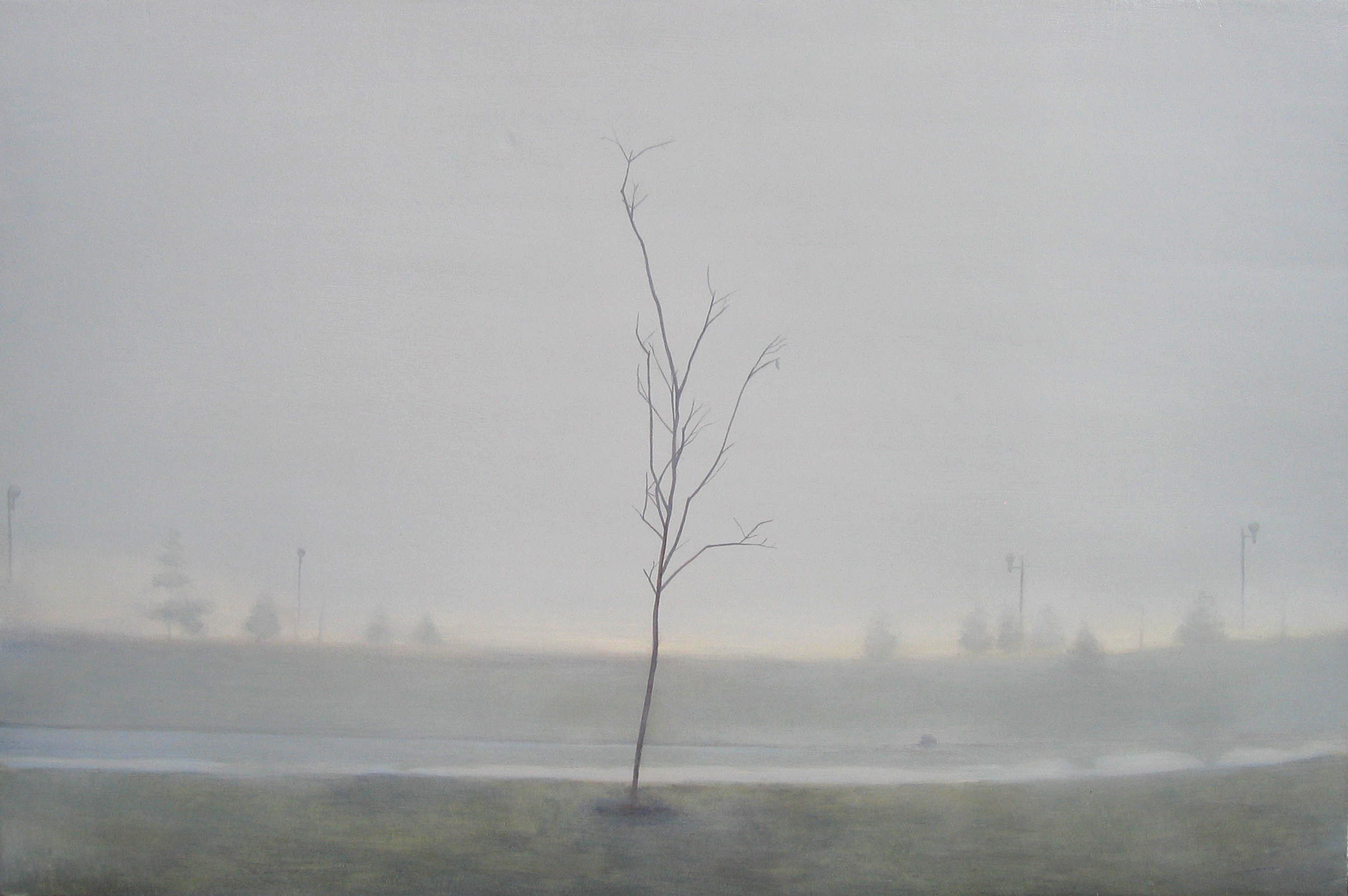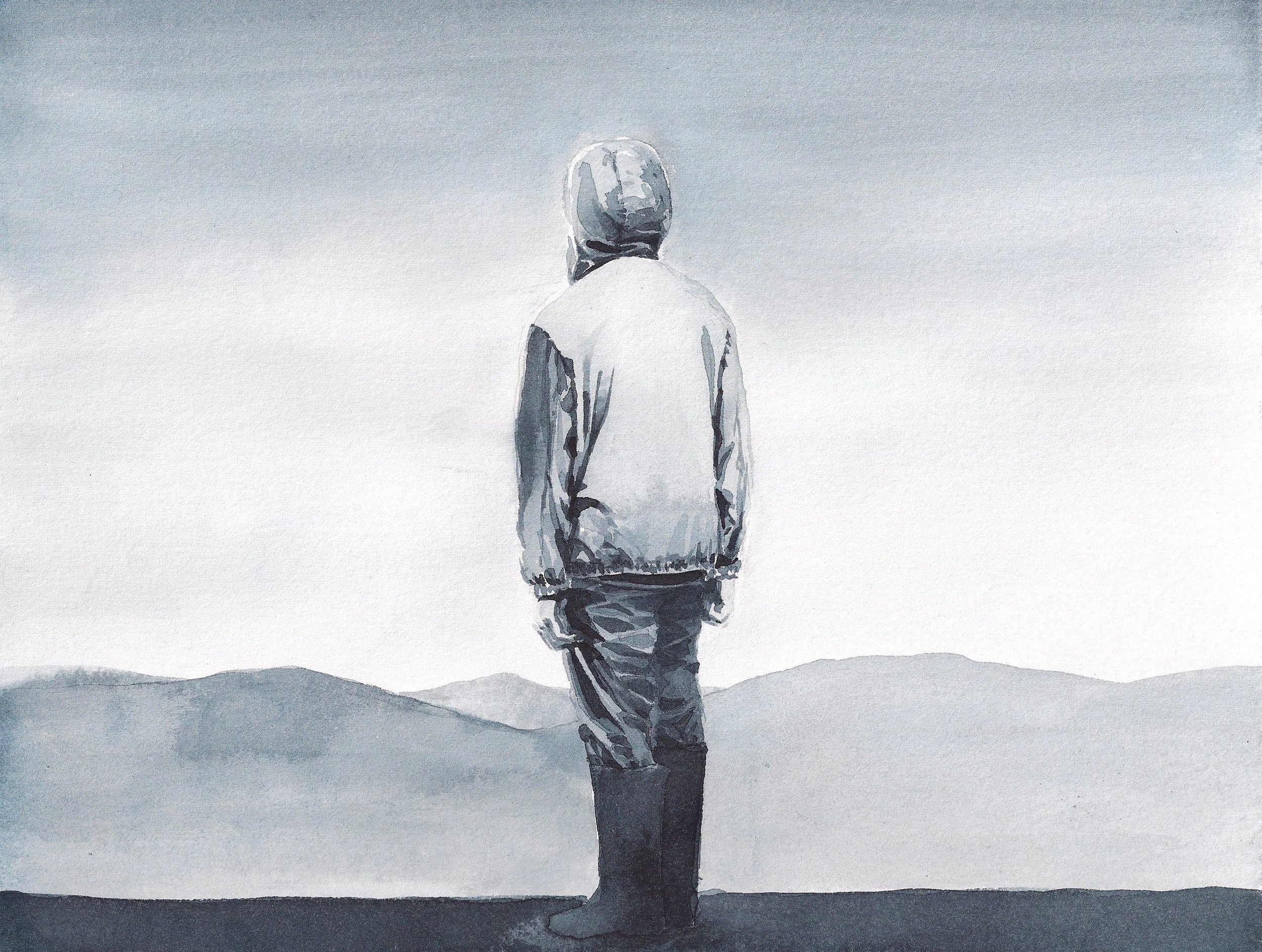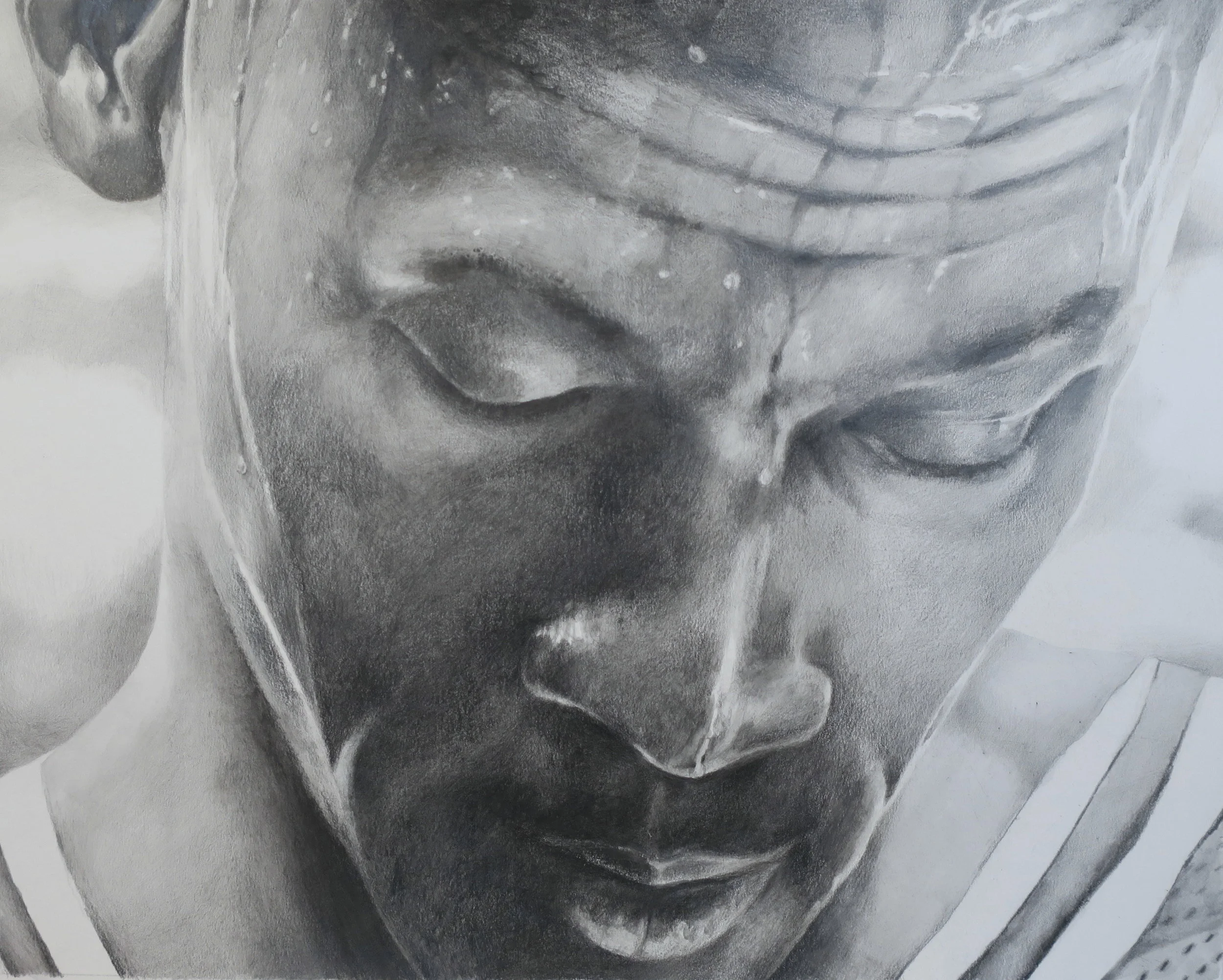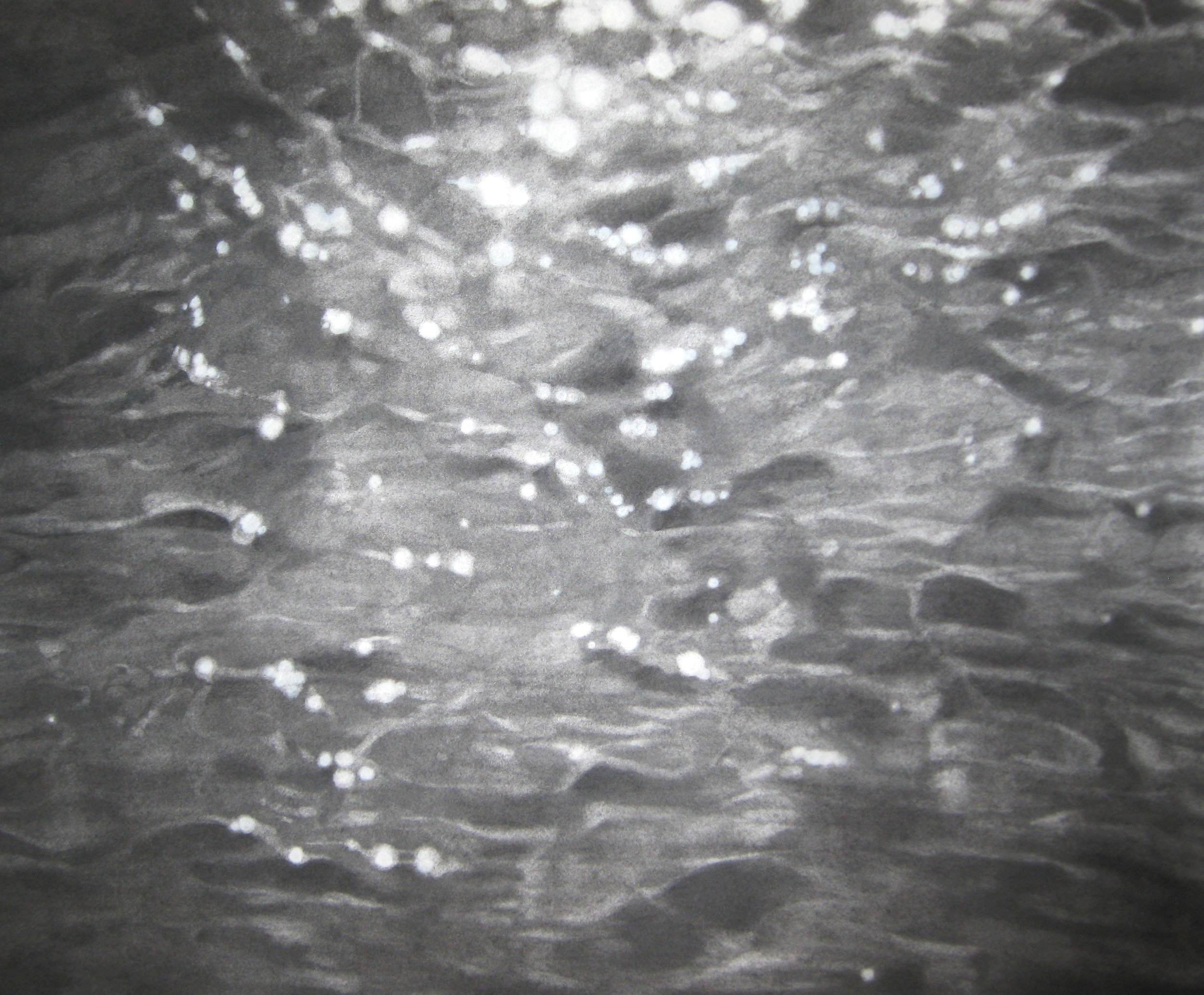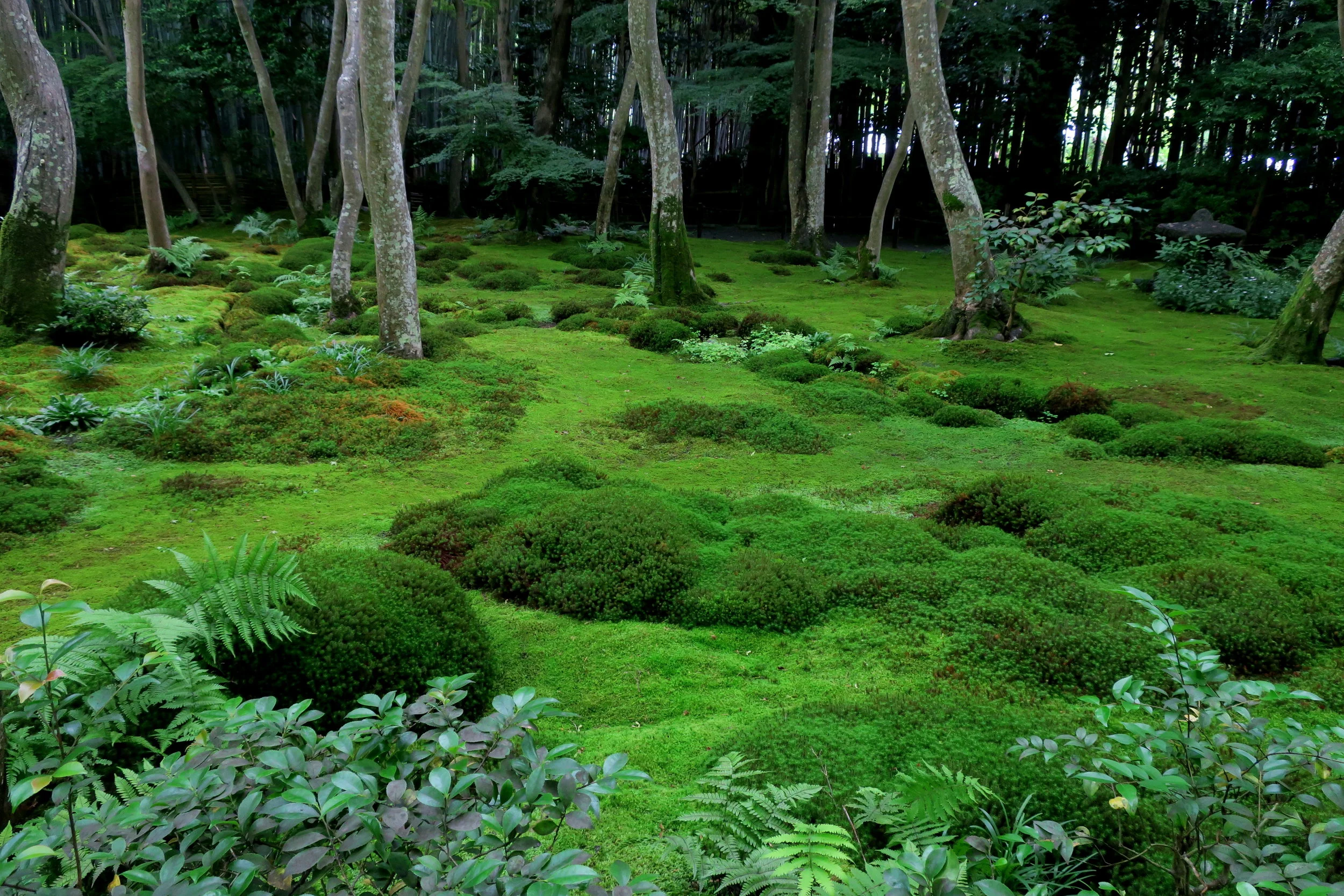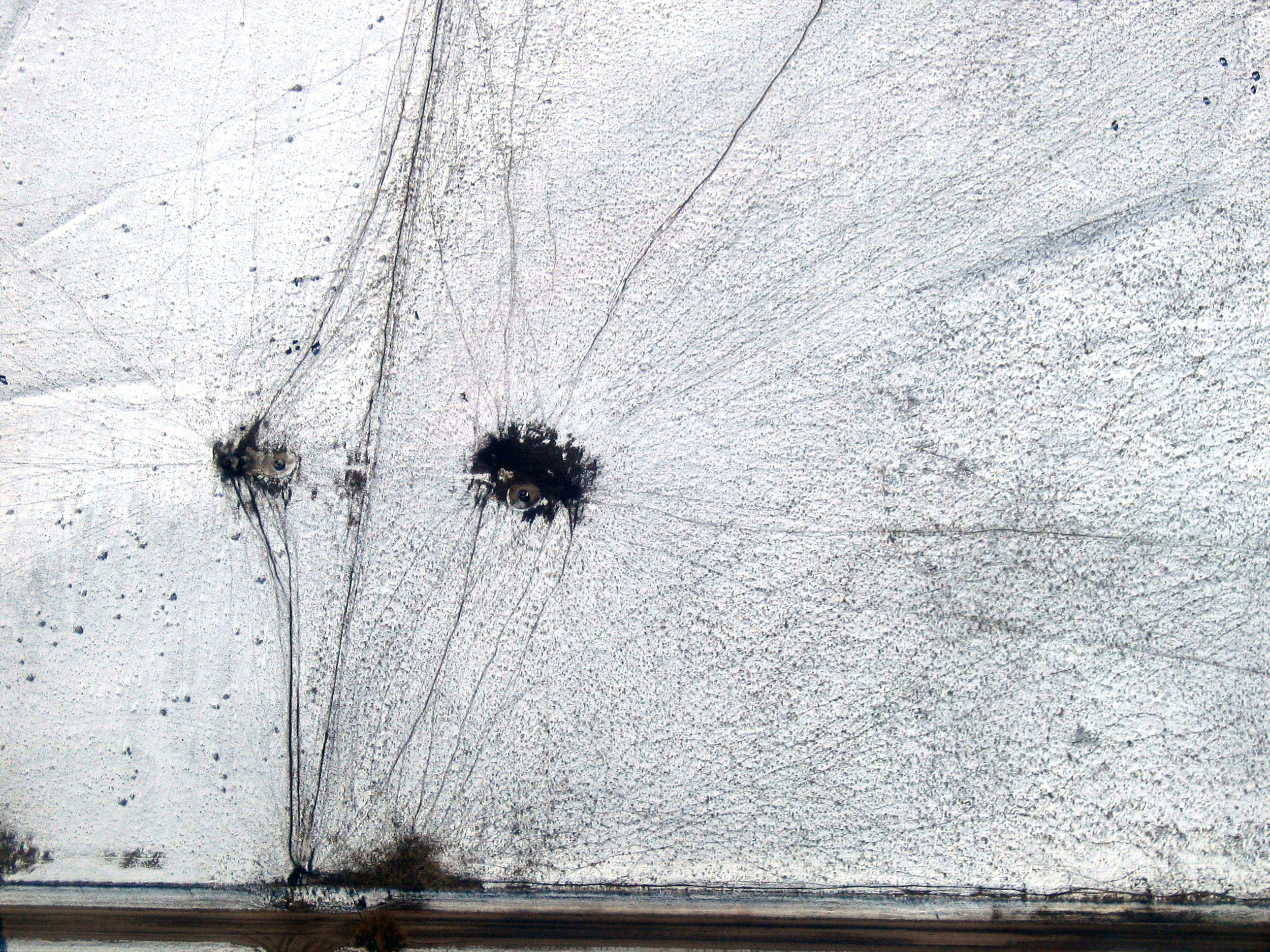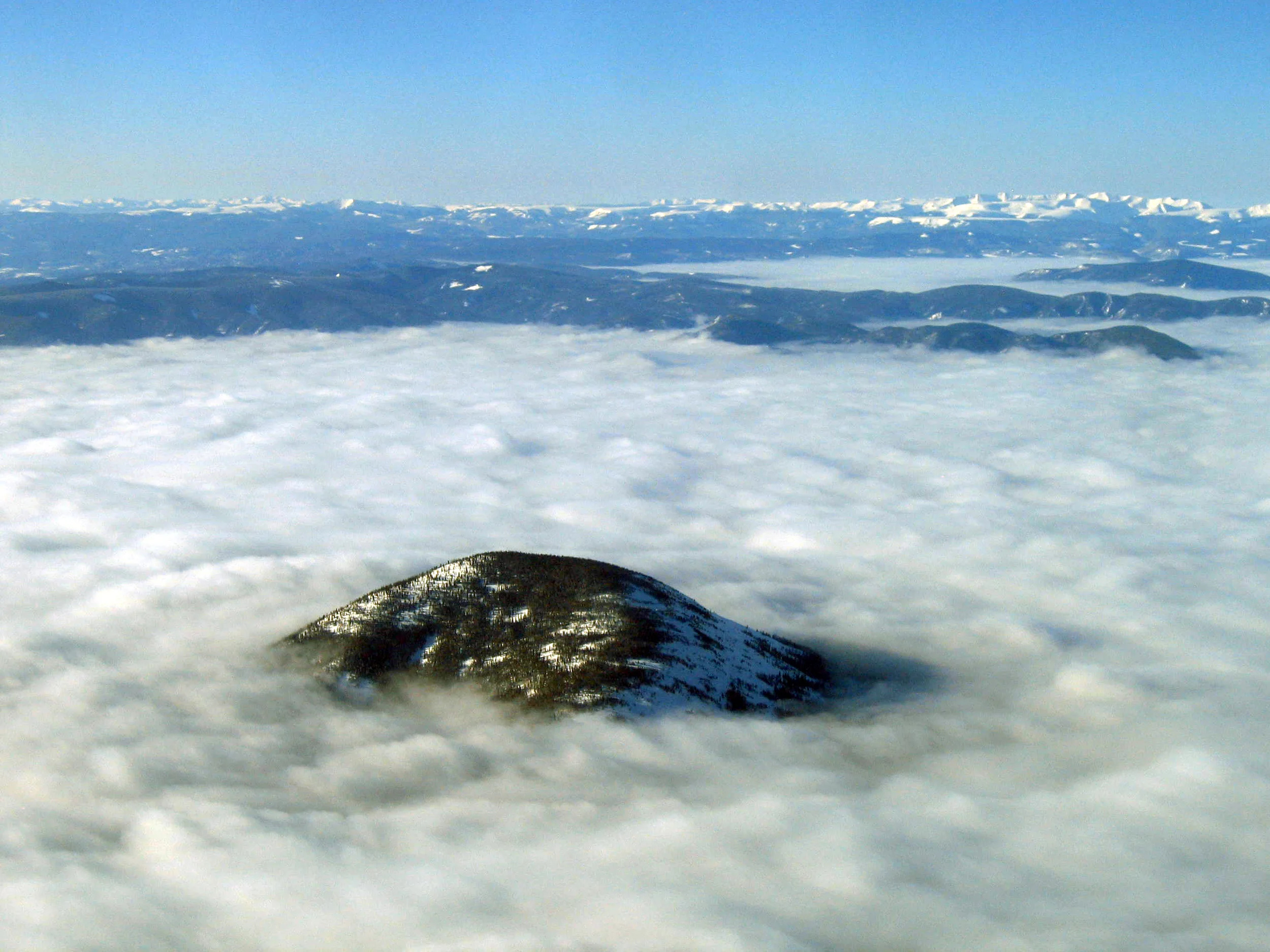The works presented were inspired by an incident in the artist’s childhood in Indiana, when a mammoth skeleton was found during the excavation of a pond in a suburban housing development. That discovery crept into Abels’ artwork in several ways over the years. For a time, the artist focused on paintings depicting housing developments and expansions in the growing Denver area. More recently, his interest has turned to mammoths. It has been proposed that genetically engineering a “cold-weather-elephant” or “de-extinction” of the mammoth could allow that animal to once again roam Siberia. The resurrected megafauna would then graze on small plants, prevent tree growth, and blanket Siberia with enough snow to reflect the sun and reduce global temperatures. From these ideas, Abels explores many existential questions, in his words, ‘Can we undo climate change by resurrecting extinct plants and animals? Can bio-tech and geo-engineering negate the detrimental effects we’ve had on the natural world? The cyclical themes inherent to this proposal interest me greatly.‘
In the exhibition, there is a wide range of expressions, from seascapes on canvas to reimagined stellar constellations meticulously drawn out on paper. The signature piece, "As Above, So Below" consists of a detailed painting depicting the first human footprint on the moon paired against an authentic 40,000- year-old mammoth tooth embedded in a simulated cube of moondust connecting this strange visual echo through time.
The works made for Recurring Dreams address our natural tendency to want to atone for past environmental wrongs, with many now wanting to put their faith in a technological solution. Prehistorical people commemorated the mythical passage from “chaos to cosmos” - unformed to formed – along with the cycles of the seasons. Each year was witness to the world’s restoration in the form of a new spring or a new moon. Regeneration of the earth was an annual reminder of the act of creation. Per the artist, ‘The timelessness inherent in these worldviews is appealing to me in an age when I frequently find myself reading about all that is disappearing on this planet.’ The current works are an elegy, but equally, are about the potential of re-creation.
Read a review of the exhibition on Daria Magazine here.



